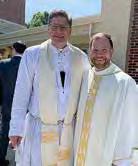
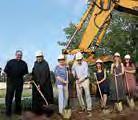




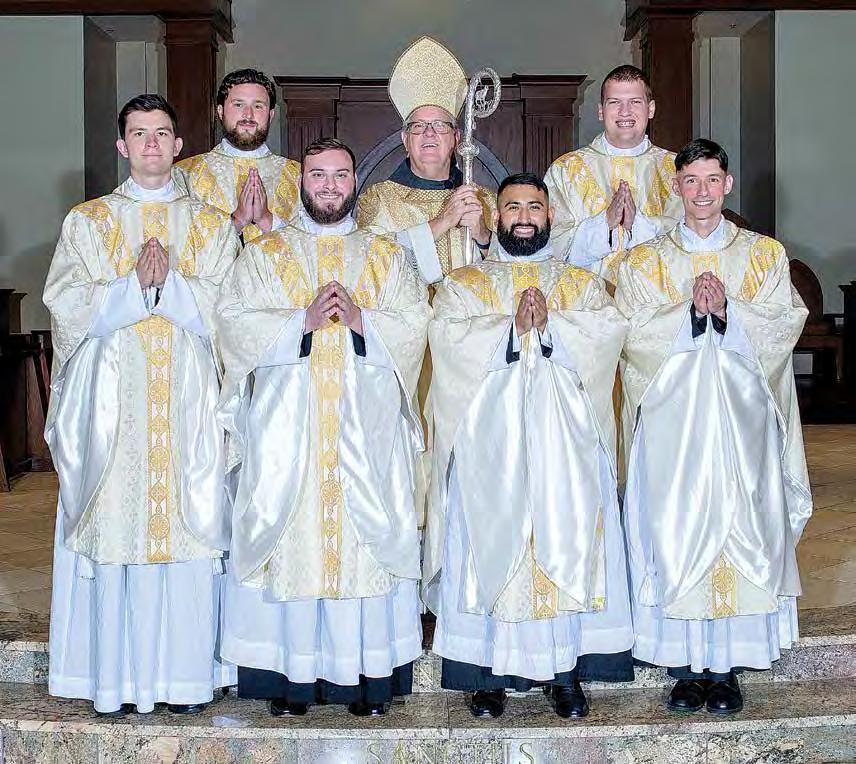
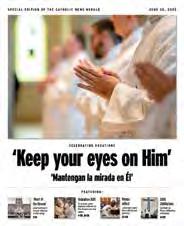
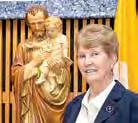
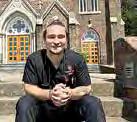
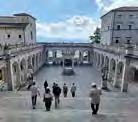












JUNE 20, 2025
VOLUME 34 • NUMBER 18 1123 S. CHURCH ST. CHARLOTTE, N.C. 28203-4003 catholicnews@rcdoc.org
704-370-3333
The Most Reverend Michael T. Martin, OFM Conv., Bishop of Charlotte
Contact us 2A
Español 12A-13A
Our Diocese 4A-11A
Our Faith 3A
Scripture 3A, 13A
U.S. news 15A
Viewpoints 18A-19A
World news 16A
n one of his first addresses May 11 from the central balcony of St. Peter’s Basilica, Pope Leo XIV told the crowd of about 100,000 gathered for Mother’s Day how critical it is to support young people as they discern their paths in life. “It is important that young men and women on their vocational journey find acceptance, listening and encouragement in their communities, and that they can look up to credible models of generous dedication to God and to their brothers and sisters,” the pope said. He told young people in the square, “Do not be afraid! Welcome the call of the Church and of Christ the Lord.” As we celebrate the ordinations this month of 13 men in our diocese as priests and deacons, there are many ways we can support them and the youth who may be considering following in their footsteps:
Prayer is one of the most spiritually fruitful ways you can support vocations among young people. Pray a Holy Hour or the Stations of the Cross specifically for vocations – links to these and prayers for priests can be found on our website.
Here is one prayer for vocations that everyone can pray:
EDITOR: Trish Stukbauer 704-370-3392, tmstukbauer@rcdoc.org
ADVERTISING MANAGER: Kevin Eagan 704-370-3332, keeagan@rcdoc.org
MULTIMEDIA DESIGNER: David Puckett 704-808-4521, dwpuckett@rcdoc.org
EDITORIAL TEAM: Kimberly Bender 704-370-3394, kdbender@rcdoc.org Lisa Geraci 704-370-3294, lmgeraci@rcdoc.org Troy C. Hull 704-370-3288, tchull@rcdoc.org Christina Lee Knauss 704-370-0783, clknauss@rcdoc.org
COMMUNICATIONS ASSISTANT/CIRCULATION: Amelia Kudela 704-370-3333, catholicnews@rcdoc.org
COMMUNICATIONS DIRECTOR: Liz Chandler 704-370-3336, lchandler@rcdoc.org
ASSISTANT COMMUNICATIONS DIRECTOR: Patricia L. Guilfoyle 704-370-3334, plguilfoyle@rcdoc.org
THE CATHOLIC NEWS HERALD is published by the Roman Catholic Diocese of Charlotte 26 times a year.
NEWS: The Catholic News Herald welcomes your news and photos. Please e-mail information, attaching photos in JPG format with a recommended resolution of 150 dpi or higher, to catholicnews@rcdoc.org. All submitted items become the property of the Catholic News Herald and are subject to reuse, in whole or in part, in print, electronic formats and archives.
ADVERTISING: Reach 165,000 Catholics across western North Carolina! For advertising rates and information, contact Advertising Manager Kevin Eagan at 704-370-3332 or keeagan@rcdoc.org. The Catholic News Herald reserves the right to reject or cancel advertising for any reason, and does not recommend or guarantee any product, service or benefit claimed by our advertisers.
SUBSCRIPTIONS: $17.25 per year for registered families of the Diocese of Charlotte and $25 per year for all others.
POSTMASTER: Periodicals Class postage (USPC 007-393) paid at Charlotte, N.C. Send address corrections to the Catholic News Herald, 1123 S. Church St., Charlotte, N.C. 28203.
God our Father, we thank You for calling men and women to serve in Your Son’s Kingdom as priests, deacons and consecrated persons. Send Your Holy Spirit to help others to respond generously and courageously to Your call. May our community of faith support vocations of sacrificial love in our youth and young adults. Through our Lord Jesus Christ, who lives and reigns with You in the unity of the Holy Spirit, God, forever and ever. Amen.
ENCOURAGE
When children are young, you can create an environment that fosters vocations by going to Mass frequently and seeking the sacraments, praying together as a family, actively participating in Church activities, sharing your faith journey, and reading stories about saints who made an impact in areas that speak to your children’s interests. For young men and women, there are summer discernment retreats offered by the Diocese of Charlotte and hosted at Belmont Abbey College: Quo Vadis Days for young men, and Duc in Altum and Talitha Koum for young women.
EQUIP
When young people begin to ask more complex questions about vocations, encourage them to find answers through websites like
ESPAÑOL
VIÑEDO DE RAQUEL ¿Es usted o un ser querido que busca la curación de los efectos de un aborto anterior? Los retiros de fin de semana son ofrecidos por Caridades Católicas para hombres y mujeres en todas las regiones de la Diócesis de Charlotte. Para obtener información, comuníquese con Karina Hernández: 336-2671937 o karinahernandez@live.com.
EVENTS
LEARN HOW TO FIGHT HUMAN TRAFFICKING : A free seminar on June 25 in Curtin Hall on the Sisters of Mercy campus (101 Mercy Dr.,
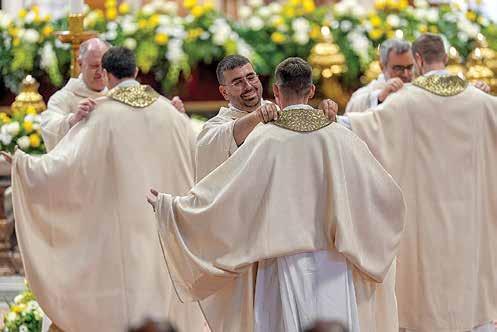
www.foryourvocation.org (and more on page 3B). Set up by the U.S. Conference of Catholic Bishops, it’s dedicated to the promotion of vocations to the priesthood and consecrated life for both men and women. They are also on Facebook and YouTube. There are resources for parents and teachers, questions to ask yourself if you feel God is calling you, videos of vocation stories from priests and religious all over the U.S., and more. Find more resources at www.charlottediocese.org/vocations.
Belmont) starts at 7 p.m., preceded by light dinner fare and desserts at 6:30 p.m. Register by June 23 to scaeducation@ccdoc.org. It is recommended that attendees be at least 16 years old, and parental discretion is advised. More information: www.ccdoc.org/education.
ST. PEREGRINE HEALING PRAYER SERVICE : 7 p.m. every fourth Thursday of the month, St. Matthew Church chapel, 8015 Ballantyne Commons Pkwy., Charlotte. Includes a blessing with the relic of St. Peregrine. For details, go to www.stmatthewcatholic.org/st-peregrine.
Young people can also reach out directly to Father Brian Becker, the diocese’s vocations promoter, at bjbecker@rcdoc.org.
— Catholic News Herald, Catholic News Service and OSV News JUNE 23 – 6 P.M.

Scan the QR code for this week’s recommended prayers and activities:

weeks:
JULY 2 – 6 P.M.
St. Joseph Church, Eden
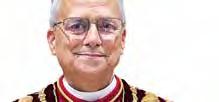
When anyone cries out to God for healing or help, God always listens, Pope Leo XIV said June 11.
“There is no cry that God does not hear, even when we are not aware we are addressing Him,” the pope told thousands of people gathered under a hot sun in St. Peter’s Square.
At his weekly general audience, the pope spoke about the Gospel story of the healing of Bartimaeus (Mark 10:46-52) as he continued a series of talks about how the life and ministry of Jesus is a source of hope.
And, noting that June is the month devoted to the Sacred Heart of Jesus, Pope Leo invited people “to bring before the heart of Christ your most painful and fragile parts, those places in your life where you feel stuck and blocked. Let us trustfully ask the Lord to listen to our cry, and to heal us!”
In the Gospel story, the pope said, Bartimaeus’ cry, “Jesus, son of David, have pity on me,” is an act of faith. And even though the crowds tried to silence the blind man, he continued to cry out to Jesus.
“He is a beggar, he knows how to ask, indeed, he can shout,” the pope said. “If you truly want something, you do everything in order to be able to reach it, even when others reproach you, humiliate you and tell you to let it be.”
“If you really desire it, you keep on shouting,” he said.
Pope Leo also said the Gospel story makes clear that Jesus does not go and lift Bartimaeus up, but encourages him to stand on his own, knowing that “he can rise from the throes of death.”
“But in order to do this, he must perform a very meaningful gesture: he must throw away his cloak,” the pope said. “For a beggar, the cloak is everything: it is his safety, it is his house, it is the defense that protects him.”
Christians today can learn from Bartimaeus, he said.
“Many times, it is precisely our apparent securities that stand in our way – what we have put on to defend ourselves and which instead prevent us from walking,” Pope Leo said. “To go to Jesus and let himself be healed, Bartimaeus must show himself to Him in all his vulnerability. This is the fundamental step in any journey of healing.”
“Let us trustfully bring our ailments before Jesus, and also those of our loved ones; let us bring the pain of those who feel lost and without a way out,” the pope said. “Let us cry out for them, too, and we will be certain that the Lord will hear us and stop.”
DEACON MATTHEW NEWSOME
Special to the Catholic News Herald
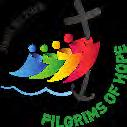
Throughout the Easter season, the Lectionary provides readings from the Acts of the Apostles. This book is in many ways a continuation of the Gospels, most especially the Gospel of Luke, with whom it shares an author. It tells of the continuation of the ministry and presence of Jesus in time, from the Ascension until about the year 62 or 63 AD. Before His ascension, Jesus tells the apostles, “You shall be my witnesses in Jerusalem and in all Judea and Samaria and to the end of the earth” (Acts 1:8). The book of Acts tells the story of those whom Jesus sent to be His witnesses, focusing especially on Sts. Peter and Paul. But it only tells the first part of the story, which continues to this day. I was blessed this year to be able to lead a Jubilee Year pilgrimage to Rome during the Easter season to visit the tombs of these preeminent apostles. We, like countless others who have made that journey, were overwhelmed by the beauty of the churches that house their relics, the papal basilicas of St. Peter and St. Paul Outside the Walls, built over their respective tombs, as well as the Basilica of St. John Lateran, where the skulls of Peter and Paul are housed. The art and architecture exhibited in those sacred places are truly world marvels. The reason for all that beauty, the reason why those basilicas were built at all, is because the tombs of the apostles are there.
This gets to the heart of why we travel on pilgrimage, following in the footsteps of so many others who have made the journey to Rome over the centuries. We did not travel primarily to see beautiful works of art. We made the journey to venerate the relics of the apostles, those first witnesses of the Resurrection of Christ – and not only them. While on our pilgrimage, we were also able to venerate the relics of other great saints, each of whom played his or her own part in carrying forward the faith of Christ. We got up close and personal with towering figures such as St. Catherine of Siena, St. Robert
JUNE 22-28
Sunday (Solemnity of the Most Holy Body and Blood of Christ): Gen 14:18-20, Ps 110:1, 2, 3, 4, 1 Cor 11:23-26, Lk 9:11b-17; Monday: Gen 12:1-9, Ps 33:12-13, 18-19, 20 and 22, Mt 7:1-5; Tuesday (Solemnity of the Nativity of St. John the Baptist): Is 49:1-6, Ps 139:1b-3, 13-14ab, 14c-15, Acts 13:22-26, Lk 1:57-66, 80; Wednesday: Gen 15:1-12, 17-18, Ps 105:1-2, 3-4, 6-7, 8-9, Mt 7:15-20; Thursday: Gen 16:1-12, 15-16 or Gen 16:6b-12, 15-16, Ps 106:1b-2, 3-4a, 4b-5, Mt 7:21-29; Friday (Solemnity of Most Sacred Heart of Jesus): Ez 34:11-16, Ps 23:1-3a, 3b-4, 5, 6, Rom 5:5b-11, Lk 15:3-7; Saturday: Gen 18:1-15, Lk 1:46-47, 48-49, 50 and 53, 54-55, Mt 8:5-17
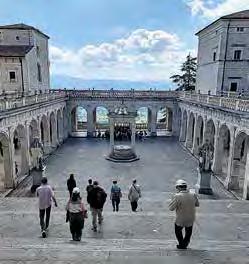
Bellarmine, St. Francis, St. Clare, St. Benedict and St. Scholastica. We drew near to countless early martyrs buried in the catacombs. And we venerated the mortal remains of more modern saints such as John Paul II, Padre Pio and Blessed Carlo Acutis. Like St. Peter and St. Paul, these men – and women, too – gave witness to Christ by their holiness of life and thus carried on the great apostolic mission. Traveling great distances to see dry bones may seem like an odd use of one’s time and resources. But venerating the relics of the saints has been the motivation for pilgrimages for many centuries. Why are relics so important to our faith, enough for us to travel across oceans to be near them? God is everywhere, after all. We can pray at home just as well as in Rome. Christ is just as present in the Eucharist celebrated at your parish as He is in the Vatican. Why travel thousands of miles to see these sacred spaces? I would argue that relics are important for the same reason that artists glorify God by their beautiful works and the same reason we celebrate the sacraments with bread and wine, water and oil. Our faith teaches us that God’s creation is fundamentally good – so good that He judged it worth redeeming when it fell. And God’s creation is physical as well as spiritual. So physical things can be used to mediate God’s grace to us, as they do in the sacraments. Physical things can be used to recall our minds and hearts to God, as sacred art and beautiful churches help us to do.
JUNE 29-JULY 5
Sunday (Solemnity of Sts. Peter and Paul, Apostles): Acts 12:1-11, Ps 34:2-3, 4-5, 6-7, 8-9, 2 Tim 4:6-8, 17-18, Mt 16:13-19; Monday: Gen 18:16-33, Ps 103:1b-2, 3-4, 8-9, 10-11, Mt 8:18-22; Tuesday: Gen 19:15-29, Ps 26:2-3, 9-10, 11-12, Mt 8:23-27; Wednesday: Gen 21:5, 8-20a, Ps 34:7-8, 10-11, 12-13, Mt 8:28-34; Thursday (Feast of St. Thomas, Apostle): Eph 2:19-22, Ps 117:1bc, 2, Jn 20:2429; Friday: Gen 23:1-4, 19, 24:1-8, 62-67, Ps 106:1b-2, 3-4a, 4b-5, Mt 9:9-13; Saturday: Gen 27:1-5, 15-29, Ps 135:1b-2, 3-4, 5-6, Mt 9:14-17
Being physically in the places where God’s grace has been made manifest in the world through the actions of Jesus Christ and His saints helps us to connect to salvation history and to contemplate our part in it.
The saints are those people who most fully participate in the work of God’s redemption. While part of their person (their soul) is in heaven, another part of their person (their body) remains on earth. We might think that their soul in heaven is the “real person” while their body on earth is a mere empty shell, but we must resist that Manichean heresy. That is Gnosticism, not Christianity. We believe that human beings are body and spirit, “at once corporeal and spiritual” (CCC 362). As the Catechism puts it, “Spirit and matter, in man, are not two natures united, but rather their union forms a single nature” (CCC 365). So if a person is holy, their body is also holy, because the body is an essential part of a human person. Bodies exist in space. That means we can draw near to them, as we do on pilgrimages, to be in the presence of these holy people and ask for their intercession. Our veneration of relics also points to our hope in the Resurrection. Because the saints share in Christ’s work of redemption, we have faith that they will also share in His Resurrection. Their mortal remains will rise with Christ on the Last Day, which is the hope of every Christian.
The theme of this Jubilee year is “Pilgrims of Hope.” Whether or not someone is able to make a literal pilgrimage to Rome or some other holy place for the Jubilee, the Church views herself as a “pilgrim people.” We are all travelers in this life toward our final destination. My prayer for all those who undertake a pilgrimage this Jubilee year is that their journey of devotion helps to sustain them along their greater pilgrimage to heaven, where we will glory with Christ and the saints forever.
DEACON MATTHEW NEWSOME, Catholic campus minister at Western Carolina University and regional faith formation coordinator for the Smoky Mountain Vicariate, is the author of “The Devout Life: A Modern Guide to Practical Holiness with St. Francis de Sales,” available from Sophia Institute Press.
More online
At www.charlottediocese.org/jubilee-2025: Find Jubilee Year information and events from our diocese and around the world
JULY 6-12
Sunday: Is 66:10-14c, Ps 66:1-3, 4-5, 6-7, 16, 20, Gal 6:14-18, Lk 10:1-12, 17-20 or Lk 10:1-9; Monday: Gen 28:10-22a, Ps 91:1-2, 3-4, 14-15ab, Mt 9:18-26; Tuesday: Gen 32:23-33, Ps 17:1b, 2-3, 6-7ab, 8b and 15, Mt 9:32-38; Wednesday: Gen 41:55-57, 42:5-7a, 17-24a, Ps 33:2-3, 10-11, 18-19, Mt 10:1-7; Thursday: Gen 44:18-21, 23b-29, 45:1-5, Ps 105:16-17, 1819, 20-21, Mt 10:7-15; Friday (Memorial of St. Benedict, Abbot): Gen 46:1-7, 28-30, Ps 37:34, 18-19, 27-28, 39-40, Mt 10:16-23; Saturday: Gen 49:29-32, 50:15-26a, Ps 105:1-2, 3-4, 6-7, Mt 10:24-33
CHRISTINA LEE KNAUSS clknauss@rcdoc.org
ARDEN — The 200 people gathered outside St. Barnabas Church on June 11 could not contain their joy and excitement as shovels launched dirt into the air, a soft breeze blew, and the sky started to melt into the soft pinks and golds of a mountain sunset.
The occasion was pretty straightforward – groundbreaking for a new parish center for the south Asheville parish of roughly 1,200 households – but the sense of celebration was elevated because of what the parish went through to reach this milestone.
This joyful evening came just nine months after the Arden parish, like most of Asheville, took a hard hit from Tropical Storm Helene’s fearful sweep through western North Carolina. The parish’s $2.3 million “Make Room for Jesus” capital campaign launched less than two weeks before Helene hit on Sept. 27.
The parish took a physical hit from the storm through the loss of more than 30 trees that used to shade its outdoor Stations of the Cross. Worse, some parishioners experienced severe damage to their homes. Yet through it all, St. Barnabas became a vital supply hub for surrounding communities, filling its social hall with food, diapers and other needed items. “Sister parishes” elsewhere in the diocese donated to help make up offertory shortfalls in the wake of the storm.
And despite all of that and a necessary six-week pause, the parish reached its goal of $2.3 million. The storm could not stop parishioners’ desire to have an expanded space for education, outreach, evangelization and fellowship.
“We’ve been through a lot as a parish,” said Father Adrian Porras, pastor, in a heartfelt homily at a Mass he celebrated before the groundbreaking.
“We’ve been through a hurricane, but that didn’t derail us. … I thank all the people of St. Barnabas for sharing their treasure. We prayed a lot, and we’ll continue to pray until we cut the ribbon. … We’re growing, we’re vibrant and we’re looking ahead!”
The groundbreaking took place on the feast day of the parish’s patron saint, Barnabas, one of the early disciples who traveled with St. Paul to spread the Gospel.
The total cost for the parish life center is $6.3 million, funded through $2.2 million in savings, the $2.3 million raised through the capital campaign and a term
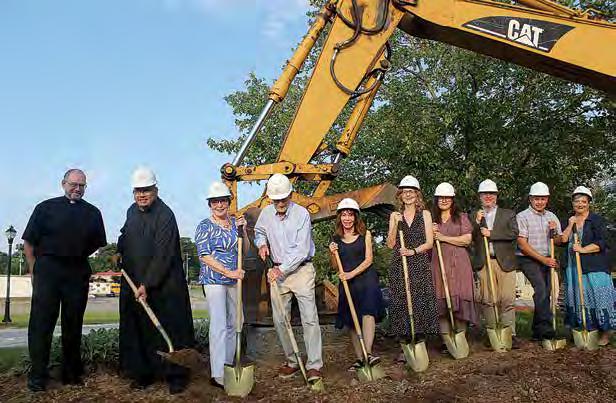
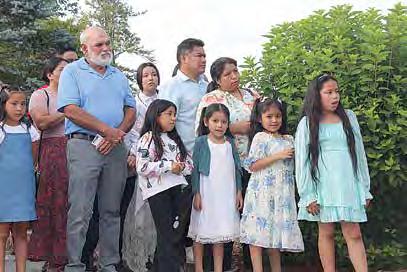
loan of $1.8 million. Mary Jo Goodman, capital campaign chairperson, noted, “We reached this exciting point thanks to the dedicated support of Father Adrian, the tireless work of our team and the incredible strength, generosity and prayers of our parish community,” Goodman who moved to Asheville 12 years ago with her husband Steve, said, “This groundbreaking truly marks a new, exciting chapter for St. Barnabas. It’s not just about what we build today, but the vibrant future we are building for.”
Prior to the mid-1960s, Catholics in south Asheville either St. Lawrence Basilica downtown or drove to Immaculate Conception Church in nearby Hendersonville. St. Barnabas was launched as a mission in 1964 by Bishop Vincent Waters of the Diocese of Raleigh, with 36 families as original members.
The first building for the mission church was purchased and renovated in August 1964, the first Mass celebrated in November, and the building dedicated by Bishop Waters on
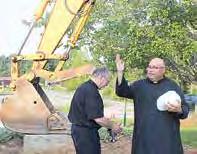
Dec. 6, 1964. St. Barnabas was officially designated a parish on Dec. 20, 1964, with Father Joseph Maule as its first pastor. In those early years, Father Maule’s rectory was a mobile home.
The parish thrived between the late ’60s and early ’80s and outgrew the original building. In 1983, the site for the current church at 109 Crescent Hill Road was purchased and a groundbreaking was held. While the church was being built, parishioners attended Mass under a tent, in the rectory, and in borrowed space at a roller rink and local churches. The church was dedicated by Bishop Michael Begley on July 22, 1984.
More building and renovations have continued over the years as St. Barnabas continued to grow.
During the 1990s, expansion and renovations of the current church were completed, including an enlarged sanctuary and social
hall space. Bishop William Curlin dedicated those additions in July 1994.
Father Porras arrived at St. Barnabas in July 2008 and soon realized the need for another building project to accommodate the parish’s continuing growth. From those humble beginnings of only 36 families, the parish has become home to 1,200 households, a diverse congregation that includes people of all ages and ethnicities, including a vibrant and growing Hispanic community.
The vision for a new parish life center started more than a decade ago – in 2013, when the parish launched a dedicated building fund. In 2016, parishioners Dennis and Mary Kushler left a $3.5 million endowment to the parish. The following year, the parish began diligently saving earnings from that endowment, putting them directly into the building fund.
In 2023, input from a comprehensive parish survey further highlighted the need for a new parish center, and the diocese approved the preliminary phase of the project in December of that year. The “Make Room for Jesus” campaign launched in September 2024 and did not lose steam even through the pause caused by Helene. Fundraising included many weeks of food sales by the Hispanic community.
The parish received permission from the diocese in March to begin construction, with a tentative goal of completing the 12,000-square-foot parish center by June 2026. The building will include a large kitchen, classrooms and space for social activities.
Long-time parishioners Dave and Betsy Cypcar say the new center can’t come soon enough to the church they’ve called home for 32 years and which helped form the faith of their three children.
“This parish has been growing so fast in recent years that people are tripping over each other on days when more than one activity is going on,” Dave Cypcar said. “We volunteer at the weekly food pantry, and it’s been outgrowing the wing where it’s located. This has become the Catholic point of contact for south Asheville, and it’s going to continue to grow. We were excited to take part in the capital campaign because we love this parish. It’s a nice mix of people, there are tons of activities, and the members are very engaged in the life of the parish.”
PATRICIA L. GUILFOYLE AND LIZ CHANDLER catholicnews@rcdoc.org
CHARLOTTE — After more than 20 years leading the Diocese of Charlotte’s growing vocations program, Father Christopher Gober is stepping down – and handing the role to a priest he helped guide through the seminary.
Bishop Michael Martin, OFM Conv., has appointed Father John Eckert as the new vocations director, effective July 8. Father Eckert, pastor of Sacred Heart Parish in Salisbury, was ordained in 2010 and is one of 57 men shepherded by Father Gober through to priesthood during his tenure.
Father Gober will continue serving as pastor of St. Leo the Great Parish in WinstonSalem and as vicar forane of the WinstonSalem Vicariate. The transition will allow him to focus on the needs of his growing parish and his vicariate duties, he said.
“Having reached this milestone of 20 years, it felt like the right time to bring in new energy to build on the foundations we have put in place,” Father Gober said. “I am very grateful to Bishop Martin for supporting my request to step down from the position after so many years. He made an excellent choice in Father Eckert. This will allow me to be more present to my parish and foster priestly fraternity in our region.”
REMARKABLE GROWTH
Since becoming vocations director in 2004, Father Gober has seen the number of diocesan seminarians nearly quadruple to 44 this year. And 13 men have been ordained priests in the past two years alone.
This growth has been driven by increased vocation awareness throughout the diocese, Father Gober said, thanks to the support of clergy, parishes, Catholic schools and families. The Vocations Office has built a strong culture of discernment – encouraging young people to consider God’s call through vocations camps, parish visits and other outreach.
Father Gober oversaw the launch of vocations summer camps in 2014 for young men and in 2016 for young women. “Quo Vadis Days” and “Duc in Altum” have helped thousands of teenagers explore potential religious vocations through prayer, talks and fellowship.
His office also added a vocations promoter role, first filled by Father Jason Barone, who introduced the summer vocation camps, and now by Father Brian Becker, who also directs the propaedeutic (preliminary) stage at St. Joseph College Seminary in Mount Holly. St. Joseph College Seminary has fueled priestly vocations since it was established in 2016 by Bishop Peter Jugis. Father Gober supported the effort led by seminary rector Father Matthew Kauth, both drawing from their own seminary experiences to offer college-level formation close to home.
Seminarians now spend summers in local parishes, building relationships from the start with the parishioners they might one day serve. “By the time they’re ordained, they’re not strangers – they’re part of our family of faith,” Father Gober said.
“We’ve built a strong foundation for young men to discern authentic vocations,” he said, “and that’s thanks to a diocesan-wide team effort. Our presbyterate presents the priesthood as a joyful and adventurous life. That’s what draws men to it.”
What’s been most meaningful? “Walking with a man from day one of seminary formation to the moment he lays down his life
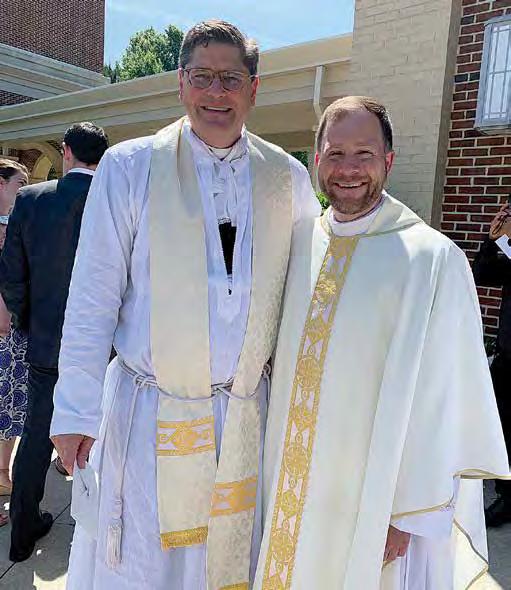
for 21 years and is now turning his attention to his growing parish, St. Leo the Great in Winston-Salem. Father Eckert, who will remain as pastor at Sacred Heart Parish in Salisbury, said he is looking forward to building on the vocation program’s solid foundation.
in service to the Lord and the Church – seeing him reach the altar,” Father Gober said.
Father Gober said he is deeply grateful to his parishioners – past and present – and to longtime chancery staffers Nancy Weber (now retired) and Lainie Lord for their behind-the-scenes support.
Father Eckert expressed appreciation for Father Gober’s leadership and example, calling him “a big brother – and not just because he’s taller.” The two share roots in Peoria, Illinois, and even attended the same high school, eight years apart.
During a Palm Sunday visit to the Charlotte diocese in 2006, Father Eckert was impressed by the pastoral approach of his host Father Gober, who was then pastor of parishes in Spruce Pine and Linville.
“His calm, steady personality and the clear love of the priesthood that he had was an inspiration,” he recalls.
Father Eckert has already been active in vocations work, including speaking at Quo Vadis Days camps and welcoming seminarians on summer assignments at Sacred Heart in Salisbury. Three recently ordained priests – Fathers Darren Balkey, Joseph Wasswa and Matthew Harrison –came from his parish.
“Discernment takes time,” he tells young
people. “Be open to the Holy Spirit, be quiet and listen to Our Lord, be ready to make a gift of ourselves, and see what unfolds.”
Father Eckert, who will remain pastor of Sacred Heart, said he is grateful for the opportunity to lead and looks forward to working with Bishop Martin to build on a strong foundation.


The Diocese of Charlotte is providing new resources for its growing Family Life and Hispanic Ministry offices, Bishop Michael Martin announced June 18 in an email to priests. He thanked Father Peter Ascik and Father Julio Dominguez, who he said “have done remarkable work to establish and/or grow these ministries.” He noted that both priests are taking on new assignments in parishes that will demand their full attention: Father Ascik, director of the Family Life Office, is moving to serve as pastor and rector of St. Patrick Cathedral in Charlotte, and Father Dominguez, Vicar for Hispanic Ministry, will serve as pastor of St. Joseph Parish in Newton. They will continue serving as the ministry directors temporarily as the diocese conducts national searches for full-time directors. — Catholic
“I’m excited to be able to help young people discern who God is calling them to be,” he said. “All of us are called to holiness. All of our vocations affect one another. You don’t get good priests if you don’t have strong marriages and families who encourage vocations.”
Both priests agree that promoting vocations is a collaborative effort based on trust in God’s providence – supported through prayer, encouragement and financial generosity. “Our Lord knows how to provide,” Father Eckert said. “We just need to keep responding generously and trust that He will keep providing.”
Father Gober said he’s confident the program will continue flourishing. “Father Eckert already has a great rapport with our seminarians. The program is in good hands.”
Saint Leo the Great Catholic Church, in Winston-Salem, North Carolina, is a vibrant 1,200 family member parish seeking a Director of Finance.
The Director is a professional administrator who, with the assistance of a Finance Assistant, works in support of and in collaboration with the pastor.
Submit cover letter and resume to: info@stleocatholic.org For the complete job description please visit: www.stleocatholic.org
or by mail to: Very Reverend Christopher M. Gober
Saint Leo the Great Catholic Church 335 Springdale Avenue Winston-Salem, NC 27104
CHRISTINA LEE KNAUSS clknauss@rcdoc.org
BELMONT — Three nursing students from Belmont Abbey College are part of a select group of five interns who will spend part of their summer bringing health care and the witness of God’s love to people in Madagascar.
They have been selected to work for two weeks with Mercy Ships, a global nonprofit that brings hospital ships providing free surgeries and other medical care to impoverished communities that lack access to health care.
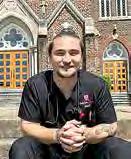
The three nursing students, all rising seniors, are Erik Dike of Wake Forest, Caroline Gutierrez of Gastonia and Emma Harris of Charlotte. Harris is hopeful that the internship will be an eye-opening experience. “Here in the U.S. we are truly blessed to have access to medical care, while the people we’ll be serving often have to walk miles and miles just to find a doctor,” she said.
The three learned about the program in March, applied and discovered soon afterward that they would be joining the inaugural cohort of Mercy Ships’ nursing internship program, dubbed “The Mercyship.”

They will leave for Madagascar on July 27 and then board the hospital ship Africa Mercy, where they will work and live until Aug. 9. The Belmont Abbey students will be working alongside others from Baylor University and Texas Christian University. All the students are raising funds to cover travel and participation costs through GoFundMe.
According to a statement from Mercy Ships, the immersive work opportunity offers the chance to experience “healing through service.”
The students will shadow medical professionals working in rehabilitation, outpatient services and recovery at the Hope Center, a facility that supports
patients as they heal. They also will be exposed to Mercy Ships’ surgical specialties, including maxillofacial (jaw and facial bones), reconstructive plastics, pediatric orthopedics, ophthalmic surgeries and women’s health.
“We created The Mercyship to give student nurses a deeper understanding of global health equity and to inspire them with what it means to provide care with compassion,” said Merryl Mackenzie, hospital director for Africa Mercy Madagascar. “By integrating faith, clinical learning and cultural humility, this program nurtures both skill and spirit.”
The three Belmont Abbey students see the internship as a chance both to learn about their chosen field and to share God’s love
with others around the world.
Gutierrez has traveled to Europe, the Caribbean and Mexico but has never been to Africa. Through her nursing studies, she’s developed a passion for working in labor and delivery.
“I’m excited about the trip because I have always wanted the opportunity to go on something like a mission trip,” she said. “This is the perfect opportunity because it integrates the way I feel called to love through nursing and my desire to serve others.”
Dike switched to nursing at Belmont Abbey College once he realized a passion for emergency medicine after originally majoring in mechanical engineering in Raleigh. Dike has never traveled overseas.
“As soon as I learned about Mercy Ships, I thought regardless of how challenging a trip like this might be for me, the impact that this program has on people’s lives is absolutely amazing, and I immediately knew I wanted to be a part of it,” he said. “They say you never know someone’s experience until you walk in their shoes, and this is a way for me to see what people in another part of the world experience.”
Harris has wanted to be a nurse since she was 11, and through her studies at Belmont Abbey College, she has decided she wants to work in a neonatal intensive care unit.
“I’m so happy to be able to have this opportunity to be able to help people that aren’t able to get the care they need and share Christ’s love with them,” she said.
Belmont Abbey College’s nursing program launched in 2022 and currently enrolls 50 students, with more growth expected in the coming academic year.


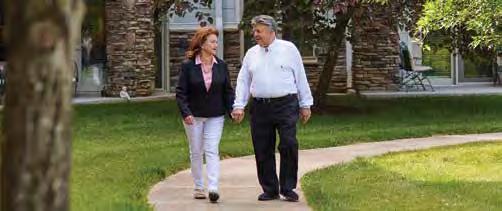
Abundant amenities and a unique way of life
e Pennybyrn lifestyle is packed with amenities. Living here, you’ll swim laps in a stunning, indoor heated saltwater pool, stay t in a well-equipped facility and power walk, bike or stroll along scenic walking trails. Even membership at Jamestown Park Golf Course is included!
ere’s also the Pennybyrn di erence… and this is what truly setsus apart. You’ll nd a lovely Peace Chapel, a not-for-pro t mission to serve all faiths,
a smaller population for personalized service and inclusiveness that means your voice will always be heard.
A thoughtfully designed home
Your private residence at Pennybyrn—chosen from among a variety of oor plans and prices— will feature a bright, open design with plenty of natural light, a well equipped, modern kitchen, washer and dryer, high ceilings and a private porch, balcony or patio.
Most cottages include an attached garage or carport, and many o er a cozy replace.
Inspiring lifestyle choices
In a friendly neighborhood, and among sociable friends, you’ll explore a wealth of programs that are planned and shaped by fellow residents. Quiet times will nd you gathering in beautiful outdoor areas and inviting indoor spaces— including world-class dining choices and a true Irish Pub.
Our purpose at Pennybyrn is to make sure that your vibrant lifestyle is enjoyed with the lifelong support, assurance and bene ts of a Life Plan Community.

GRACE KUNIK
gkunik@ccdoc.org
BLACK MOUNTAIN — The steady rhythm of hammers and saws blended with laughter and quiet prayer on the morning of June 3, as six seminarians set out to volunteer with an ongoing Catholic Charities construction project for Hurricane Helene survivors.
Nestled between the Black Mountain range and the Blue Ridge Mountains, Black Mountain endured devastating flooding more than eight months ago when Tropical Storm Helene made landfall in western North Carolina. Since then, with the help of various local and federal organizations, the region has begun to focus on recovering after the disaster, rather than just surviving.
One of those organizations, Community Organized Relief Effort (CORE), in partnership with Catholic Charities Diocese of Charlotte, has made great strides in rebuilding hard-hit areas of western North Carolina. With construction projects popping up around the region, the first-year class of St. Joseph College Seminary saw an opportunity to live out their faith by volunteering to rebuild homes through a new initiative sponsored

by CORE and Catholic Charities, the WNC Home Rebuild Program.
Throughout their first year of priestly formation, the men of St. Joseph’s have traveled around the Diocese of Charlotte, getting to know the many parishes and ministries. Father Brian Becker
reflected on the importance of this recent trip to Black Mountain, where they spent the day aiding in the construction of new homes for survivors of Helene.
“When Helene struck our diocese early into their first year, our seminarians volunteered alongside
Catholic Charities to help find and deliver emergency supplies to western North Carolina,” Father Becker said. “This trip to Asheville was a chance for the men to see how this recovery process has progressed so far.”
The trip served as a chance to
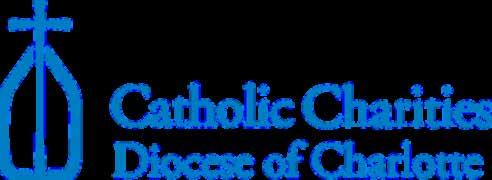
connect with the community and learn about the importance of longterm recovery.
In their trip to Black Mountain, these seminarians did not just bring a willingness to serve and manpower to the construction site, they brought the presence of the Church, active and alive among the people. They came to western North Carolina to rebuild homes, but they left having built a sense of community and a newfound awareness of North Carolina’s resilience.
“The trip helped them see just how far the people of the region have to go to make a full recovery,” Father Becker stated.
Their service is a powerful reminder that religious life is not confined to chapels or classrooms – it’s lived out in the mud, the mess and the moments of solidarity. As western North Carolina continues to recover, the witness of these six young men sends a clear message: the Church is here. And it is rebuilding, one home – and heart –at a time.
GRACE KUNIK is media assistant for Catholic Charities Diocese of Charlotte and is capturing the stories of the people who are recovering from and aiding in the recovery from Tropical Storm Helene.
Are you passionate about service and building community? Catholic Charities Diocese of Charlotte is seeking a dedicated and organized Volunteer Coordinator to lead our volunteer program and strengthen our mission of service.
In this dynamic role, you will recruit, train, and support volunteers serving participants; build partnerships with Catholic parishes, schools, and community groups; plan and lead orientations, maintain records, and coordinate outreach; and promote volunteerism and Catholic Social Teaching throughout the region.
Location: Charlotte, NC
Apply Today
Visit www.ccdoc.org/careers for a full job description and application details. Applications will be accepted until the position is filled.
Be part of a team that puts faith into action and brings hope to neighbors in need.



CHARLOTTE — Bishop Michael T. Martin, OFM Conv., announces the following clergy appointments from the Diocese of Buea, Cameroon, effective July 8:
n Father Jervis Kebei Kewi to parochial vicar of St. Aloysius Parish in Hickory.
n Monsignor John Njowu Tchamnda to chaplain at Atrium and Novant hospitals in Charlotte. — Catholic News Herald
CHARLOTTE — Bishop Michael T. Martin, OFM Conv., announces the following priests have been appointed vicars forane, effective July 8:
n Father Benjamin Roberts: Albemarle Vicariate
n Father Christopher Bond: Boone Vicariate
n Father Paul McNulty: Gastonia Vicariate
n Father Lucas Rossi: Smoky Mountains Vicariate
Sometimes called a dean, a vicar forane is a priest appointed by the bishop in order to promote a common pastoral activity in a region of the diocese and to provide spiritual and pastoral counsel to the other priests in that region, according to Church law.
The Diocese of Charlotte has 10 vicariates.
— Catholic News Herald

The U.S. Conference of Catholic Bishops has announced that 'Religious Freedom Week 2025 – Witnesses to Hope” will take place June 22-29. The week begins with the Feast of Sts. John Fisher and St. Thomas More, ends with the Solemnity of Sts. Peter and Paul, and includes the Feast of the Nativity of St. John the Baptist. Religious Freedom Week promotes the importance of preserving the essential right of religious freedom for Catholics and people of all faiths. Prepared reflections in English and Spanish are available for each day and can be found at www.usccb.org/ReligiousFreedomWeek
“During Religious Freedom Week, Catholics are encouraged to pray and act each day for religious freedom,” the bishops wrote. “The Pray-Reflect-Act series aims to help Catholics build solidarity with people of faith who are persecuted abroad and find strength to carry out the mission of the Church here in the United States. … Thank you again for your support for Religious Freedom Week and for your united voices in the promotion and defense of religious freedom.”
— Joe Purello,

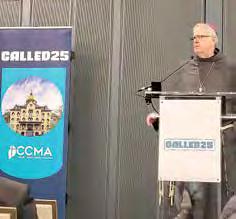
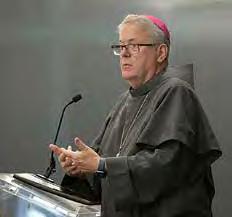
SOUTH BEND, Ind. — Bishop Michael Martin recently joined college campus ministers from the Diocese of Charlotte and from colleges across the United States at CALLED25, the annual conference of the Catholic Campus Ministry Association, held June 2-4 at the University of Notre Dame. The conference focused on the 40th anniversary of the USCCB publishing “Empowered by the Spirit,” the bishops’ 1985 pastoral letter on ministry with college students. Bishop Martin gave the opening keynote address, speaking on the importance of forming the faith community and effective evangelization in ministry on college campuses.
“Having Bishop Martin at CALLED25 was more than an honor, it was a prophetic moment for our movement,” said Rosie Chinea Shawver, CCMA executive director. “As someone who has walked the road of campus ministry at Duke, he gets it. He knows the long hours, the heartbreak, the hope. His words cut through the noise and reminded us that at the heart of everything we do must be ‘Jesus, Jesus, Jesus.’ In a culture obsessed with hustle and scarcity, Bishop Martin called us back to a deeper truth: We minister from God’s abundance. His presence affirmed the sacredness of our mission and reignited our courage to lead boldly, love faithfully and walk with students from a place of spiritual plentitude.”
More online
At www.usccb.org : Read the full text of “Empowered by the Spirit”
PHOTOS PROVIDED
BELMONT — Sister Mary Antonette Schmidt, a beloved member of the Sisters of Mercy for six decades, entered eternal life on June 13, 2025, at CaroMont Medical Center in Gastonia.
The Mass of Christian Burial will be celebrated at 11 a.m. Monday, June 23, 2025, at Sacred Heart Convent, Cardinal Gibbons Chapel, 500 Sacred Heart Circle, Belmont, N.C. Viewing will be held before Mass, from 10:30 to 11 a.m. Interment will follow at Belmont Abbey Cemetery.

Sister Antonette was born on Jan. 11, 1944, to John Schmidt of Devon, Pennsylvania, and Mary Powers of Manayunk, Pennsylvania.
Sister Antonette dedicated her life to service, faith and compassionate ministry.
At 21, she entered the Sisters of Mercy in August 1965 in Belmont, embracing her calling to serve others through her deep prayer life and her extensive ministries. Her educational journey was marked
by a commitment to understanding and spiritual growth. She earned a certificate of chaplaincy from Carolinas Medical Center, a master’s degree in religious studies from La Salle University in Philadelphia, and a bachelor’s degree from Sacred Heart College in Belmont. Later, she earned a certificate in spiritual direction from the Diocese of Charlotte. Her pursuit of education reflected her dedication to caring for others’ spiritual needs.
Throughout her ministry, Sister Antonette served in various roles, embodying her motto: “That the world may believe.” She ministered at the Jesuit House of Prayer in Hot Springs as a retreat director from 2001 to 2004, and served as spiritual mentor and coordinator for young adult ministry at the Diocese of Charlotte during the same period. From 2004 to 2007, she served as vice president of mission and values at Mercy Suburban Hospital in Norristown, Pennsylvania. Her compassionate spirit extended to her work as a chaplain for mission services and pastoral care at St. Joseph-Chandler Health System in Savannah, Georgia. She served as assistant to the community life
coordinator at Marian Center from 2014 to 2020, as well as working at St. Joseph’s Hospital in Asheville, Well of Mercy retreat center in Hamptonville and Living Waters Catholic Reflection Center in Maggie Valley earlier in her career.
Sister Antonette’s unwavering dedication to her ministries and her deep prayer life touched countless lives. She passed peacefully, surrounded by her Sisters of Mercy, revealing her lifelong commitment to service, faith and love. She was preceded in death by her parents and sister Virginia.
She is survived by three brothers: John, William and Paul; two sisters, Christina, the oldest of the seven, and Mary: as well as her fellow Sisters of Mercy.
In lieu of flowers, memorial donations may be made to the Sisters of Mercy, 101 Mercy Dr., Belmont, N.C. 28012.
A guest registry for sharing prayerful thoughts and heartfelt condolences is available online at www.mcleanfuneral. com.
McLean Funeral Directors of Belmont is in charge of the arrangements.
— Catholic News Herald
MARION — Father Carl Edwin Kaltreider was called home to the Lord on June 11, 2025. He was 82.
For more than 46 years, Father Carl faithfully served parishes across western North Carolina, including in Marion, Eden, Asheville, Andrews and Shelby. His final and longest assignment was as administrator of Our Lady of the Angels Catholic Mission in Marion, where he was known first and foremost as a parish priest – deeply devoted to the salvation of souls and committed to serving others until the end of his life.
Well past the typical retirement age, Father Carl remained active, dedicated and unwavering in his vocation – a constant example of faith, perseverance and service to others. Nothing – not even illness – could keep him from celebrating Mass daily.
On one notable occasion, despite being seriously ill with pneumonia, he concelebrated Mass in Virginia and was taken by ambulance to the ICU immediately afterward. He was released from the hospital on Thursday, and by Friday morning he was back celebrating Mass in Marion.
When asked about retirement, he would respond: “Retirement? What’s that? I signed up for life.” He meant it.
A LIFE OF MINISTRY
Born March 20, 1943, in Hanover, Pennsylvania, Father Carl was the son of Percy and Dorothy (Brady) Kaltreider. He was a 1961 graduate of Delone Catholic High School in McSherrystown, Pennsylvania. He attended Towson State University in Maryland before
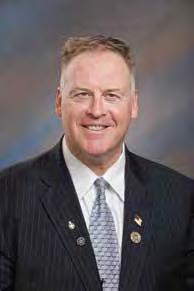
entering Mount St. Mary’s Seminary in Emmitsburg, Maryland.
He was ordained to the priesthood on March 17, 1979, by the Most Rev. Michael J. Begley, the first bishop of the Diocese of Charlotte, at his home parish of St. Joseph Catholic Church in Hanover, Pennsylvania.

Father Carl’s first assignment was as assistant pastor at St. Ann Parish in Charlotte (1979-1981). He went on to serve as pastor at St. Joseph of the Hills Parish in Eden (1981-1986), St. Lawrence Church (now Basilica) in Asheville (1986-1996), and St. Mary Help of Christians Parish in Shelby and Christ the King Mission in Kings Mountain (1996-1999), before taking a sabbatical.
While at St. Lawrence, he played a key role in securing the church’s designation as a minor basilica by the Holy See in 1993. He returned to ministry in 2007 as pastor of Holy Redeemer Parish in Andrews and Prince of Peace Mission in Robbinsville. In 2011, he moved to Our Lady of the Angels in Marion, where he would serve for the next 14 years.
In Marion, Father Carl built a strong community, recruiting dedicated volunteers and welcoming everyone who came through the church doors, especially those inquiring about the Catholic faith. He had a deep love for the growing Hispanic community, not letting his lack of Spanish fluency stand in the way of pastoral care.
As just one example, Our Lady of the
For over 140 years, the Knights of Columbus has been committed to helping families plan their nancial future and achieve economic security, a tradition carried on today through its insurance products. Book a complimentary financial needs analysis today. Faith guides your life, why not your financial decisions?
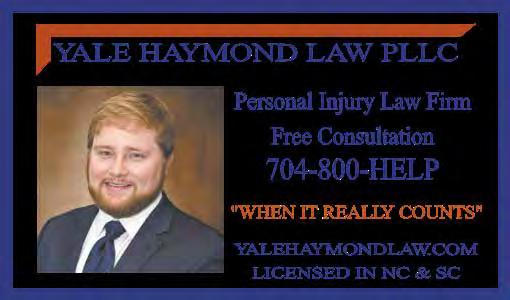
Angels parishioner Brenda Lopez relates that the first time she met Father Carl, he asked her to help someone in need. The following Sunday, noticing she didn’t receive Communion, he asked why. She explained that she wasn’t married in the Church yet might consider it the next year. Father Carl reminded her that next year is never guaranteed. Over the next six months, he worked with the couple, eventually marrying them in the Church and then teaching them to lead marriage preparation classes. Father Carl went on to help and marry 39 other Hispanic couples.
Father Carl also established the first Hispanic Knights of Columbus council in North Carolina at Our Lady of the Angels (Council 17058).
He loved everyone who came to the door to find out about the Catholic Church. He particularly liked talking about politics and religion, striking up conversations whenever he was out and using politics as an entry point to move the conversation to religion.
Father Carl also enjoyed working with young people, teaching sacramental preparation courses and watching them grow and develop in their faith.
Those who knew Father Carl will remember his tireless dedication, generous
heart and unshakable faith. We loved him deeply and feel a great emptiness in our hearts, but we carry with us the powerful example he left: to fight for and defend our faith until the very last moment of our lives.
We are profoundly grateful to God for allowing us to share our lives with this great man, priest and friend. May God welcome him into His glory.
Father Carl was preceded in death by his parents and his brother, Clyde J. Kaltreider.
He is survived by his sister, Sally (Kenneth) Weiler; nephew, John Kaltreider; and nieces Patricia Palmer, Jackie Nickol and Dee Ketterman.
The Mass of Christian Burial was celebrated June 19, 2025, at St. Lawrence Basilica in Asheville. Principal celebrant was the Rev. Msgr. Patrick J. Winslow, vicar general and chancellor of the Diocese of Charlotte, with priests of the diocese concelebrating. Burial will follow at Belmont Abbey Cemetery at a later date. Memorial contributions may be made to Our Lady of the Angels Catholic Mission, 290 N. Garden St., Marion, N.C. 28752. Westmoreland Funeral Home of Marion was in charge of the arrangements. — Catholic News Herald

Candidate must be a college graduate with a degree in marketing, communications, business administration or related field with five years’ work experience in fund development. Leadership gift experience preferred. Applicants should have strong interpersonal and communication skills, and the ability to interact well with diverse groups. Responsibilities include developing strategies, events, and materials to inform, engage, cultivate, and solicit current and prospective leadership gifts.
Please submit resume to Jim Kelley, Office of Development, jkkelley@rcdoc.org or 1123 South Church Street, Charlotte, NC. Questions call Jim Kelley at 704-608-0359.

LISA M. GERACI
lmgeraci@rcdoc.org
HIGHPOINT — On her day off, Sister Lucy Hennessey comes to work anyway to inaugurate a newly built bridge spanning a creek in the woods behind Pennybyrn, the 71-acre retirement community her religious order established 78 years ago.
She stands at the center of the bridge as the Rand family officially donates the structure to Pennybyrn, where their parents loved to walk the trails and lived for more than 20 years. Although she remains silent, Sister Lucy’s presence is unmistakable – just as it is throughout the campus of 450 residents, where she is widely known for pioneering a remarkable faith-based culture of caring.
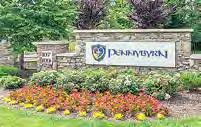
Building bridges is a central theme of Sister Lucy’s life and leadership. Through her work, she has created cultural connections between her Irish homeland and her adopted home in North Carolina. She carved a path for residents who face housing decisions as they age and their health declines. She has helped build relationships between people of her Catholic faith and other denominations. She often holds hands and prays, too, with residents who are dying, helping in their transition from this life to the eternal.
Sister Lucy arrived in North Carolina in 1975, when Pennybyrn contained just one building, a 125-bed nursing home, behind the convent where the Sisters of the Poor Servants of the Mother of God lived and tended to residents. Over the next 50 years, Sister Lucy – and her formidable network of sisters and staff – transformed the institution into a community, where residents have a variety of housing options, countless activities, on-site healthcare and reliable caretaking as they live out their final years.
Now, Sister Lucy is leaving. She and her three compadres – Sister Mona Comaskey, Sister Gabriella Hogan and Sister Loretta O’Connor – who have guided Pennybyrn
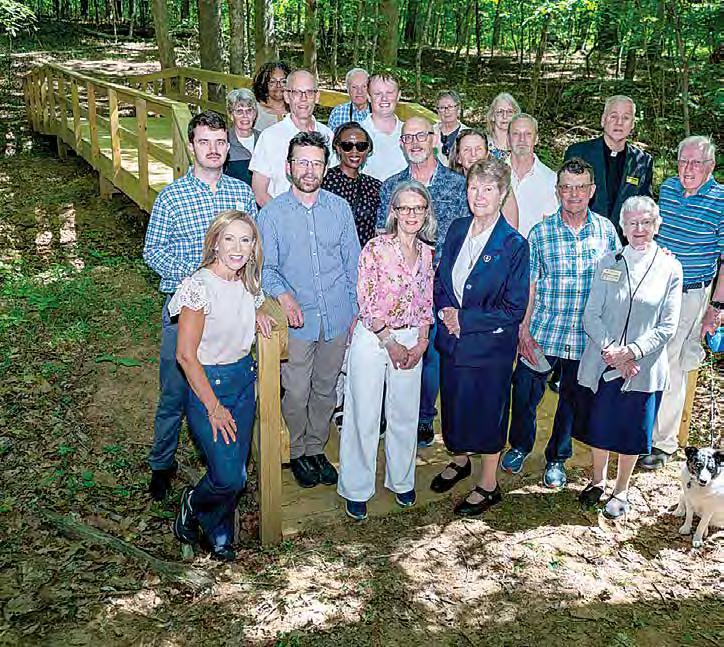
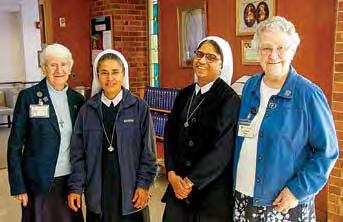

most recently have been called back to their motherhouse in London. In July, the Diocese of Charlotte will fully assume the “spiritual” sponsorship of Pennybyrn after a three-year transition plan engineered by Sister Lucy to ensure the sisters’ charism of caring remains intact in their absence.
“Sister Lucy is an inspiration. Her leadership and
commitment to the mission of Pennybyrn is singular and irreplaceable,” says Monsignor Patrick Winslow, vicar general and chancellor of the diocese, who worked closely with Sister Lucy to hammer out – and execute – the transition. “Her
LUCY, SEE PAGE 11A

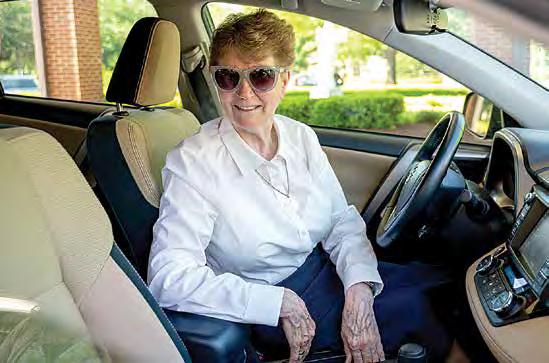
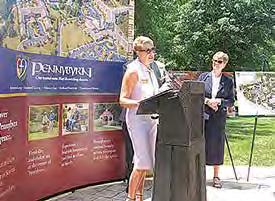
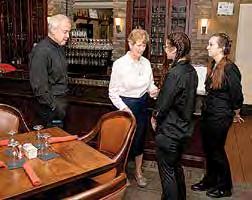
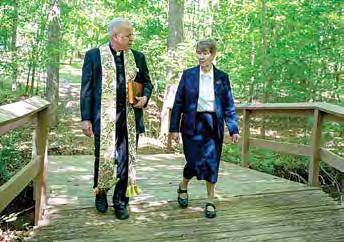
Carrying
At 19, she decided to consecrate her life to God, and entered the SMG congregation at Maryfield Convent in London. She spent the next decade studying theology and other subjects and adapting to religious life.
Upon her arrival in the U.S., she earned a bachelor’s degree in business from High Point University, a nursing administration license from the University of North Carolina and a master’s degree in healthcare administration from St. Louis University.
In 1987, Sister Lucy was named “mission leader” of a small nursing home that would come to be known as Pennybyrn.
“I was told that it was going to be my mission,” Sister Lucy recalls in her beloved Irish brogue, “and I said, ‘Thank you.’ I do the best I can – and I pray a lot.”
Except for four years while she was assigned to other mission work, Sister Lucy has remained at Pennybyrn. She has gained many titles – mission leader, CEO, board of directors chair, lead administrator – as she determinedly and kindly built out the sisters’ vision of a continuum of care they believe the Lord destined.
On a recent tour of Pennybyrn, Sister Lucy shows her encyclopedic knowledge of the community.
Under the sisters’ leadership – she will not take sole credit –the grounds have grown to offer 49 cottages, 197 independent and assisted-living apartments, 24 memory-support beds, and 125 skilled nursing beds. There’s also a full-fledged rehabilitation center, Eucharistic Adoration Chapel, an interfaith prayer chapel, and soon an adult daycare center. While the buildings provide the needed structure, it’s the landscapes filled with gardens, art and touches of Irish and Catholic flair – along with compassion of the staff – that make the place feel like home.
“When I go to bed at night, I can put my head down on my pillow,” says one resident, Jackie Batts, whose husband lives in memory care. “I don’t worry about Bill, because I know he is very well taken care of. He is safe, and he is loved, and he is good.”
for God is truly reflected in her love for the people she serves.”
The sisters will not only leave behind the residents of Pennybyrn but also a staff of 450 full- and part-time workers. One of those employees, Wendy Strader, sheds tears just thinking about the sisters’ departure. “I have been here 16 years, and the sisters are all I have ever known, and it is so special coming into work every day knowing that I am going to see them. I am going to miss that,” says Strader, Pennybyrn’s development and volunteer coordinator.
Staffer Sarah Barker says the sisters “cultivated this very special spirit of compassion, hospitality and service.”
Under Sister Lucy’s watch, Pennybyrn became among the first on the East Coast to successfully implement a “household” model of care, which empowers residents with personal choices in their daily routines, so that Pennybyrn truly feels like home.
“This might be the last place they come to live, so let them live their lives in the best way they possibly can and have the right to lots of choices,” explains April Turner, household coordinator.
Residents decide when they shower, what and when they eat, how long they sleep, and what they wear. At the insistence
of the sisters, Pennybyrn caters to their individualism. Pennybyrn, the sisters say, tries to provide differentiated treatment for individual clients, and also serve as an all-in-one community offering seniors 65 to 100-plus all of the spiritual, physical and emotional support needed at this critical part of their lives.
“This legacy is truly a gift that has been given to us. It won’t be packed up and taken home with the sisters,” Pennybyrn’s president, Rich Newman, says. “I can assure you it will be cherished, cultivated and kept alive here at Pennybyrn.”
SISTER LUCY TAKES CHARGE
Sister Lucy says she’ll depart in coming weeks the same way she arrived from Limerick, Ireland – carrying memories in a small suitcase and wearing her trademark navy skirt and jacket, white blouse and a crucifix around her neck. In her 2018 memoir, she recalled when “I arrived in the New World for the first time. What an exciting but scary sensation I felt when I stepped off the plane at JFK Airport in New York.”
Lucy Hennessey had grown up on a farm in a large Irish Catholic family (with 12 brothers and sisters) that would produce two nuns – including Sister Lucy – and a priest. Amid crops and livestock, prayer was the central focus of their day.
“Morning prayers, prayers before and after meals, the Angelus, and the family rosary were recited each day,” she recounted in her book. “We attended Eucharistic Adoration and Benediction on a regular basis in our parish church.”
With her trademark shades on, Sister Lucy crisscrosses the Pennybyrn campus in her SUV waving to residents and stopping to talk. She knows their names and their stories, quietly praying for each of them as she goes about her day.
“I love the people. The people are what it is all about because they make it happen with regard to the spiritual side of things and the administration side, and the care side,” Sister Lucy reflects. “This is an environment of the people: It is a total community.”
She highlights the traditional Limerick-style stone walls, also featured in the Peace Chapel for interfaith worship. “The rock throughout is very much of an Irish flair intentionally done by Sister Lucy,” says staffer Barker.
Sister Lucy believes, “Pennybyrn is a retirement center as well as a prayer center. Our biggest population is not Catholic – we also have Methodists, Lutherans, Baptists and all the others. We offer interfaith prayer, too, and being able to facilitate that here is very important.”
She also notes other Irish touches: the Celtic crosses in stained glass. Metal shamrock fence posts guarding the SMG cemetery where her departed sisters are buried. Even a traditional Irish pub with beer on tap, a replica from her homeland, prominent in Pennybyrn’s main building.
Pointing to the memory-care unit, Sister Lucy speaks respectfully: “Residents can still walk around. They can go outside, into the memory walk garden. We designed it that


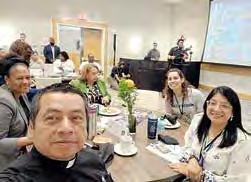
Recibiendo reconocimiento del departamento de Salud para Fe y Salud Coalicion Latina. Por todo el trabajo que las promotoras de Salud realizan por todo el condado en las Iglesias de catolicas y protestantes del vicariato.
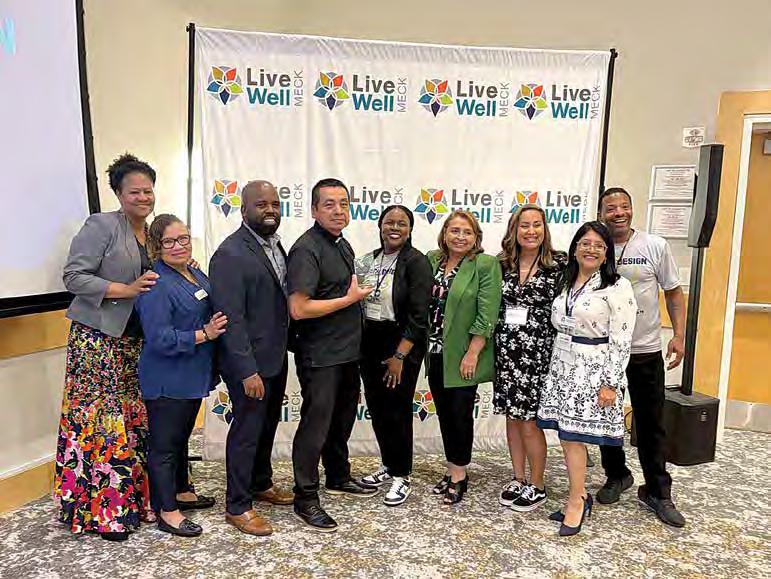
MOUNT AIRY — La Vicaría de Winston-Salem invita a todos los equipos de OCIA (anteriormente RICA) a participar en un taller especial el sábado 12 de julio, de 10:00 a.m. a 2:00 p.m., en la Iglesia Católica Santos Ángeles, ubicada en 1208 North Main St., Mount Airy. Este taller está dirigido a catequistas, maestros, animadores y todos los miembros de los equipos de OCIA. Presentaremos recursos útiles, compartiremos mejores prácticas y ofreceremos orientación para planificar el ciclo catequético y organizar las clases de manera efectiva.
Todas las parroquias y catequistas están cordialmente invitados Se sugiere una donación de $15 para cubrir materiales y comida.
Regístrate en el siguiente enlace: https://forms.office.com/r/ FzQFh75dQd — Sergio López


Cuando alguien clama a Dios por sanación o ayuda, Dios siempre escucha, dijo el Papa León XIV. “No hay ningún grito que Dios no escuche, incluso cuando no somos conscientes de dirigirnos a Él”, dijo el Santo Padre, dirigiéndose a miles de personas reunidas bajo un sol abrasador en la Plaza de San Pedro el 11 de junio.
En su audiencia general, el Papa habló del pasaje evangélico que narra la sanación del ciego Bartimeo (Marcos 10,46-52), continuando con una serie de catequesis sobre cómo la vida y el ministerio de Jesús son fuente de esperanza.
Y, señalando que junio es el mes dedicado al Sagrado Corazón de Jesús, el Papa León invitó a la gente “a presentar ante el Corazón de Cristo las partes más doloridas o frágiles de ustedes, aquellos lugares de su vida en los que se sienten paralizados y bloqueados. ¡Pidamos al Señor con confianza que escuche nuestro grito y nos cure!”.
En el relato evangélico, dijo el Papa, el grito de Bartimeo, “¡Hijo de David, Jesús, ten piedad de mí!”, es un acto de fe. Y aunque las multitudes intentaron silenciar al ciego, él siguió gritando a Jesús. “Él es un mendigo, sabe pedir, es más, ¡puede gritar!”, dijo el Papa. “Si realmente deseas algo, haz todo lo posible por conseguirlo, incluso cuando los demás te reprenden, te humillan y te dicen que lo dejes”.
“Si realmente lo deseas, ¡sigue gritando!”, dijo.
El Papa León también dijo que el relato evangélico deja claro que Jesús no va y levanta a Bartimeo, sino que le anima a levantarse por sí mismo, sabiendo que “puede resucitar de sus situaciones de muerte”.
“Pero para hacer esto debe realizar un gesto muy significativo: ¡debe arrojar su manto!”, dijo el Papa.
Y “para un mendigo, el manto lo es todo: es la seguridad, es la casa, es la defensa que lo protege”.
Los cristianos de hoy pueden aprender de Bartimeo, dijo.
“Muchas veces lo que nos bloquea son precisamente nuestras aparentes seguridades, lo que nos hemos puesto para defendernos y que, en cambio, nos impide caminar”, dijo el Papa León. “Para ir a Jesús y dejarse curar, Bartimeo debe exponerse a Él en toda su vulnerabilidad. Este es el paso fundamental para todo camino de curación”.
“Queridos hermanos y hermanas, llevemos con confianza ante Jesús nuestras enfermedades, y también las de nuestros seres queridos, llevemos el dolor de quienes se sienten perdidos y sin salida”, dijo el Papa.
“Clamemos también por ellos, y estemos seguros de que el Señor nos escuchará y se detendrá”, dijo el Papa.
D.D. EMMONS OSV News
Cada año litúrgico, el tercer viernes después de la fiesta de Pentecostés celebramos la solemnidad del Sagrado Corazón de Jesús. Tradicionalmente, el corazón simboliza la totalidad del ser humano, y el corazón de Jesús representa su amor eterno por nosotros. Esta solemnidad ofrece la oportunidad de reconocer ese amor y mostrar arrepentimiento por las veces que lo hemos ignorado.
Jesús eligió a Margarita María Alacoque, una joven religiosa de la orden de la Visitación en Paray-le-Monial, Francia, como instrumento para difundir la devoción al Sagrado Corazón en toda la Iglesia.
Esta antigua devoción nació cuando un soldado romano atravesó con su lanza el costado de nuestro Salvador crucificado, y de Su corazón brotaron sangre y agua, signo de la gracia divina. A lo largo de los siglos, santos, teólogos, escritores y fieles han reconocido en el Sagrado Corazón una fuente inagotable de bendición, misericordia y amor. Sin embargo, durante mucho tiempo, esta devoción fue cultivada de manera personal.
En el siglo XVII, el catolicismo se vio atacado por la expansión del protestantismo y las creencias heréticas del jansenismo. Si bien los jansenistas eran católicos, afirmaban que solamente unos pocos elegidos alcanzarían el cielo y fomentaban el temor a Dios. Degradaron la humanidad de Jesús, incluso su Sagrado Corazón, y promovían regresar a las penitencias rigurosas del pasado. Tanto el protestantismo como el jansenismo afectaron el fervor con que los fieles vivían muchas de las enseñanzas de la Iglesia.
Fue en este contexto que, a partir de 1673 y durante más de 18 meses, Sor Margarita María aseguró haber recibido una serie de visiones en las que el mismo Jesús le mostraba su Sagrado Corazón como signo de su amor por toda la humanidad. En esas revelaciones, le confió que había sido elegida como instrumento para dar a conocer y propagar la devoción a su Divino Corazón en toda la Iglesia.
En una de las visiones, Jesús se le apareció con su Divino Corazón rodeado de llamas, coronado de espinas, con la herida aún abierta y una cruz más brillante que el sol elevándose

GREGORY A. SHEMITZ | OSV NEWS
El Sagrado Corazón de Jesús está representado en una vidriera en la iglesia Our Lady Queen of Martyrs, ubicada en el vecindario de Forest Hills, en el distrito de Queens, Nueva York.
sobre él, según describe Las bellezas de la Iglesia Católica, de F. J. Shadler.
Santa Margarita María contó que Jesús le dijo que, a pesar de haber dado su vida por amor a los hombres, era tratado con irreverencia, frialdad e ingratitud. Quería que el mundo reconociera el amor que derrama constantemente, representado en su Sagrado Corazón, y que se ofreciera reparación por tanta indiferencia.
Jesús le pidió a Sor Margarita María que iniciara una devoción personal a su divino Corazón, recibiendo la Sagrada Comunión cada primer viernes de mes y dedicando una hora de oración la noche anterior, con el fin de pedir perdón y reparar la falta de amor de la humanidad.
En otra de las visiones, Jesús le pidió que se estableciera una fiesta en la Iglesia
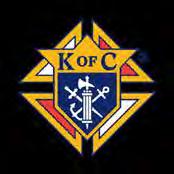
Lecturas Diarias
22–28 DE JUNIO
Domingo (Solemnidad del Santísimo Cuerpo y Sangre de Cristo): Gn 14,18-20, Sal 109,1.2.3.4, 1 Cor 11,23-26, Lc 9,11b-17; Lunes: Gn 12,1-9, Sal 32,12-13.18-19.20 y 22, Mt 7,1-5; Martes (Solemnidad del Nacimiento de San Juan Bautista): Is 49,1-6, Sal 138,1b-3.1314ab.14c-15, Hch 13,22-26, Lc 1,57-66.80; Miércoles: Gn 15,1-12.17-18, Sal 104,1-2.3-4.67.8-9, Mt 7,15-20; Jueves: Gn 16,1-12.15-16 o Gn 16,6b-12.15-16, Sal 105,1b-2.3-4a.4b-5, Mt 7,21-29; Viernes (Solemnidad del Sagrado Corazón de Jesús): Ez 34,11-16, Sal 22,13a.3b-4.5.6, Rom 5,5b-11, Lc 15,3-7; Sábado: Gn 18,1-15, Lc 1,46-47.48-49.50 y 53.54-55, Mt 8,5-17
para honrar su Sagrado Corazón. En ese día, los fieles debían ir a Misa, recibir la Sagrada Comunión, profesar su amor y ofrecer actos de reparación por las ofensas causadas por la humanidad. Las devociones del Primer Viernes y de la solemnidad del Sagrado Corazón de Jesús que celebramos hoy se basan en estas visiones. El amor y la compasión del Corazón de Jesús disipan las herejías del jansenismo.
Cuando Santa Margarita María intentó explicar por primera vez sus visiones, muchos a su alrededor dudaron de ella. Fue San Claude de la Colombière, su director espiritual jesuita, quien reconoció su santidad, fervor y sinceridad. Sin embargo, aunque algunos llegaron a creerle, al ser monja de clausura no podía hacer demasiado para promover estas revelaciones fuera de su comunidad. Por eso fue San Colombière y San Juan Eudes quienes continuaron difundiendo entre los fieles y la Santa Sede la petición de establecer una fiesta en honor al Sagrado Corazón.
El Vaticano dio su aprobación universal en agosto de 1856, bajo el pontificado de Pío IX (1846-1878). En 1899, el Papa León XIII (1878-1903), animado por los católicos de todo el mundo, consagró la humanidad al Sagrado Corazón.
Margarita María murió en 1690 y fue canonizada en 1920. Algunos sostienen que, al igual que en el siglo XVII, hoy nuestro fervor por el Sagrado Corazón está disminuyendo nuevamente. Si acudimos a las visiones y palabras de Santa Margarita María, una vez más podemos unirnos en torno a este símbolo, a esta fuente inagotable del amor de Cristo.
Caballeros de Colón
Considere unirse a los más de 2 millones de miembros de la organización fraternal católica más grande del mundo y registrándose en línea hoy en: www.kofc.org/joinus/es
Por tiempo limitado - Membresía en línea GRATISUse el código de promoción (BLESSEDMCGIVNEY)
29 DE JUNIO-5 DE JULIO Domingo (Solemnidad de San Pedro y San Pablo, apóstoles): Hch 12,1-11, Sal 33,2-3.4-5.6-7.8-9, 2 Tim 4,6-8.17-18, Mt 16,13-19; Lunes: Gn 18,16-33, Sal 102,1b-2.34.8-9.10-11, Mt 8,18-22; Martes: Gn 19,15-29, Sal 25,2-3.9-10.11-12, Mt 8,23-27; Miércoles: Gn 21,5.8-20a, Sal 33,7-8.10-11.12-13, Mt 8,28-34; Jueves (Fiesta de Santo Tomás, apóstol): Ef 2,19-22, Sal 116,1bc.2, Jn 20,2429; Viernes: Gn 23,1-4.19, 24,1-8.62-67, Sal 105,1b-2.3-4a.4b-5, Mt 9,9-13; Sábado: Gn 27,1-5.15-29, Sal 134,1b-2.3-4.5-6, Mt 9,14-17
6–12 DE JULIO
Domingo: Is 66,10-14c, Sal 65,1-3.4-5.67.16.20, Gal 6,14-18, Lc 10,1-12.17-20 o Lc 10,1-9; Lunes: Gn 28,10-22a, Sal 90,1-2.3-4.14-15ab, Mt 9,18-26; Martes: Gn 32,23-33, Sal 16,1b.23.6-7ab.8b y 15, Mt 9,32-38; Miércoles: Gn 41,55-57, 42,5-7a.17-24a, Sal 32,2-3.10-11.1819, Mt 10,1-7; Jueves: Gn 44,18-21.23b-29, 45,1-5, Sal 104,16-17.18-19.20-21, Mt 10,7-15; Viernes (Memoria de San Benito, abad): Gn 46,1-7.28-30, Sal 36,3-4.18-19.27-28.39-40, Mt 10,16-23; Sábado: Gn 49,29-32, 50,15-26a, Sal 104,1-2.3-4.6-7, Mt 10,24-33
Viernes y sábado, 5 y 6 de septiembre | Charlotte Convention Center | GRATIS

Únete a miles de fieles en una experiencia espiritual inolvidable que renovará tu fe, llenará tu corazón y fortalecerá tu esperanza.


Y además:
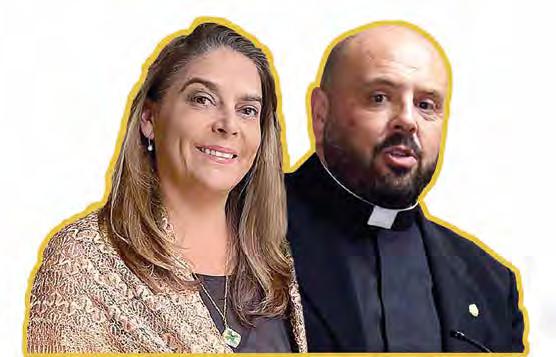

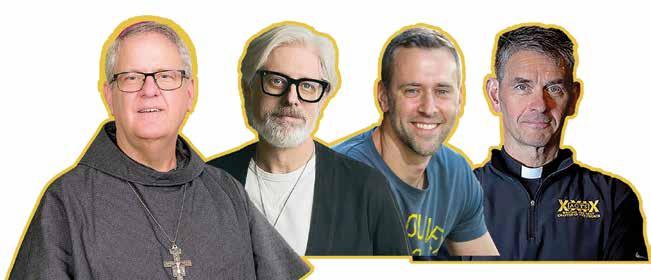
• Procesión Eucarística Y Adoración
• Santa Misa
• Confesiones
• Artículos católicos únicos
• Actividades especiales para jóvenes de secundaria y preparatoria



In message to Chicago youth, pope urges them to see God’s presence
CHICAGO — The community of Chicago gathered June 14 at Rate Field to celebrate the election of Pope Leo XIV – one of their own – with music, prayer and a strong sense of hometown pride.
Hosted by the Archdiocese of Chicago, the event included Mass and the first-ever public broadcast of Pope Leo’s message to young people. In it, the Holy Father encouraged young people to recognize God’s presence in their hearts and the people around them.
“Christ, who is our hope, calls all of us to
come together … to be the light of hope in the world today,” he said, inviting all to participate in the Jubilee Year of Hope.
He emphasized the importance of recognizing “that longing for love in our lives, for … searching, a true searching, for finding the ways that we may be able to do something with our own lives to serve others.” He said Christ, who is our hope, “calls all of us to come together, that we might be that true living example: the light of hope in the world today.”
The program before the Mass included reflections from those who knew him, video tributes and musical performances. “One of Us,” performed by an Augustinian brother, celebrated Pope Leo’s local roots with lyrics in English, Spanish and Latin.
ST. PAUL, Minn. — Catholic leaders in Minnesota are calling for prayers and a return to civility after the June 14 shooting deaths of former Minnesota House Speaker Melissa Hortman and her husband, Mark, in what Gov. Tim Walz described as a “politically motivated assassination.”

Just prior, Democratic State Sen. John Hoffman and his wife, Yvette, were shot multiple times in nearby Champlin. Both survived and underwent surgery. Hortman, a Democrat and former Sunday school teacher at St. Timothy in Blaine, was remembered as a principled leader.
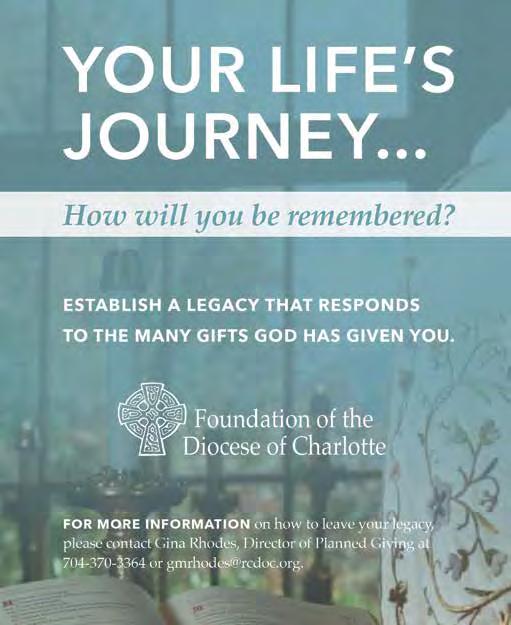
A manifesto found in the suspect’s vehicle suggested a broader political target list.
WASHINGTON, D.C. — In a little over a month since his election to the papacy, Pope Leo XIV has appeared to embrace his role as a head of state to promote Catholic principles about peacebuilding, an analyst told OSV News.
His actions could also impact U.S. diplomacy.
Pope Leo offered the Vatican as a host for talks to end Russia’s invasion of Ukraine and called for a ceasefire in Gaza, further urging
humanitarian aid to reach its residents.
Mary Ellen O’Connell, a professor at Notre Dame Law School who specializes in international law, said “times of transition such as this – for the Church, for states, for technology – offer both risk and opportunity.”
“Past assumptions no longer persuade, so new moral and legal solutions can be found,” she said. “It is a time fraught with both possibility and risk. The first weeks of Leo’s pontificate indicate reason for optimism. His offer of the Vatican to Russia and Ukraine as a venue for peace talks was inspired.”
Thomas Kak 6/25/2021 Please pray for the following deacons who died during the month of June
Canio Codella 6/25/1991
Edward Morovich 6/1/2000
Hugo May 6/23/2010
Gerald Hickey 6/6/2011
John Parrish 6/6/2015
Eugene Gillis 6/6/2017
Ronald Steinkamp 6/10/2018
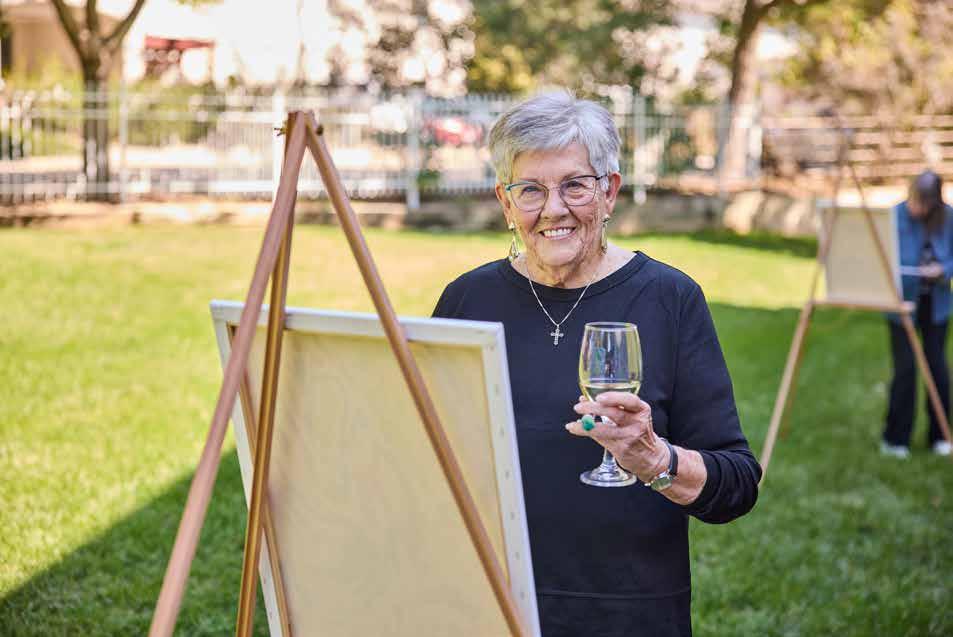


JUSTIN MCLELLAN Catholic News Service
VATICAN CITY — Pope Leo XIV will canonize Blesseds Carlo Acutis and Pier Giorgio Frassati together Sept. 7, the Vatican announced.
Meeting with cardinals living in and visiting Rome for an ordinary public consistory June 13, the pope approved the new canonization date for the two young blesseds and set Oct. 19 as the date for the canonization of seven others. .
The canonization of Blessed Acutis, a teenager known for his devotion to the Eucharist and creating an online exhibition of Eucharistic miracles, had originally been scheduled for April 27 during the Jubilee of Teenagers. It was postponed following the death of Pope Francis April 21.
Born in 1991 and raised in Milan, Italy, Blessed Acutis used his tech skills to evangelize and was noted for his joyful faith and compassion for others before dying of leukemia in 2006 at age 15.
Blessed Frassati, born in 1901 into a prominent family in Turin, Italy, was admired for his deep spirituality, love for the poor and enthusiasm for life. A member of the Dominican Third Order, he served the
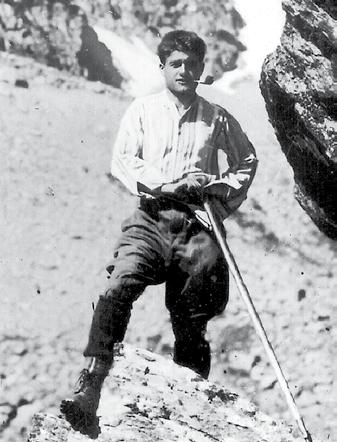

(From left) Italian Blessed Pier Giorgio Frassati was a struggling student who excelled in mountain climbing. He had complete faith in God and persevered through college, dedicating himself to helping the poor and supporting Church social teaching. He died at age 24 and was beatified by St. John Paul II in 1990. On May 23, 2024, Pope Francis recognized the second miracle needed for the canonization of Blessed Carlo Acutis, who died of leukemia in 2006 at age 15. His planned canonization was put on hold following Pope Francis’ death April 21. Many pilgrims who had journeyed to Rome for his canonization instead attended the April 26 funeral of Pope Francis.
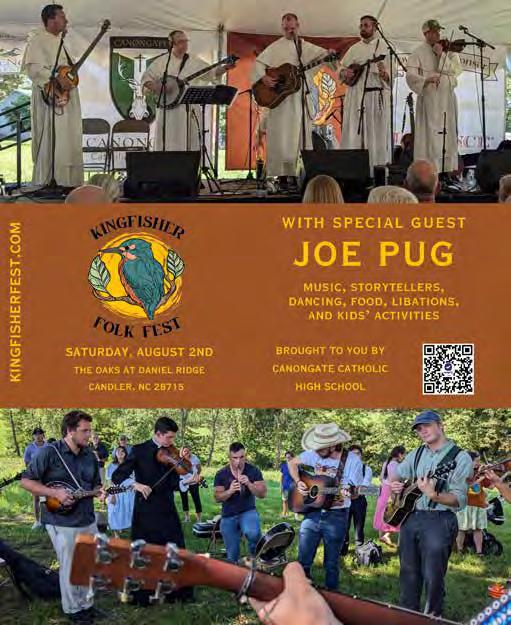
sick through the St. Vincent de Paul Society. He died at age 24 after contracting polio, possibly from one of the people he assisted.
The two will be the first saints proclaimed by the new pope, who was elected May 8.
Although the Vatican had never officially set a date for Blessed Frassati’s canonization, Pope Francis said last November that he intended to proclaim him a saint during the Jubilee of Youth July 28-Aug. 3. The official website of Blessed Frassati’s canonization cause had said the canonization would take place Aug. 3, when the pope was scheduled to celebrate Mass with thousands of young people on the outskirts of Rome.
Wanda Gawronska, Blessed Frassati’s niece and a longtime promoter of his sainthood cause, told Catholic News Service she was disappointed in the date change, noting that “thousands and thousands of people have tickets to come to Rome for the canonization in August.”
During the same consistory, Pope Leo also confirmed that seven other blesseds will be canonized Oct. 19, World Mission Sunday. The group includes men and women from five countries, among them martyrs, founders of religious congregations and laypeople recognized for their heroic virtue and service.

Turn your unused car, truck, boat, RV, or motorcycle into a force for good. Donate it to Catholic Charities and help fund programs for those in need. And receive a tax benefit!
All vehicle makes and models are accepted.


way. They can go out one door and into the other, so (wandering) doesn’t matter. They are safe. It is not the end of your life here, but the beginning of it going somewhere else.”
Sister Lucy pauses for a quick prayer at the Perpetual Adoration Chapel, one of her favorite elements at Pennybyrn, accessible 24 hours a day.
The drive for a chapel began with no cash on hand, just a prayer on a slip of paper with $250,000 written on it, which she placed under a statue of the Infant of Prague. Soon enough, generous donors of all faiths raised $300,000 and the adoration volunteer list now exceeds 300 names. The community has kept the chapel open for more than 25 years, and for Sister Lucy, it is critical that it remains that way.
With a story like this, Sister Lucy is determined that the character and values –Catholic values – remain at Pennybyrn. In 2022, when the sisters got word they were to be called home, they carefully considered whether to sell to a corporation or transfer Pennybyrn to another organization that would commit to upholding this culture of care.
They spoke with Monsignor Winslow and signed an agreement with Bishop Peter Jugis for the Diocese of Charlotte to assume the pastoral sponsorship, which called for a three-year transition period during which the sisters could teach diocesan leaders about Pennybyrn.
In Year 1, Sister Lucy retained her role as mission leader and chairperson of the board. In Year 2, the bishop assigned Father
Stephen Hoyt to accompany Sister Lucy to learn more about the community’s culture and operations. And now, as Year 3 wraps up, Father Hoyt has fully assumed Sister Lucy’s positions as board chair, director of pastoral care and mission leader, while she accompanied him.
“Father Steve is more than we could have hoped for – we sisters are confident he will safeguard all we have established here over generations,” Sister Lucy says. “He is affable and welcoming. He is very active ministering to our residents, visiting the sick, administering last rites and demonstrating Catholic values as well as our ecumenical spirit, embracing people of other faiths.”
Pennybyrn’s owner Maryfield Inc., its board of directors, leadership team and
staff will remain the same, and no changes are planned in operations. It is the spiritual sponsorship of the community that transitions now, a change the diocese and the sisters want to be seamless for residents.
With Pennybyrn landing in good hands, Sister Lucy is able to enjoy the smaller elegances of the world she will soon leave behind, such as the art seeded throughout the Pennybyrn grounds. There are three art galleries and programs promoting the artistic and musical abilities of the seniors.
“Art is very nice because it revives your soul,” she says. “It encourages people to pray, it touches them and helps them get engaged, and they are able to communicate with the Lord.”

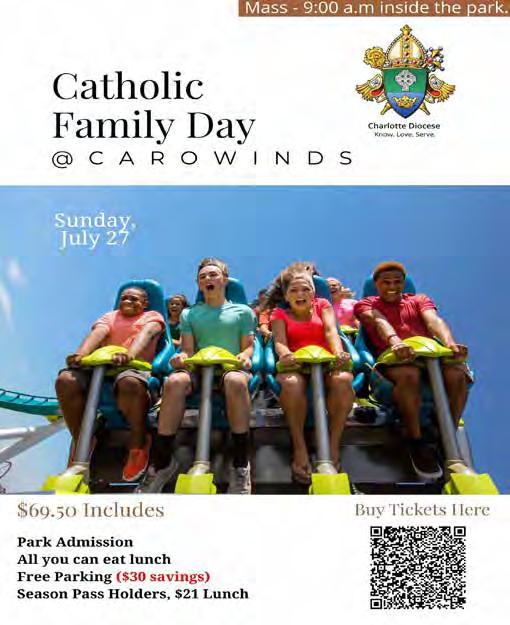
Particularly special are the dignified artistic touches in the cemetery for the departed Sisters of the Poor Servants of the Mother of God. “It’s so peaceful here,” she says, amid statues of the Blessed Mother and the Sacred Heart of Jesus.
The sisters also erected a stone memorial commemorating departed SMG sisters who came to the New World on a mission. Sister Lucy traces the engraved names with her fingertips and prays for those whose lives mirrored her own.
“I was very happy to be here,” she muses, “and now the Lord needs me somewhere else, and I know He will continue to bless everybody. Anything we did while we were here was through the people and through the power of prayer –a lot of praying.”
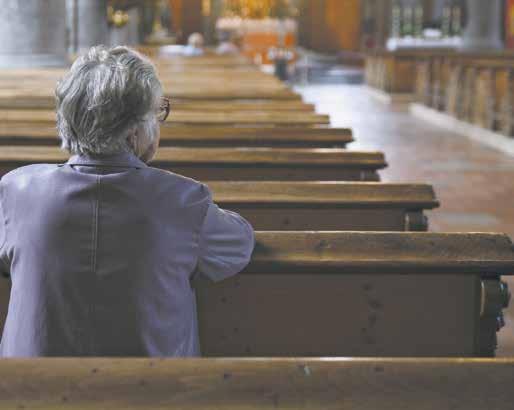

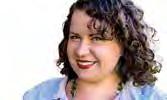
Kathryn Heim
Inever would have anticipated how my life looks right now, nor would anyone who knew me in my 20s, and yet by letting God direct my path, I feel He has blessed me beyond measure.
My plan when I was younger was to become a bestselling novelist, going on book tours and traveling around the country and perhaps even the world. I was never particularly interested in dating or starting my own family; I was content to be the cool, unmarried aunt, spoiling my nieces and nephews and then handing them back to their parents for diaper changes, bedtimes or discipline. Even after I became Catholic in my mid-20s, I didn’t feel I was being called to either marriage and children or to religious life. But now I’m in my late-30s, with an unfinished novel I’ve been working on for the last decade, married for three years, having just given birth to my first child this past
‘Sometimes the crosses we bear are the paths we thought we would walk.’
winter, preparing to permanently promise myself as a third order Dominican, and I couldn’t be happier or more content.
Thankfully, I’ve always appreciated the saying about how we make our plans and God just laughs.
This shift from how I thought my life would be to how it turned out was not always easy and has required a great deal of selfsurrender and adjustment to how I saw my own identity. At times, it was hard to let go of who I thought I was, who I wanted to be and how others viewed me. It was hard to give up the idea that I was responsible for what my life would look like.
The modern idea of “freedom” is one where we are in control, able to choose from an abundance of options for our own satisfaction, with no infringement on our desires. That understanding can lead us into believing we are in conflict with God, that His desires are impeding ours somehow. However, the Catechism of the Catholic Church says, “Human freedom is a force for growth and maturity in truth and goodness; it attains its perfection when directed toward God, our beatitude” (1731). The true meaning of freedom is the ability to choose that which will lead us to sanctification and closeness with God, which will be the greatest joy and fulfillment we could ever experience. Our God is a God of love; He is Love Itself. The Lord loves us so much, not only did He give each one of us life and an eternal soul, He gave us Himself. He feeds us with His very Body and Blood and gave Himself
over to death that we might be saved and join Him in eternity. He loves us with a Father’s love, of which earthly fathers are only a mere shadow.
As Jesus says, “What father among you, if his son asks for a fish would give him a serpent; or if he asks for an egg give him a scorpion? If you then, who are evil, know how to give good gifts to your children, how much more will the heavenly Father give the Holy Spirit to those who ask him” (Luke 11:11). Not only does God love us, but He also knows what will lead to our greatest happiness. Our vocations are the paths He has laid for each one of us, as individual as we are.
Even the apostles argued about who was the greatest among them, so we will probably always have the debates about what is the “best” vocation. Married or religious life? Working outside the home or working fulltime raising your kids? Advancing in this career or choosing another?
We judge ourselves and those around us by our profession, number of children and other accomplishments, without ever acknowledging how much is out of our hands. Even though I would now love to have a big family with any number of kids, I didn’t meet and marry my husband until I was already in my mid-30s, and now my fertility window is limited. Even though I have dozens of ideas for novels and other books, I spent the last two decades primarily as a caregiver for family members and now will spend at least the next two decades as the same. Most of my life has been a response to circumstances rather than a conscious choice between one thing or another.
Sometimes the crosses we bear are the paths we thought we would walk and didn’t, but we must still trust that the path God set us is the one that will best lead us to Him.
Even our crosses are gifts of God’s love. As St. Francis de Sales wrote, “The everlasting God has in His wisdom foreseen from eternity the cross that He now presents to you as a gift from His inmost heart. … He has blessed it with His holy Name, anointed it with His consolation, taken one last glance at you and your courage, and then sent it to you from heaven, a special greeting from God to you, an alms of the all-merciful love of God.”
The best vocation is the one that God has chosen for you specifically, for you are a unique, unrepeatable soul and your path is not another’s.
Even if I go through the rest of life with a host of unfinished manuscripts, or even no manuscripts at all, when I look at my son I will know I contributed something great to this world. If I had never had children, I like to think the books I would have written would still have made a difference and impacted souls.
Not my will, but His. Always His.
KATHRYN HEIM is an author, wife and mother living outside Salisbury, where she gardens, raises chickens, experiments with cooking and reads too many books. Find her work at kathrynheim.com.
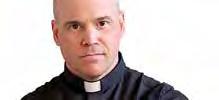
As Jesus passed on from there, He saw a man called Matthew sitting at the tax office; and He said to him, “Follow me.” And he rose and followed Him.
And as He sat at table in the house, behold, many tax collectors and sinners came and sat down with Jesus and His disciples. And when the Pharisees saw this, they said to His disciples, “Why does your teacher eat with tax collectors and sinners?”
But when He heard it, He said, “Those who are well have no need of a physician, but those who are sick. Go and learn what this means, ‘I desire mercy, and not sacrifice.’ For I came not to call the righteous, but sinners.”
— Matthew 9:9-13
The call of St. Matthew, apostle and evangelist, is one of the great and memorable scenes in the New Testament.
At its heart is the mystery of vocation and discipleship. The call of Christ comes to Matthew unexpected and compels him to a decision that will not only change what he does with his life, but who he is as a person.
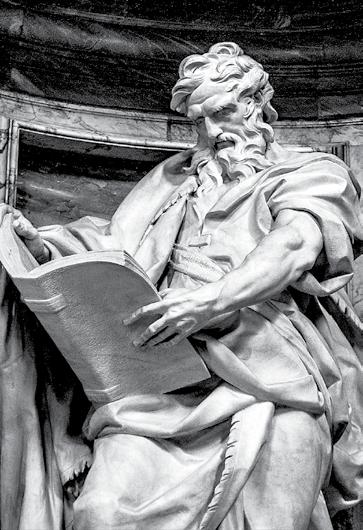
The summons Matthew receives was not something he could have predicted, and the outcome of his decision to follow Christ was not something that he would be able to control.
MORE THAN CHOOSING A CAREER
This is all about the mystery and power of vocation. Vocation is not just about getting a job or choosing a career. Instead, it is about God’s will and purpose for our lives. As such, vocation exposes us to the vulnerability of genuine faith. Further, vocation is not simply about what one “does” with one’s life; it is about what God’s will is for a person. This is an important distinction for us, as our culture assumes that a person’s identity is almost exclusively defined by what someone does or is doing rather than who they are.
It is the divine will that reveals who a person is to the depth of their being, which is why to miss one’s vocation is no small thing. It means that one misses their purpose, and that despite all kinds of accomplishments, one will remain unfulfilled. This is also a great cultural challenge, because the prevailing understanding of a fulfilled life in our times is based not so much on the fulfillment of God’s purpose for our lives but on our own decisions and the need to have “experiences.”
Therefore, what Christ reveals as vocation – priesthood, marriage, religious life – these are not career options. They are illuminations of the purpose and meaning of our lives. We are chosen for these things, and like St. Matthew, we become who we are meant to be in our response to this divine call.
One of the tragedies of our time is the crisis of vocations. Often this is looked upon as some kind of staffing problem for our churches – we won’t get the level of service that we have grown accustomed to. That’s not the crisis at all. The crisis is that many people, summoned by God to serve him in priesthood, in marriage, in religious life, lack the spiritual means to discern that call or cannot see the gravity of what happens when a divine call is refused or opposed. To refuse one’s vocation is to lose the purpose of one’s life! That is the challenge of our time. May all the apostles intercede for us and bring us to a deeper appreciation of the urgency of our vocation.
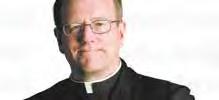
Iwas in Rome last month, providing commentary for various news networks who were covering the papal conclave. It was a fascinating, exhausting and exhilarating seven days! And it culminated, to everyone’s astonishment, with the election of a pope from America, indeed from my own hometown of Chicago. Because I was moving from network to network, I spent a lot of time driving around Rome, going from pillar to post. In the process, I passed many of the monuments of the ancient empire.
I drove past the Largo Argentina, where Julius Caesar was assassinated in 44 B.C. I spied the Circus Maximus, where games and chariot races were regularly held when Rome was at the height of its influence.
Just above the Circus Maximus, perched on the Palatine Hill, I saw the remains of the palace of the emperor. And just to the east of the Palatine I saw, stretched out before me, the Roman Forum from which the sprawling empire of the Caesars was once governed.
Often during my travels through the city, I observed the great Colosseum, where the gladiatorial games were held, and which provided the model for practically every stadium in the Western world.
It is simply impossible to take all of this in and not marvel at the grandeur that was the Roman Empire.
WHERE IS THE MIGHTY EMPIRE NOW?
Around the year 60, when Rome dominated the entire Mediterranean and when its armies struck terror in the hearts of millions, a middle-aged fisherman from Capernaum in Galilee named Simon Bar-Jonah made his way to the great city. This man had known Jesus of Nazareth, who had given him the nickname “Peter” or “Rocky.” And he came to Rome in order to tell the world that his friend, whom the Roman governor had brutally crucified, had risen from the dead.
So disagreeable did the authorities find this message that, around the year 64, they rounded up Peter and brought him to the Circus of Nero, situated outside the city, to the west of the Tiber River. There they crucified him upside down, and when their brutal work was finished, they cut him down and dragged his body to a cemetery that was immediately adjacent on the Vatican Hill and buried him.
Anyone watching that scene unfold would have confidently predicted that the poor man would be forgotten forever and that the movement he advocated would soon enough be eliminated by the mighty Roman juggernaut.
But where is the Roman Empire?
Answer: Nowhere, crumbled to dust. Where is the successor of Nero? Answer: He doesn’t exist. And what of the Forum, the Colosseum, the Circus Maximus and the imperial palace on the Palatine Hill?
Answer: All in ruins.
But where is the empire of the Galilean fisherman buried on the Vatican Hill?
Everywhere in the world, east to west, north to south. And where is the successor of Peter? Well, I saw him with my own eyes walk out onto the front loggia of the massive basilica that marks the burial place of Peter. His name is Leo XIV, and he is the 266th successor in an unbroken line from Simon Bar-Jonah.
WHICH KING WILL YOU FOLLOW?
Simon’s friend from Nazareth, just after he gave Peter his distinctive nickname, said, “You are the rock on which I will build my Church, and the gates of hell shall not prevail against it.” The enemies of Rome prevailed against that empire many centuries ago, but it is a verifiable fact that the enemies of the Church, despite their very best efforts, have not managed to bring it down.
‘St. Augustine, the 5thcentury bishop of Hippo, posed a simple but penetrating question to his readers: Of which city will you become a citizen? Which king will you follow?’
At the beginning of the fifth century, Augustine, the bishop of the North African city of Hippo, wrote a treatise called “The City of God.” The central argument of that lengthy and complex work is that the Roman order, based on violence and the lust to dominate, could not long endure and that the order of Christ’s kingdom, based on forgiveness, compassion and nonviolence, would last until the return of the Lord.
Following upon that observation, Augustine posed a simple but penetrating question to his readers: Of which city will you become a citizen? Which king will you follow? My recent sojourn in Rome, which brought to mind so vividly the kingdom of Caesar and the kingdom of Christ, compels me to comes to terms with those same questions.
BISHOP ROBERT BARRON is the founder of Word on Fire and bishop of the Diocese of Winona-Rochester in Minnesota. This commentary was originally published at www.wordonfire.org.

‘Sport is a means of building peace, since, as a training ground of fairness and respect for others, it fosters a culture of encounter and fraternity.’
Pope Leo XIV
From online story: “Pope addresses instances of violence against Christians, prays for peace”

The Catholic News Herald reached the Facebook and Instagram feeds of more than 1.4 million people in English and Spanish last month. The most talked about post? Coverage of the recent ordinations. Join the conversation: www.facebook.com/ CatholicNewsHerald
On YouTube in June so far, videos produced by the Catholic News Herald have been viewed more than 25,000 times. The most popular video? Livestream of the June 14 priesthood ordination Mass.
The last 30 days through June 18, 70,000 visitors to www.catholicnewsherald.com have viewed a total of 129,000 pages. The top 10 trending headlines are:

The Catholic News Herald welcomes letters from readers. We ask that letters be originals of 250 words or fewer, pertain to recent newspaper content or Catholic issues, and be written from a perspective of Christian charity.
To be considered for publication, each letter must include the name, address and daytime phone number of the writer for purpose of verification. Letters may be condensed due to space limitations and edited for clarity, style and factual accuracy.



The Catholic News Herald does not publish poetry, form letters or petitions. Items submitted to The Catholic News Herald become the property of the newspaper and are subject to reuse, in whole or in part, in print, electronic formats and archives.
E-mail: catholicnews@rcdoc.org
Mail: Letters to the Editor Catholic News Herald 1123 S. Church St. Charlotte, N.C. 28203

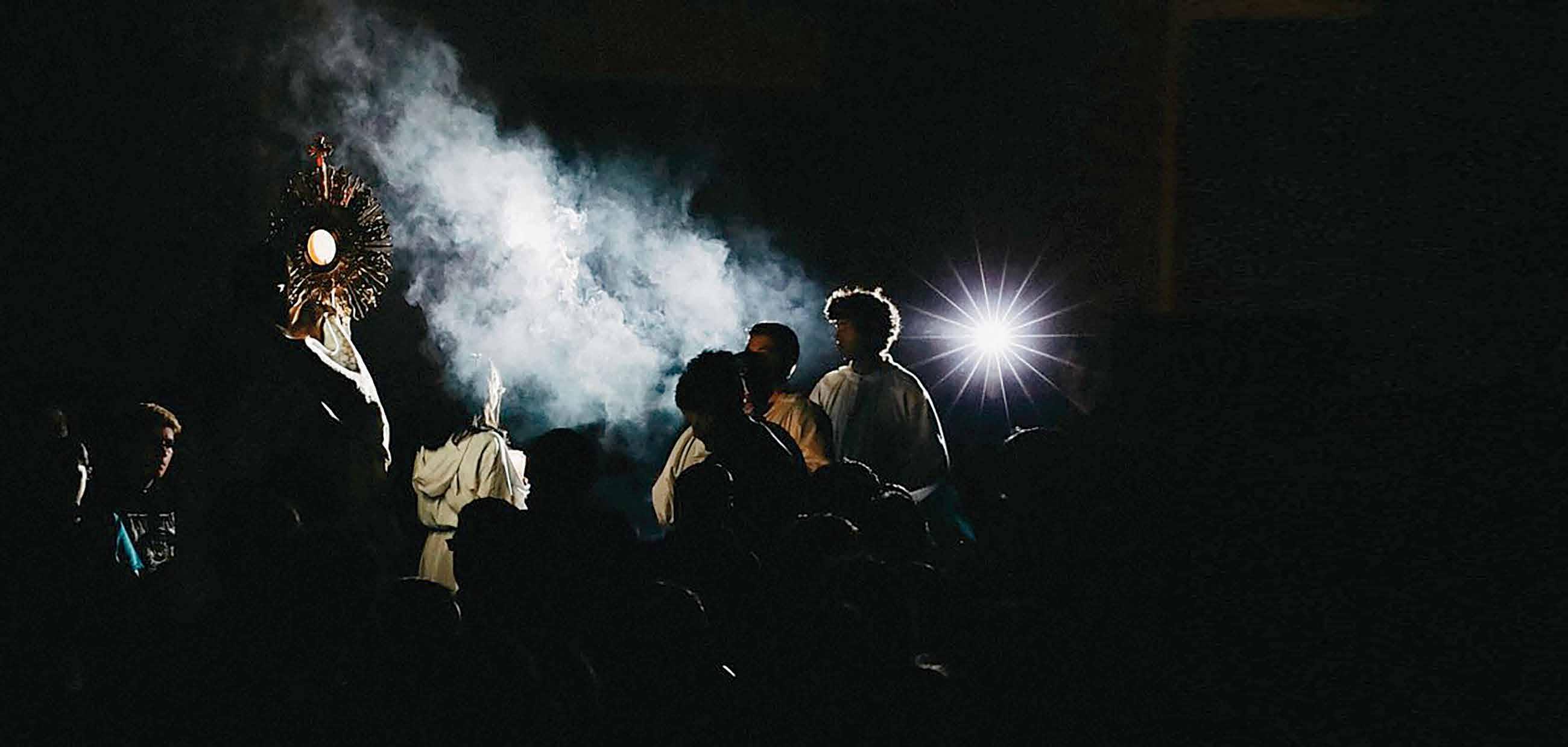










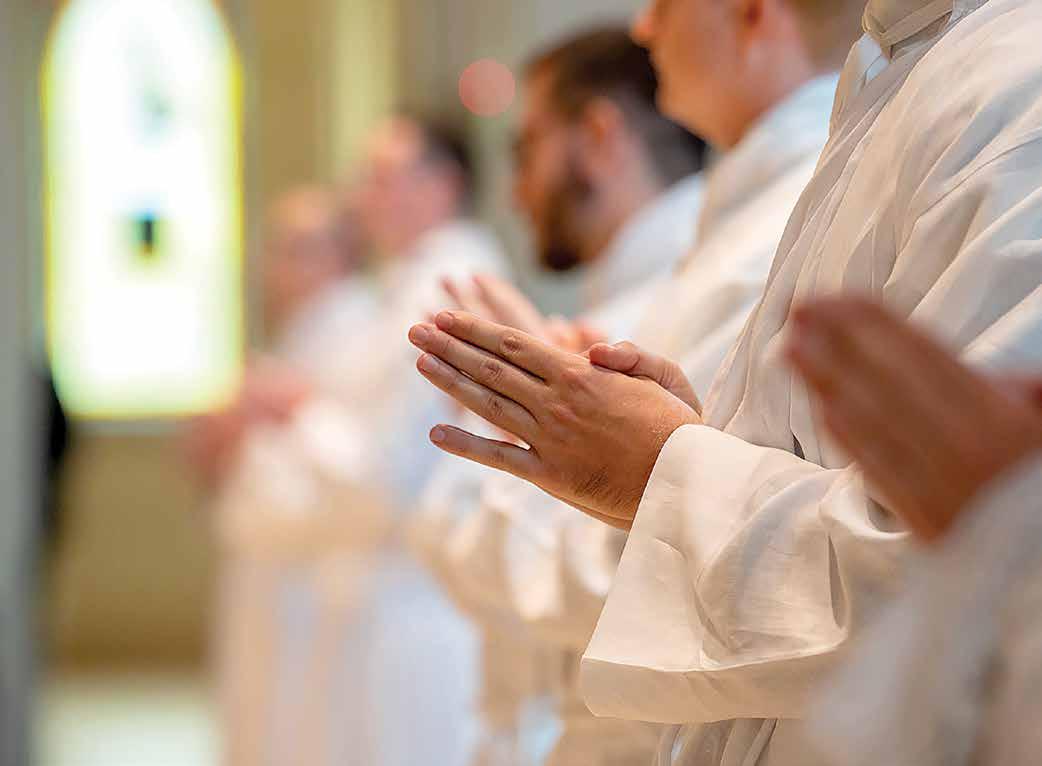
‘Keep your eyes on Him’
‘Mantengan la mirada en Él’


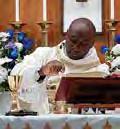
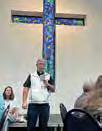
CHRISTINA LEE KNAUSS clknauss@rcdoc.org
Thismonth’s ordinations mark two milestones for the Diocese of Charlotte. For the first time, all of those ordained priests and deacons are a product of St. Joseph College Seminary, the diocese’s own homegrown incubator for priestly vocations. And two priests instrumental with the seminary’s founding mark their own jubilee anniversaries of ordination.
The ordinations of seven deacons on June 7 and six priests on June 14 reflect the growing impact of the college seminary. Since its founding in 2016, St. Joseph College Seminary in Mount Holly has become a catalyst for the diocese’s thriving vocation efforts – forming young men close to home, grounded in the parishes they will one day serve.
In its nine years, the seminary has welcomed 75 men, and so far 14 have completed formation and been ordained priests.
The new priests and deacons –who began their formation at St. Joseph between 2017 and 2021 – say the college seminary made “a big difference” as it is close to home and involves clergy they know.
“It made a lot easier to say OK to it because I’m staying locally,” said newly ordained Father Christopher Angermeyer, whose home parish is St. Thomas Aquinas in Charlotte. “I knew all the priests that were involved, so it made a bit of the decision easier. I knew these priests and I trusted them.”
Father Matthew Kauth, who has served as rector since its founding, notes, “The seminary provides real continuity because the men grow up in our parishes, are fostered by our families, and their formation and growth in virtue is rooted in the diocese. It helps to root them in this diocese where they will eventually serve.
“The seminary, in essence, becomes the heart of the diocese.”
Founded by Bishop Peter Jugis in response to rising interest in the priesthood among local teens and college-age men, St. Joseph College Seminary stands out nationally. It’s the only minor seminary between Washington, D.C., and Miami, and the only one dedicated to serving a specific diocese in the Southeast.
Bishop Jugis, a Charlotte native,
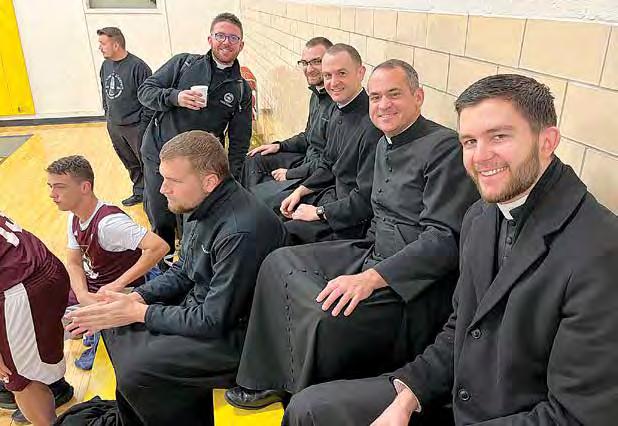
‘The seminary provides real continuity because they grow up in our parishes, are fostered by our families, their formation and growth in virtue is rooted in the diocese.’ – Father Matthew Kauth
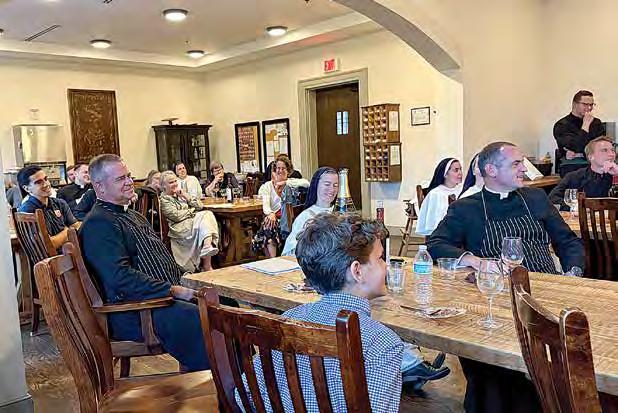
envisioned the seminary as a place where much-needed vocations for the growing diocese could begin early – without sending young men far from home.
In a 2024 interview, Bishop Jugis recounted there were few options in the diocese when he was considering the priesthood. In his own discernment as a teenager growing up in Charlotte, he recalled being told to go take some philosophy classes in college and come back after graduation.
“After I became bishop, we began to discover, in responding to the needs of the times, that there were more and more young people in their late teens who were approaching the diocese and their pastors about feeling called to the priesthood or consecrated life,” he said. “I didn’t feel it right to say, ‘Well, come back in two or three years,’ because they were hungry for formation, much like I was.”
The seminary began modestly –eight men living in a former convent behind St. Ann Church in Charlotte. A permanent building opened in 2020 on an 86-acre site, with Gothicstyle architecture reminiscent of nearby Belmont Abbey College, where the seminarians earn their bachelor’s degrees and go on to major seminaries elsewhere to complete their formation.
The proximity of the seminary to home is not just practical, it’s vital, seminarians and clergy agree.
“Honestly, I’m not sure I would have entered seminary without having it,” said newly ordained Deacon Michael Lugo. “Being able to visit regularly, see the community and be a part of it in some way was a huge benefit to my discernment.”
The college seminarians follow a rigorous daily routine similar to what they would in major seminary or in a religious order: daily Mass and prayer time, spiritual direction, classes, chores, fellowship and more.
“There’s a better understanding of what being in (major) seminary is like,” explains Father Angermeyer. “I think it makes young men feel more comfortable actually trying to enter.”
The sense of familiarity and connection is by design. Seminarians remain active throughout the diocese, attending diocesan liturgies, serving in parishes during their summer breaks, and helping with vocations camps like Quo Vadis Days. These encounters enable young men considering the priesthood to meet peers who have taken the first steps – and see their own path more clearly.
Newly ordained Father Nicholas Kramer said when he was younger, he would drive down to the seminary in Mount
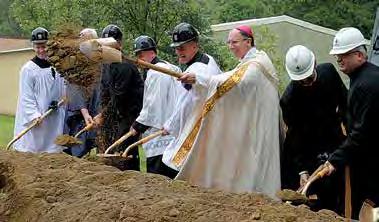
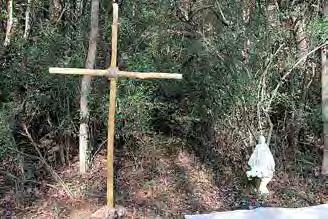
Holly and hang out for a day. That was hugely impactful, he says.
“When the time came when I did enter seminary, it wasn’t like I was isolated from my friends and family. I knew a lot of people there already just because of the things in the local diocese. I was connected to the diocese, which I think as a diocesan priest is a really important thing for us early on in formation, to get connected to our diocese. Because for us, our diocese is the place in which, unless the bishop decides to send me somewhere else, I will be ministering for the rest of my life.”
This presence of seminarians in and around the diocese, and the opportunity to forge strong bonds of brotherhood, were also key for John Cuppett, who was ordained a transitional deacon earlier this month.
“Watching them gave me courage to follow our Lord as well,” Deacon Cuppett says.
He originally went to Belmont Abbey College on a baseball scholarship before discerning a vocation. He describes the community aspect of the seminary as “the perfect seedbed” with all the elements necessary to help develop his relationship with Christ.
“Fostering a life of prayer provided the structure to order my life around the source and summit of my faith in the Eucharist and the sacraments, which is the essence of the priesthood,” he says.
‘WHATEVER I HAVE, THEY HAVE’
This year’s celebration is also a special moment for two key figures in the college seminary’s founding. Father Kauth and Father Christopher Gober, the diocese’s longtime vocations director, are both celebrating 25 years of priesthood. The two grew up together and were both ordained on June 3, 2000, for the Charlotte diocese.
Father Gober, who is stepping down in July after 21 years as vocations director to focus on the needs of his growing Winston-Salem parish, helped support the establishment of the college seminary and guided the ordination of 57 men to the priesthood during his tenure.
“It’s been a tremendous blessing to serve the people of God in the various parishes I’ve been assigned to, and to do my small part to try to cultivate vocations to the priesthood for the diocese over these many years,” he says.
For Father Kauth, the experience of mentoring seminarians is deeply personal.
“Whatever I’ve gained as a priest I pour into them,” he says. “Whatever I have, they have. Through this work you expand your influence, and it multiplies as these men go on to the priesthood. It’s
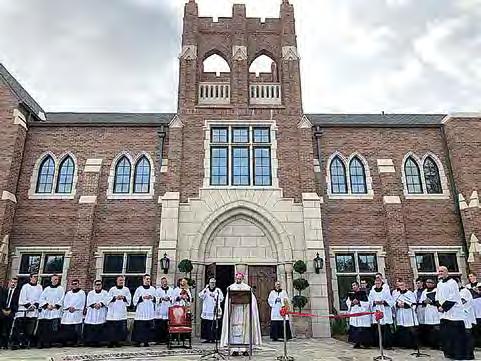
a form of fatherhood, and I could not be more delighted than to be able to have this experience of spiritual fatherhood.”
As the six newly ordained priests begin their ministries, they carry with them the impact of formation rooted in diocesan soil – formed by priests they knew, shaped in the parishes where they first heard the call.
“Although it’s hard to measure success when determining the work of the Holy Spirit, I would credit most, if not all the success, to the formation at the seminary,” says Deacon Cuppett. “It was there that
the faith and the Scriptures were opened to me and the Church of Jesus Christ was presented in the most extraordinary way.”
Newly ordained Father Bryan Ilagor adds, “While many dioceses in the United States may struggle with ordaining a few and sometimes no vocations for ordinations, the Diocese of Charlotte has many good men willing to sacrifice to serve the local Church. I feel more prepared during these past seven years to honor my commitment to the Diocese of Charlotte with newly ordained Bishop Michael Martin to say yes, Lord, to the best of my abilities, ‘I come to do your will.’”

If you or someone you know is contemplating a vocation to the priesthood, diaconate or religious life, check out the following general resources online.
Talk with your pastor, reach out to the diocese’s vocations promoter, read up on consecrated life and the various religious communities that exist, and contact communities that interest you. Many offer “come and see” days or retreats that are good opportunities to learn more and meet others who have already accepted God’s call to religious life. For young men and women, there are also summer discernment retreats offered by the Diocese of Charlotte and hosted at Belmont Abbey College: Quo Vadis Days for young men, and Duc In Altum and Talitha Koum for young women. Information about the 2026 retreats will be posted next spring online at www.charlottediocese.org/ vocations
Overall, remember: Don’t be afraid to reach out and ask questions!
n Father Brian Becker, vocations promoter: bjbecker@rcdoc.org
n www.foryourvocation.org: Set up by the U.S. Conference of Catholic Bishops, dedicated to the promotion of vocations to the priesthood and consecrated life for both men and women. They are also on Facebook and YouTube. There are resources for parents and teachers, questions to ask yourself if you feel God is calling you, videos of vocation stories from priests and religious all over the U.S., and more.
n www.religiouslife.com: The Institute for Religious Life’s website, with plenty of resources for both men and women interested in a vocation or those who wish to support religious life.
n Not sure what religious communities are out there that might be a good fit for you? Check out www.religiousministries.com. Search this database to find a men’s or women’s religious community, whether you wish to become a priest, nun, brother or lay missioner, or just want to find out more about living a religious life.
n www.cloisteredlife.com: Aims to bring to attention the gift of cloistered and monastic life in the Church, sponsored by the Institute for Religious Life.
n www.cmsm.org: The Conference of Major Superiors of Men serves the leadership of the Catholic orders and congregations of the more than 17,000 vowed religious priests and brothers in the U.S. n www.religiousbrotherhood.com: Sponsored by the Institute for Religious Life specifically to increase awareness of the specific charism of religious brotherhood in the U.S.
n www.cmswr.org: The Council of Major Superiors of Women Religious (CMSWR) is a canonically approved organization, founded in 1992, to promote religious life in the U.S. n www.lcwr.org: The Leadership Conference of Women Religious (LCWR) is an association of the leaders of congregations of Catholic women religious in the U.S.
If you would like to know more about deacons and their ministry or feel you may have a calling, please contact Deacon David Faunce, director of formation, at dmfaunce@rcdoc.org or Deacon Joseph Becker, assistant director of formation, at jcbecker@ rcdoc.org. Details can be found online at www. charlottediocese.org/vocations/diaconate
— Catholic News Herald

CHRISTINA LEE KNAUSS clknauss@rcdoc.org
— The Diocese of Charlotte has gained six new priests, ordained by Bishop Michael Martin on June 14 at St. Mark Church.
The new priests are Father Christopher Angermeyer, Father Anthony del Cid Lucero, Father Nicholas Kramer, Father Kolbe Murrey, Father Andrew Templeton and Father Joseph Yellico.
About 1,300 people packed the church and overflowed into the parish hall to see the six men begin their priestly lives of service to Christ, His Church and the faithful. The ordination also drew more than 200 people who watched the livestream of the event, including Father Lucero’s family who watched from Guatemala.
At the start of the ordination rite, the six men stood in front of Bishop Martin and declared their willingness to be ordained and take on the duties of the priesthood.
WITH CLEAR VISION, SEEK OUT THE LOST
Bishop Martin offered a homily that focused on the importance of having a clear vision in priestly ministry. He
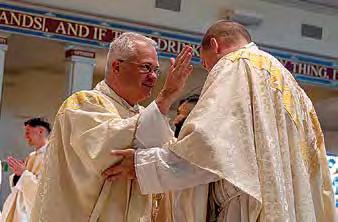
described the stresses of taking a recent eye exam, including the challenge of repeatedly choosing which of two nearly identical lines of type was clearer. “What’s more clear, one or
two?” he said the optometrist repeatedly asked him.
Seeking a clear vision of what God wants will be their new life’s mission, he told the men.
“The rest of your life will be a journey of clarity. Will you see clearly through the haze and the fog that sometimes our world presents?” he asked them. “Your vision in this moment is not just important for you, but it’s important for the entire Church now. Because where you will lead because of what you see is where others will follow.”
Bishop Martin said important lessons about clarity in ministry could be found in the day’s readings. The first reading from Ezekiel (34:11-16) focused on the image of a shepherd seeking out lost sheep in his flock, including the strays, the injured and the weak. He urged the men to recognize the brokenness of the world and the importance of reaching out to all those they are called to serve.
“Ezekiel talks about going out and looking for, seeing, the lost sheep, the broken sheep, the injured sheep,” he said. “You have to see them, too, and be willing to go out and bring them back, walk with them back, let them know that they are seen, and they are known and they are loved,” he told them.
The second reading from Paul’s letter to the Hebrews (5:110) focused on the beauty of obedience through suffering, and the perfect example of Christ’s obedience shown through the crucifixion.
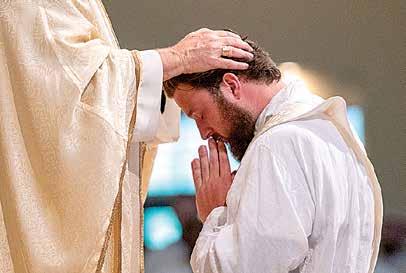
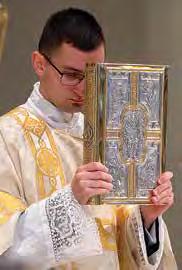
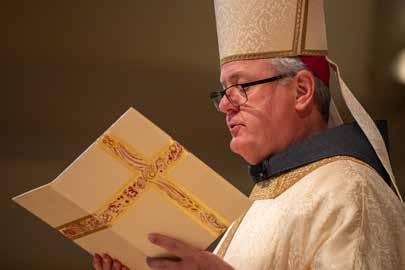
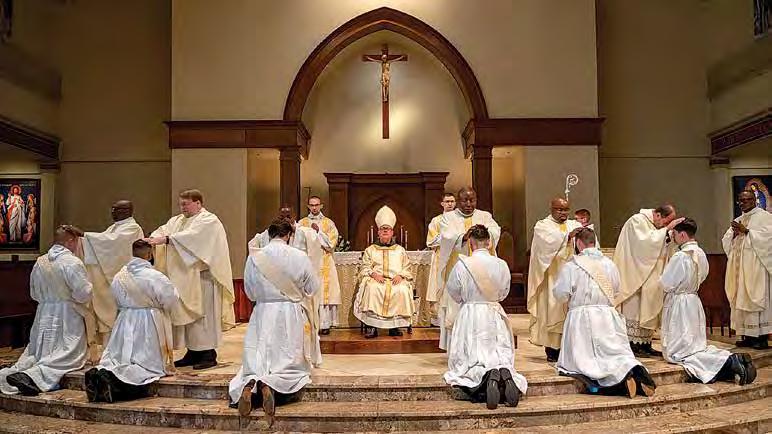
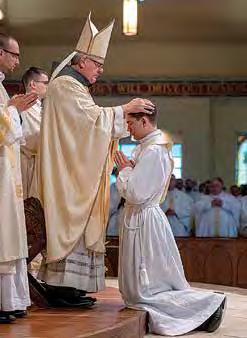
“Your obedience will be made manifest in your own crosses, the difficulties of life that you will have to endure,” he said. “He talks about this call to obedience through suffering as a call from God. It is. What you are embarking upon today is a call from God.”
He continued, “No one would choose what you said yes to on your own. Realize that you’re being called by God to sacrifice. Let that reconfirm every single day in the midst of the difficulties, in the midst of the challenge. Realize that this (the priesthood) is what I’m called to do, and I embrace it.”
Bishop Martin urged the men to keep their vision focused on Christ much as a farmer must focus on a spot on the horizon to plow straight furrows in a field.
“My brothers, the spot on the horizon is clear. One or two? It’s only one. There’s the spot on the horizon. It’s Jesus Christ, the high priest, crucified, for you and me,” he said.
“Keep your eyes on Him, and let Him pull you, and all of the sheep you will serve, following in behind to a new heaven and a new earth where the harvest is rich and
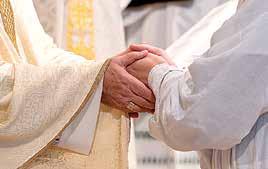
bountiful and beautiful.”
When the homily concluded, the men lay prostrate during the Litany of Supplication. The bishop then laid his hands on their hands and prayed over them. A long line of priests who attended the ordination Mass then laid hands on the men as a symbol of priestly unity.
The six were then vested with their priestly stole and chasuble by priests who had played meaningful roles in their lives. Their hands were anointed with sacred chrism and
Following their ordination, Bishop Michael Martin announced where each of the new priests will serve, starting July 8:
n Father Christopher Angermeyer: St. Mark Parish in Huntersville
n Father Anthony del Cid Lucero: St. Michael the Archangel Parish in Gastonia
n Father Nicholas Kramer: St. Matthew Parish in Charlotte
n Father Kolbe Murrey: St. Thomas Aquinas Parish in Charlotte
n Father Andrew Templeton: St. Luke Parish in Mint Hill
n Father Joseph Yellico: Campus Minister at UNC-Charlotte
they were presented with the gifts of bread and wine as a symbol of their new ability to celebrate Mass. They then received the fraternal kiss of peace from Bishop Martin and the other priests in attendance.
The St. Mark’s choir offered a beautiful assortment of chants and hymns to accompany the ceremony, and the choir from Our Lady of Consolation Parish in Charlotte sang Richard Smallwood’s “Total Praise” during the laying on of hands.
After the Mass, the new priests’ families gathered in the church to take pictures with Bishop Martin. As they waited in line for
their turn, some of the parents reflected on the day.
“It’s a great joy to be able to offer my son to the Church,” said Sarah Kramer, mother of Father Nicholas Kramer. “I hope that his ministry is soaked in beauty and truth.”
Carlton Murrey, the dad of Father Kolbe Murrey, said it was an honor to be able to see his son ordained.
“This felt like the end of one journey and the beginning of another,” he said. “My son is moving into a life of service and sacrifice to the Church.”
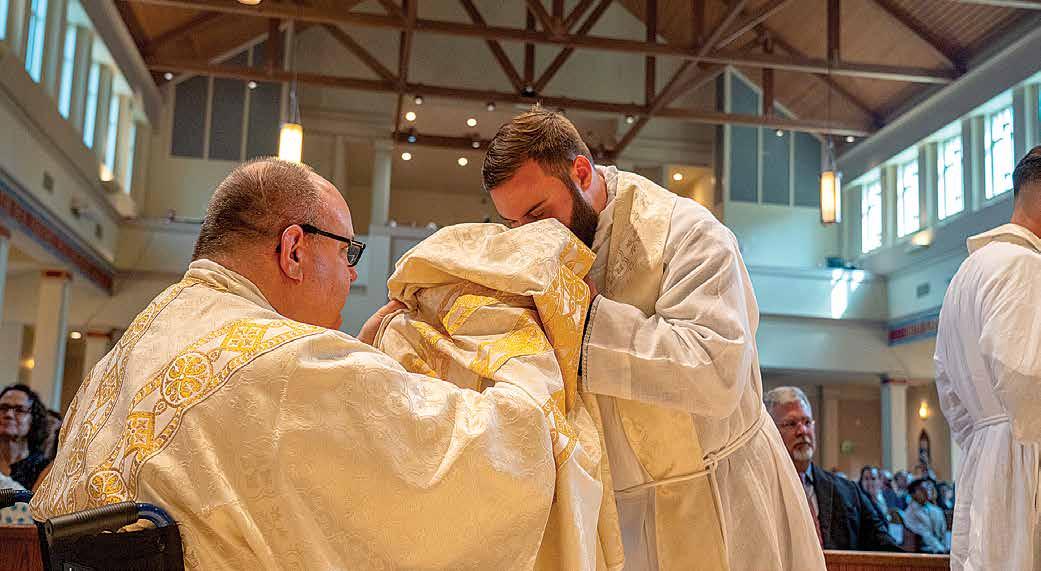

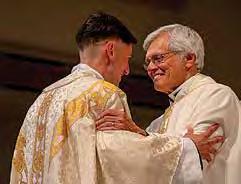
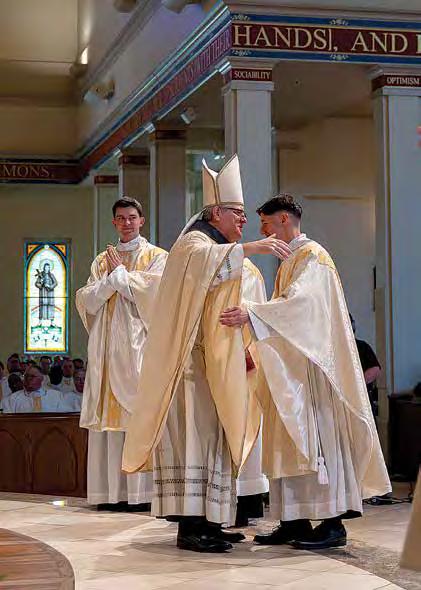
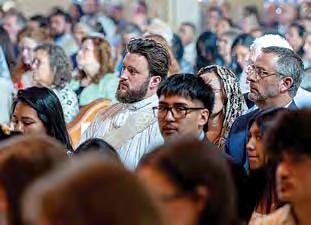
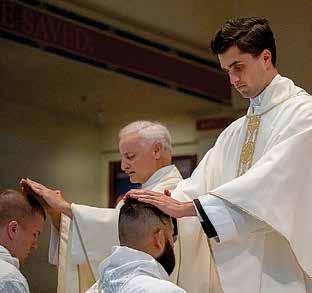
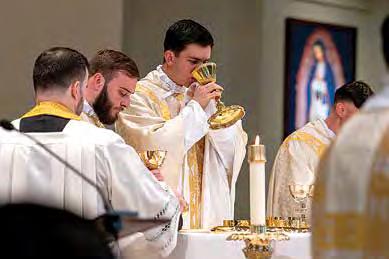

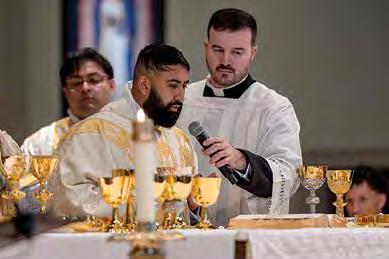
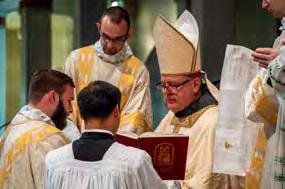
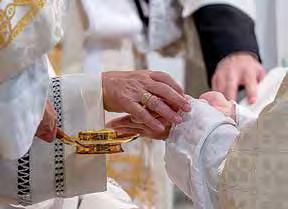
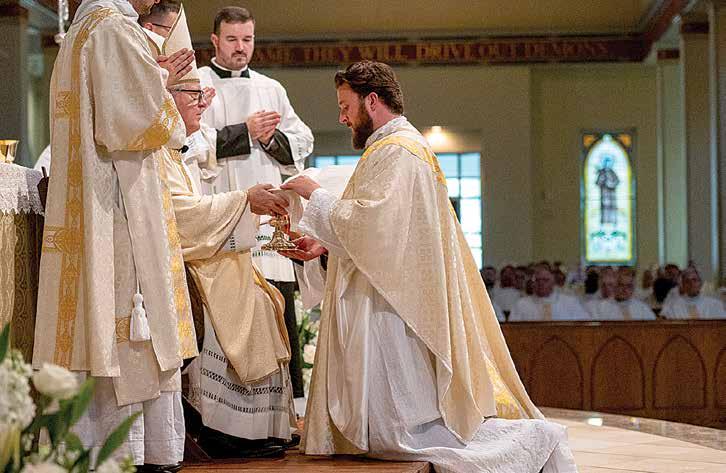
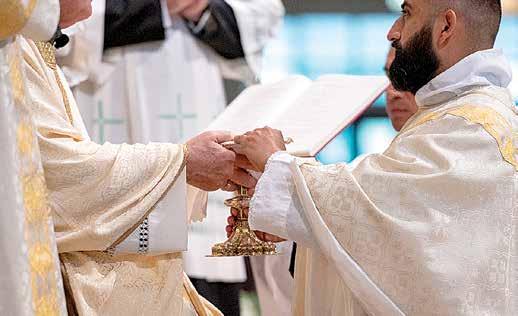
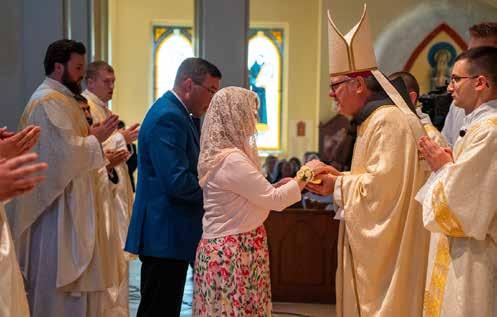



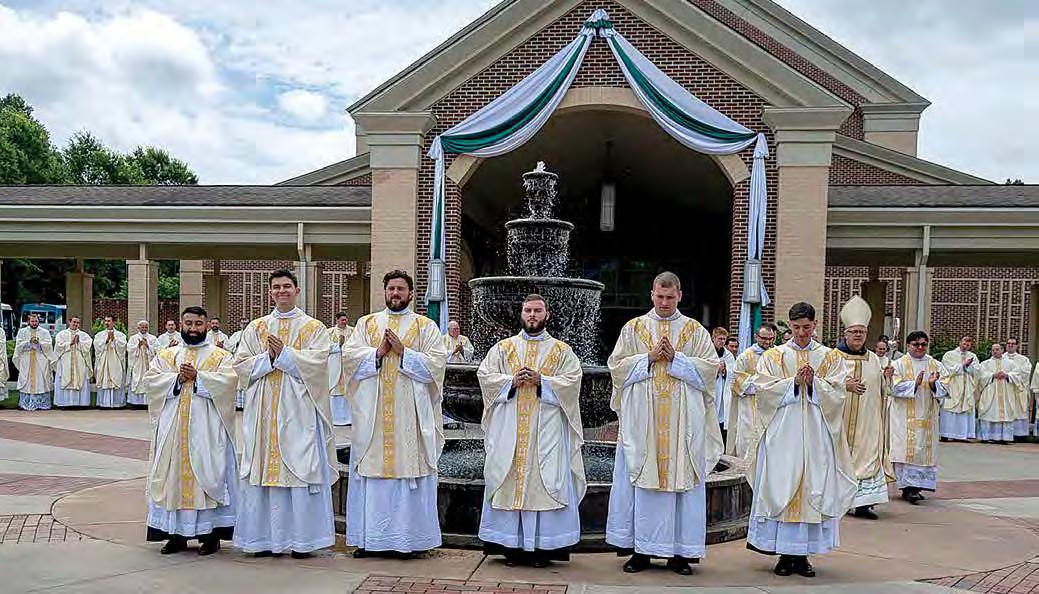

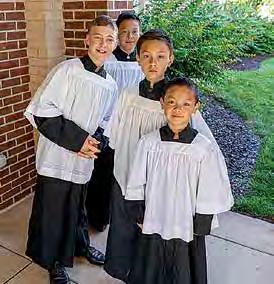
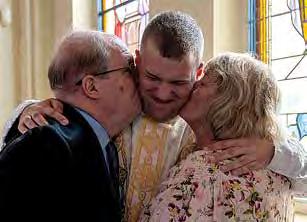
The parish of Immaculate Conception in Forest City, NC wishes to congratulate
on his ordination to the transitional diaconate at St. Mark's Catholic Church in Huntersville, NC by Bishop Michael Martin on June 7, 2025.
We are grateful for the generosity of his family and for the prayers of the parish for his continued support in his vocation to the priesthood.
Congratulations to Father Richard Hanson on the celebration of his 50th anniversary to the priesthood and to Father John Allen on his 35th anniversary.
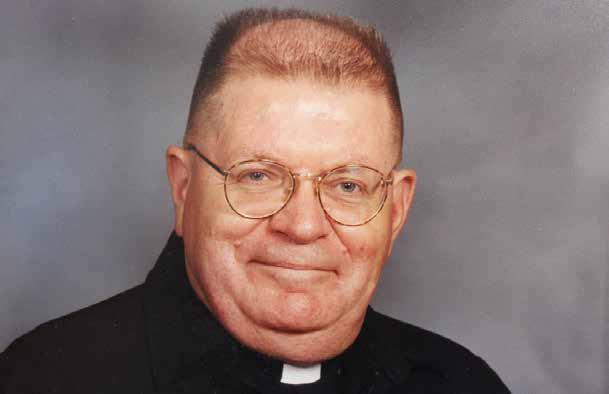
HANSON
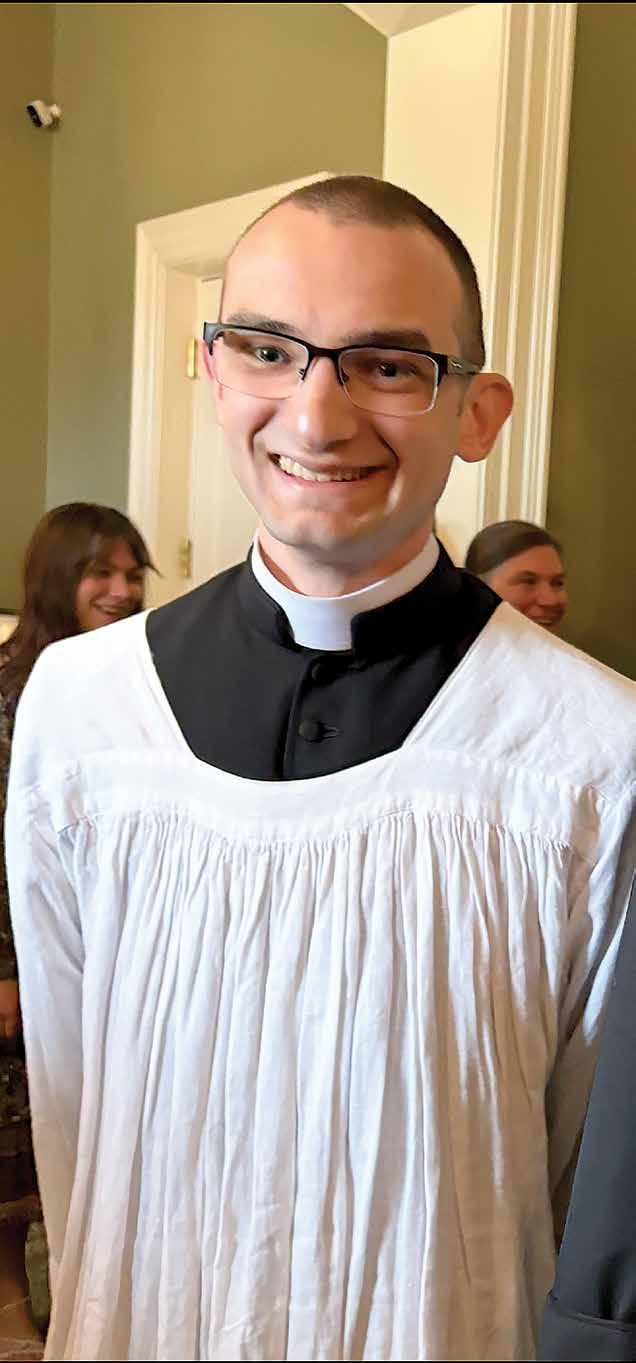
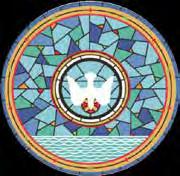
The parish family of St. Matthew Catholic Church gives thanks for their faithful service, spiritual leadership, and unwavering dedication to Christ and His Church.
May God continue to bless them abundantly.


CHRISTINA LEE KNAUSS clknauss@rcdoc.org
— La Diócesis de Charlotte recibió seis nuevos sacerdotes el sábado cuando fueron ordenados por el obispo Michael Martin en la iglesia St. Mark en Huntersville.
Los nuevos sacerdotes son: el padre Christopher Angermeyer, el padre Anthony del Cid Lucero, el padre Nicholas Kramer, el padre Kolbe Murrey, el padre Andrew Templeton y el padre Joseph Yellico.
Aproximadamente 1,300 personas llenaron la iglesia e incluso se desbordaron hacia el salón parroquial para presenciar cómo estos seis hombres comenzaban una nueva vida de servicio a Cristo, Su Iglesia y los fieles. La ordenación también fue vista por más de 200 personas a través de la transmisión en vivo, incluyendo a la familia del padre Lucero, que la siguió desde Guatemala.
Al inicio del rito de ordenación, los seis hombres se presentaron ante el obispo Martin y declararon su disposición a ser ordenados y asumir los deberes del sacerdocio.
El obispo Martin ofreció una homilía centrada en la importancia de tener una visión clara en el ministerio sacerdotal.
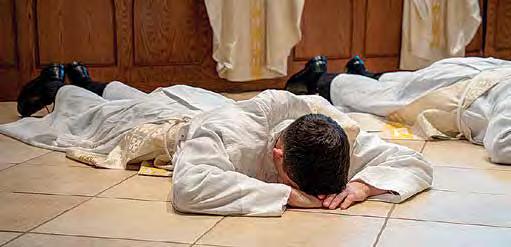
TROY C. HULL, AIDAN CRETER | CATHOLIC NEWS HERALD
(Arriba) Seis hombres fueron ordenados sacerdotes en la Diócesis de Charlotte el 14 de junio en la Iglesia St. Mark en Huntersville por el obispo Michael Martin. Durante la Letanía de Súplica, los candidatos al sacerdocio se postran ante el altar, un gesto que expresa su indignidad y total dependencia del Señor.
Relató el estrés que le provocó un reciente examen de la vista, incluyendo el desafío de elegir entre dos líneas de texto casi idénticas. “¿Cuál es más clara, la uno o la dos?”, repetía el optometrista. Buscar una visión clara de lo que Dios quiere será ahora la misión de su vida, les dijo a los candidatos.
“El resto de su vida será un camino hacia la claridad. ¿Podrán ver con claridad a través de la neblina y la confusión que a veces presenta el mundo?”, preguntó. “Su visión en este momento no solo es
importante para ustedes, sino para toda la Iglesia. Porque hacia donde ustedes guíen, gracias a lo que vean, es hacia donde otros seguirán.”
El obispo Martin dijo que las lecturas del día ofrecían lecciones importantes sobre la claridad en el ministerio. La primera lectura, del profeta Ezequiel, se centraba en la imagen de un pastor que busca a sus ovejas, incluidas las extraviadas, heridas y débiles. Exhortó a los nuevos sacerdotes a reconocer el dolor del mundo y la importancia de llegar a todos aquellos a
quienes están llamados a servir.
“Ezequiel habla de salir a buscar, de ver, a la oveja perdida, a la oveja rota, a la oveja herida”, dijo. “Ustedes también deben verlas, y estar dispuestos a salir a traerlas de vuelta, caminar con ellas, hacerles saber que son vistas, conocidas y amadas.”
La segunda lectura, de la carta a los Hebreos, se enfocaba en la belleza de la obediencia a través del sufrimiento, y el ejemplo perfecto de la obediencia de Cristo manifestado en la crucifixión.
“La obediencia de ustedes se manifestará en sus propias cruces, en las dificultades de la vida que tendrán que soportar”, dijo. “Habla de este llamado a la obediencia a través del sufrimiento como un llamado de Dios. Y lo es. Lo que ustedes emprenden hoy es un llamado de Dios.”
Continuó: “Nadie elegiría por cuenta propia aquello a lo que ustedes han dicho que sí. Tomen conciencia de que han sido llamados por Dios al sacrificio. Que eso se reafirme cada día, en medio de las dificultades y los desafíos. Reconozcan: ‘Este sacerdocio es a lo que Dios me ha llamado, y lo abrazo.’”
El obispo Martin exhortó a los hombres a mantener su visión enfocada en Cristo, de la misma manera que un agricultor debe fijar la vista en un punto del horizonte para mantener rectos los surcos al arar un campo.
“Hermanos, el punto en el horizonte está claro. ¿Uno o dos? Solo hay uno. Ese
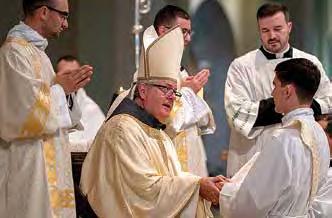

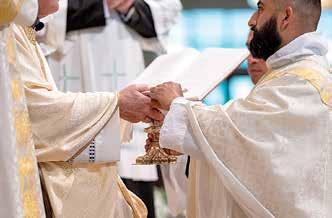

punto en el horizonte es Jesucristo, el sumo sacerdote, crucificado por ti y por mí”, dijo. “Mantengan la mirada en Él, y dejen que los guíe a ustedes y a todas las ovejas que servirán hacia un cielo nuevo y una tierra nueva, donde la cosecha es abundante, fértil y hermosa.”
Tras la homilía, los hombres se postraron en el suelo durante la Letanía de las Súplicas. Luego, el obispo impuso sus manos sobre ellos y oró. Una larga fila de sacerdotes presentes en la ceremonia también les impusieron las manos como símbolo de unidad sacerdotal.
Los seis fueron luego revestidos con la estola y la casulla por sacerdotes que jugaron papeles significativos en sus vidas. Fueron ungidos con el sagrado crisma y recibieron el pan y el vino como símbolo de su nueva capacidad para celebrar la Santa Misa. Finalmente, recibieron el beso
fraternal de paz del obispo Martin y del resto de los sacerdotes presentes. El coro de St. Mark interpretó una bella selección de cantos y himnos para acompañar la ceremonia, y el coro de la parroquia Our Lady of Consolation en Charlotte cantó “Total Praise” de Richard Smallwood durante la imposición de manos.
Después de la Misa, las familias de los nuevos sacerdotes se reunieron en el santuario para tomarse fotos con el obispo Martin. Mientras esperaban su turno, algunos padres reflexionaron sobre el significado del día.
“Es una gran alegría poder ofrecer a mi hijo a la Iglesia,” dijo Sarah Kramer, madre del padre Nicholas Kramer. “Espero que

su ministerio esté impregnado de belleza y verdad.”
Carlton Murrey, padre del padre Kolbe Murrey, expresó que fue un honor ver a su hijo ordenado.
“Esto se sintió como el fin de un viaje y el comienzo de otro,” dijo Carlton Murrey. “Mi hijo se adentra en una vida de servicio y sacrificio para la Iglesia.”
Tras su ordenación, el obispo Michael Martin anunció los lugares donde servirán los nuevos sacerdotes a partir del 8 de julio:
n Padre Christopher Angermeyer: Parroquia St. Mark en Huntersville
n Padre Anthony del Cid Lucero: Parroquia St. Michael the Archangel en Gastonia
n Padre Nicholas Kramer: Parroquia St. Matthew en Charlotte
n Padre Kolbe Murrey: Parroquia St. Thomas Aquinas en Charlotte
n Padre Andrew Templeton: Parroquia St. Luke en Mint Hill
n Padre Joseph Yellico: Capellán universitario en UNC-Charlotte

Home parish: St. Thomas Aquinas, Charlotte
Birthplace and raised in: Charlotte Age: 28
How do you feel like your parish contributed to your vocation and a rising number of vocations from St. Thomas Aquinas in Charlotte?
“It helped that the parish is diverse with people from all different backgrounds, so you get to experience the worldwide Catholic faith. One of the biggest things that shaped me was the prayers of the people. There are people who would pray the rosary every single week for vocations and that has led us to have a good amount of vocations coming from St. Thomas Aquinas Parish.”
Home parish: St. Joseph, Newton
Birthplace and raised in: Hickory
Age: 30
When did you first realize you had a call to the priesthood?
“My serious discernment began the year I graduated from high school. I knew that I was called to do great things in life. I always saw the love my parents had for Our Lord and the Blessed Mother and was something that I
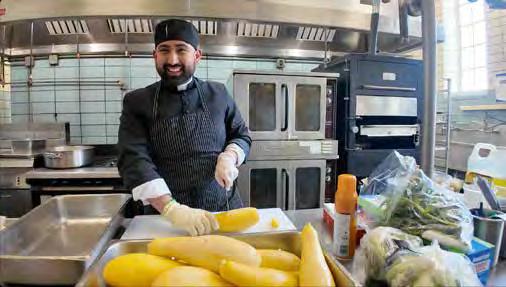
wanted to have from a young age. As a young adult outside of high school, I started to really ask God what He wanted from me. From there, I noticed my profound longing for the Lord in prayer, service, and in the sacraments. The Blessed Virgin Mary was also always a guide through my discernment.”
Home parish: St. Margaret Mary, Swannanoa
Birthplace: Omaha, Nebraska
Raised in: Old Fort
Age: 25
What is something someone would be
surprised to learn about you?
“For a while in high school, I worked as a mountain bike mechanic in downtown Asheville. It was a really fun job. I always loved the mechanical aspects of things, and mountain biking and riding. I got an opportunity later in high school to work as a mechanic, which in of itself was a lot of fun. And working in downtown Asheville was its own little adventure because the characters who frequented our shop were a lot of fun to hang out with.”
Home parish: St. John the Baptist, Tryon
Birthplace: Durham
Raised in: Mills River
Age: 25
What’s something people would be surprised to learn about you?
“Something people would be surprised to learn about me is that when I was in high school, I started keeping bees. I had a good friend who had kind of started doing that. I was like, ‘Oh, that’s interesting. I guess I’ll do that as well.’”
The bees are still at his family’s house, he said, and his mom took care of them while he was away at seminary. Murrey said he doesn’t plan to bring the bees to his parish assignment, but he wouldn’t mind helping with the bees at St. Matthew Parish.
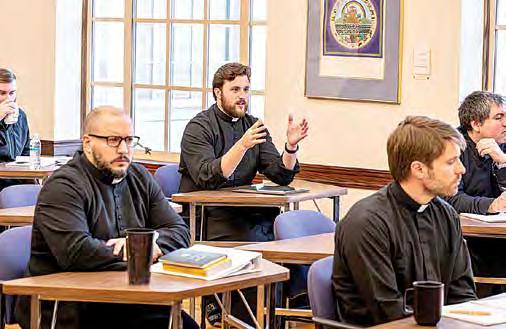
Home parish: St. Michael the Archangel, Gastonia
Birthplace and raised in: Gastonia
Age: 26
What’s something people would be surprised to learn about you?
“Something that people would be surprised to learn about me is that I’m afraid of heights and I don’t like roller coasters, but I want to learn how to fly a plane. It’s a bit of an ironic thing.”
Home parish: St. Mark, Huntersville
Birthplace: Long Island, New York, moved to North Carolina in 2006
Age: 30
What role does music play in your vocation?
“Music always has been a source of consolation and comfort for me. It’s also helped me look at how faith and reason are not two
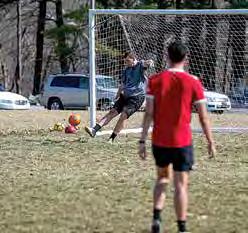
separate things, but they’re complementary to each other. You have the theory of music, which is more mathematical and abstract, and then you have the artistry of music. Both of those things work together. So, in the same way, in theological training, you have the abstract, the philosophical principles that you follow within that. But at the same time, there’s just so much beauty that’s just around that and a part of it. So music has really been a source of reflection of a bunch of different aspects of reality.”
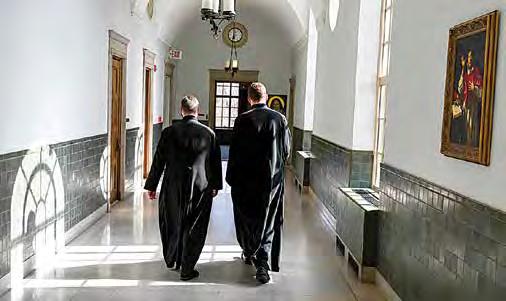

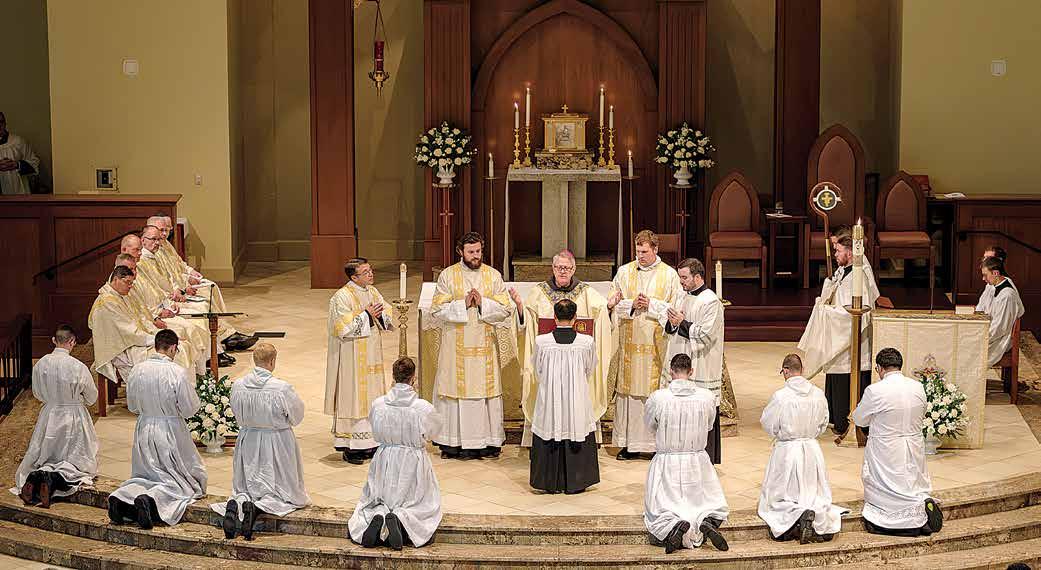
STORY BY LISA M. GERACI. PHOTOS BY TROY C. HULL, WILL CRETER AND AIDAN CRETER catholicnews@rcdoc.org
— Alleluias reverberated from the tiled floors of St. Mark up to the heavens as 900 friends, family and clergy celebrated the ordination of seven seminarians as transitional deacons on June 7, taking them one step closer to the priesthood.
Bishop Michael Martin presided over the Mass. His message to the newly ordained men: Go show the world their love for Jesus – particularly for those on the margins – as they become the public face of the Church.
“Don’t lose the moment,” he urged them. “You are about to embark upon His public ministry carried out in seven very different men. But a public ministry no less, and an important one where there are great expectations, but with greater grace.”
Much like the 12 apostles spoken about in Acts 6, who chose seven among their group to go out and minister to the world, these seven seminarians were chosen to publicly share their love of Christ.
Robert Warren Bauman and Peter James Townsend, both from St. Ann Parish in Charlotte; Michael Patrick Camilleri, from St. Elizabeth Parish in Boone; John Warren Cuppett, from St. Leo the Great Parish in Winston-Salem; Maximilian Karl Frei, from St. Dorothy Parish in Lincolnton; Bryan Ilagor, from Our Lady of the Americas Parish in Biscoe; and Michael James Lugo, from Immaculate Conception Parish in Forest City, received their first foundational sacramental ordination within holy orders - the diaconate.
All seven attend Mount St. Mary’s Seminary and School of Theology in Cincinnati, Ohio. Six were among the first classes at St. Joseph College Seminary in Mount Holly.

‘LET YOUR HEART BE AN OPEN BOOK’
“God calls you to publicly love Him,” Bishop Martin told the men in his homily. “In return, do not let your hearts be taken elsewhere. Do not allow this world to suggest to you that He is not enough for you. He is more than enough
and will grace and bless and shower your heart with His Sacred Heart.”
He continued, “Trust in Him and His love alone and let the world see that.”
Then, drawing from the reading from Acts, the bishop reminded the men to always serve the people, especially those on the margins.
“The real mission of holy orders is to hold up to the world a vision of who the Church is, and to continuously remind ourselves that all of us are responsible for each other. That the nature of the Church is communal, and we are only as communal as when we care for those who are most uncared-for, whether that be the unborn or the alien,” he said.
Bishop Martin continued with his third and “most difficult” aspect of holy orders. “Christ’s public mission led Him to the cross,” he told the men, advising that they must be willing to die to themselves.
Following the homily, the deacons knelt before the bishop and affirmed their intentions to serve as deacons, then they lay prostrate before the altar as the congregation prayed the Litany of Supplication to invoke the saints to ask the blessing of God upon them.
Then in silence, Bishop Martin laid his hands on the head of each man and prayed the prayer of ordination,
consecrating the seven as deacons. Each newly ordained deacon was then vested by a clergy member who inspired them during their journey. Clergy members reverently secured the stole over their shoulders, symbolizing their new responsibility and authority to serve, and then clothed the new deacons with the dalmatic they will use during liturgies. The seven deacons can now proclaim the Gospel at Mass, preach homilies when invited by the presiding priest, prepare the altar for the Eucharist, distribute Holy Communion, bring Viaticum to the dying, and officiate at baptisms, weddings and funerals.
‘WE ARE IN THIS TOGETHER’
Earlier in his homily, the bishop told the newly ordained. “My brothers, look at these your brother deacons and your brother priests and your brother bishop here,” he said. “We pledge to you that you will not walk that difficult challenge by yourself. Don’t try. It’s a dead end. You need us, and we need you. We are in this together as we publicly are willing to die to ourselves for a greater goal, a greater good for Christ’s will.”
The ordination Mass was an emotional culmination of years of hard work, study and spiritual formation.
Afterward, Deacon Bauman said, “When I was lying on the floor, I felt the general sense of all the angels and saints that have been praying for us leading up to this moment... It was a very powerful experience.”
Kathy Schmugge was among the large crowd, watching the ordination of her nephew, Deacon Frei.


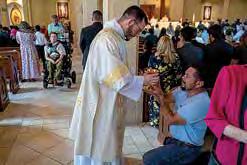
“I thought the bishop’s homily was wonderful,” she said. “He gave them their marching orders. You can just sense the Holy Spirit was here.”
The newly ordained are called “transitional” deacons instead of “permanent” deacons, a distinction that reflects their intent to serve a year in pastoral, liturgical and educational preparation before being ordained into the priesthood. Diaconate is the first of three ranks of holy orders; the other two are priest and bishop.
As the men embark on this phase of the journey, Bishop Martin reassured them: “May you know how happy the Church of Charlotte is for all of you. How proud we are of all of you, and how we commit our prayerful support for you as you publicly give witness to what you’ve been called to carry out.”
More online
At www.catholicnewsherald.com : Get to know our new priests and deacons
On the Diocese of Charlotte’s YouTube channel : View the ordination Masses for both priests and deacons and hear from our newest priests in videos

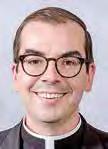
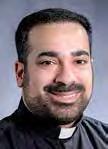
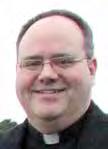
Father
Father
Father


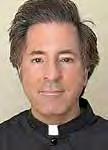
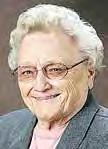
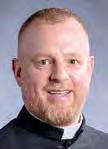

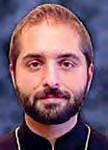
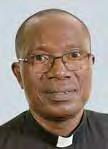


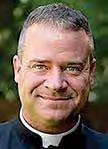

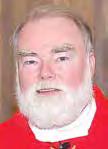
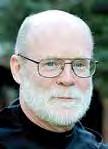
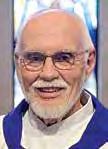
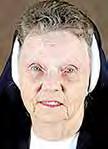
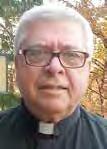

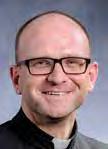



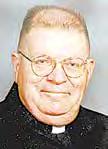
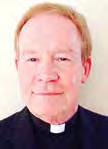

Father Gabriel Carvajal-Salazar
Father John Eckert
Father David Miller
Father Marvin A. Navas
Father Lucas Rossi
30 YEARS
Father James Collins
Father Eric L. Houseknecht
Father Mark S. Lawlor
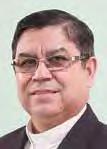
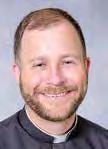
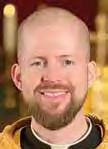
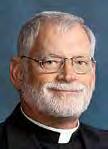
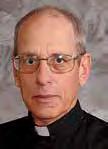
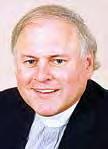
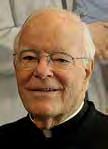
30 YEARS
Deacon Wayne Adams
Deacon Michael Langsdorf
Deacon Carlos Medina Sr.
Deacon Rafael Torres
Deacon John Weisenhorn

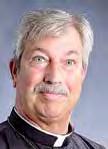
70 YEARS
Father James Solari

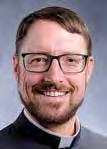
35 YEARS
Father John Allen
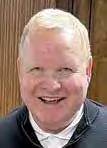
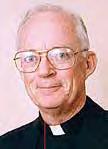
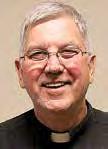
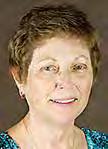

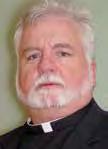


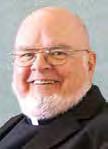
55 YEARS
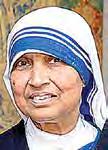
25 YEARS
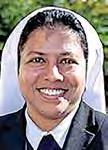

‘Confíen
STORY BY LISA M. GERACI. PHOTOS BY TROY C. HULL, WILL CRETER AND AIDAN CRETER catholicnews@rcdoc.org
— Los aleluyas resonaron desde los pisos de baldosas de St. Mark hasta el cielo mientras 900 amigos, familiares y miembros del clero celebraban la ordenación de siete seminaristas como diáconos transitorios el 7 de junio, llevándolos un paso más cerca del sacerdocio.
El obispo Michael Martin, OFM Conv., presidió la Misa. Su mensaje a los hombres recién ordenados: Salgan y muestren al mundo su amor por Jesús – particularmente por aquellos en las periferias – al convertirse en el rostro público de la Iglesia.
“No pierdan el momento,” les instó. “Están a punto de embarcarse en Su ministerio público, llevado a cabo en siete hombres muy diferentes. Pero un ministerio público al fin, y uno importante, donde hay grandes expectativas, pero con mayor gracia.”
Al igual que los 12 apóstoles mencionados en Hechos 6, que eligieron a siete de entre ellos para salir y ministrar al mundo, estos siete seminaristas fueron elegidos para compartir públicamente su amor por Cristo.
Recibieron su primera ordenación sacramental dentro de las órdenes sagradas – el diaconado: Robert Warren Bauman y Peter James Townsend, de la parroquia St. Ann en Charlotte; Michael Patrick Camilleri, de la parroquia St. Elizabeth en Boone; John Warren Cuppett, de la parroquia St. Leo the Great en Winston-Salem; Maximilian Karl Frei, de la parroquia St. Dorothy en Lincolnton; Bryan Ilagor, de la parroquia Our Lady of the Americas en Biscoe; y Michael James Lugo, de la parroquia Immaculate Conception en Forest City.
Todos asisten al Seminario y Escuela de Teología Mount St. Mary’s en Cincinnati, Ohio. Seis de ellos formaron parte de las primeras clases del Seminario St. Joseph

(Arriba) Siete hombres dieron un paso más hacia el sacerdocio el 7 de junio, cuando fueron ordenados diáconos para la Diócesis de Charlotte por el obispo Michael Martin. (Superior) Los siete fueron revestidos con la estola, signo del oficio de servicio del diácono, y la dalmática.
College en Mount Holly.
‘QUE SU CORAZÓN SEA UN LIBRO ABIERTO’
“Dios los llama a amarlo públicamente,” dijo el obispo Martin en su homilía. “A cambio, no dejen que sus
corazones se desvíen. No permitan que el mundo les sugiera que Él no es suficiente para ustedes. Él es más que suficiente y llenará y bendecirá su corazón con Su Sagrado Corazón.”
Continuó: “Confíen en Él y en Su amor solamente, y dejen que el mundo lo vea.”
Luego, citando la lectura de Hechos, el obispo recordó a los hombres servir siempre al pueblo, especialmente a los marginados.
“El verdadero propósito de las órdenes sagradas es mostrar al mundo una visión de lo que es la Iglesia, y recordarnos continuamente que todos somos responsables los unos de los otros. Que la naturaleza de la Iglesia es comunitaria, y solo somos verdaderamente comunidad cuando cuidamos de quienes menos cuidados reciben, ya sean los no nacidos o los inmigrantes,” afirmó.
El obispo Martin continuó con el tercer y “más difícil” aspecto del orden sagrado: “La misión pública de Cristo lo llevó a la cruz,” les dijo, aconsejándoles que deben estar dispuestos a morir a sí mismos.
Tras la homilía, los diáconos se arrodillaron ante el obispo y afirmaron su intención de servir como diáconos, luego se postraron ante el altar mientras la congregación rezaba la Letanía de Súplicas para invocar a los santos y pedir la bendición de Dios sobre ellos.
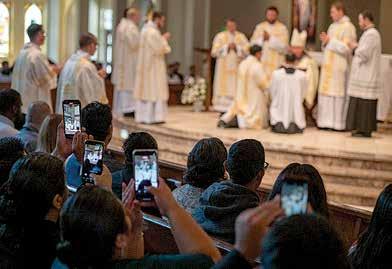
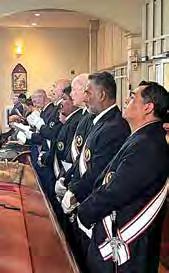

Familiares, Caballeros de Colón y amigos se reunieron para presenciar la ordenación de los siete hombres como diáconos transitorios. A los recién ordenados se les llama “diáconos transitorios” en lugar de “diáconos permanentes”, una distinción que refleja su intención de servir durante un año en preparación pastoral, litúrgica y educativa antes de ser ordenados sacerdotes.
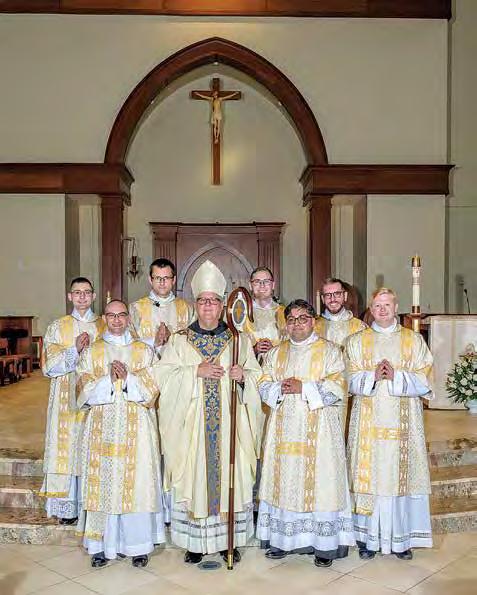
Los nuevos diáconos ordenados, en la foto junto al obispo Michael Martin, ahora pueden proclamar el Evangelio en la Misa, predicar cuando el sacerdote se los solicite, preparar el altar para el sacrificio de la Eucaristía, distribuir la Comunión a los fieles y mucho más.
VIENE DE LA PÁGINA 18B
Luego, en silencio, el obispo Martin impuso las manos sobre la cabeza de cada uno y pronunció la oración de ordenación, consagrándolos como diáconos.
Cada nuevo diácono fue revestido por un miembro del clero que los inspiró durante su camino. Con reverencia, se les colocó la estola sobre los hombros, símbolo de su nueva responsabilidad y autoridad para servir, y se les vistió con la dalmática que usarán en las liturgias.
Ahora los siete diáconos pueden proclamar el Evangelio en la Misa, predicar homilías cuando el sacerdote celebrante lo permita, preparar el altar para la Eucaristía, distribuir la Comunión, llevar el Viático a los moribundos, y oficiar bautismos, bodas y funerales.
‘ESTAMOS EN ESTO JUNTOS’
La Misa de ordenación fue una culminación emocional de años de arduo trabajo, estudio y formación espiritual. Después, el diácono Bauman dijo: “Cuando estaba acostado en el suelo, sentí la presencia general de todos los

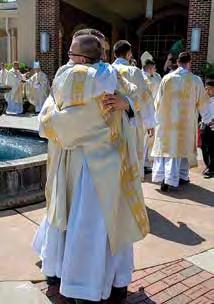
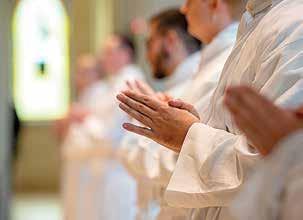
Los sacerdotes que concelebran la Misa ofrecen un saludo fraterno a los nuevos diáconos ordenados. Luego se reunieron afuera para felicitar a los jóvenes que están dando su siguiente paso, lleno de oración, hacia el sacerdocio.
ángeles y santos que han estado orando por nosotros hasta este momento... Fue una experiencia muy poderosa.”
Kathy Schmugge, quien estaba entre la gran multitud, observó la ordenación de su sobrino, el diácono Frei.
“Pensé que la homilía del obispo fue maravillosa,” dijo. “Les dio su misión. Se podía sentir que el Espíritu Santo estaba aquí.”
Los recién ordenados son llamados diáconos “transitorios” en lugar de “permanentes”, una distinción que refleja su intención de servir un año en preparación pastoral, litúrgica
y educativa antes de ser ordenados sacerdotes. El diaconado es el primero de los tres grados del orden sagrado; los otros dos son el presbiterado y el episcopado.
A medida que los hombres inician esta fase de su camino, el obispo Martin los tranquilizó:
“Que sepan lo feliz que está la Iglesia de Charlotte por todos ustedes. Qué orgullosos estamos de ustedes, y cómo nos comprometemos a apoyarlos con nuestras oraciones mientras dan testimonio público de aquello a lo que han sido llamados a llevar a cabo.”

Home parish: St. Ann, Charlotte
Born and raised in: Wilmington Age: 22
Interests/hobbies:
Hiking, disc golf, running and reading at a local coffee shop
Summer assignments in the diocese: Sacred Heart in Salisbury, Our Lady of Mercy in Winston-Salem, and St. Lucien and St. Bernadette, Spruce Pine/Linville.
CNH: Who vested you and why?
Bauman: “(Then) Deacon Kolbe Murrey, because he has been a good friend throughout my time in seminary.”
CNH: When did you first realize you had a call to the priesthood?
Bauman: “During an eight-day Ignatian silent retreat.”

Home parish: St. Elizabeth, Boone
Born in: Florida
Raised in: North Carolina Age: 25
Interests/hobbies:
Learning languages and calligraphy
Summer assignments in the diocese: St. Jude, Sapphire; Our Lady of the Mountains, Highlands; St. Gabriel, Charlotte
CNH: Who vested you and why?
Camilleri: “Deacon Ron Caplette: because I know him from when I was growing up.”
CNH: When did you first realize you had a call to the priesthood?
Camilleri: “I first heard the call to the priesthood when I was very young – 3 or 4 years old. My family loves to talk about how I used to ‘play Mass,’ which is actually one of my earliest memories. I lost sight of the vocation in late elementary school until right before high school. I wanted to go into computer science.
“While preparing to enter high school, by the grace of God, I decided to pursue what He put on my heart from that early age, and I entered the college seminary.”

Home parish: St. Leo the Great, Winston-Salem
Birthplace: Cary
Raised in: Four Oaks Age: 27
Interest/hobbies: Sports and the outdoors, including hiking and camping
Summer assignments: Missionary work with the Community of Jesus Crucified in Louisiana
CNH: Who vested you and why?
Cuppett: “(Then) Deacon Christopher Angermeyer, because he is a good friend of mine and has been a good mentor.”
CNH: When did you first realize you had a call to the priesthood?
Cuppett: “I played baseball at Belmont Abbey College and clarified the call while at college. During high school I was interested in joining the seminary after I graduated. However, I did very little in pursuing it and soon it faded into the background. From then on and up until college, it was a fun idea – but nothing more. After high school I attended Belmont Abbey College on a baseball scholarship, where I played as a second baseman for four years.

“During my time at the Abbey, I met Matthew Harrison, a Charlotte seminarian. I informed him of my past dream of becoming a priest and he invited me to visit St. Joseph College Seminary. I did, and then all my previous desires and hopes for the priesthood came crashing back. I quickly sought help in my discernment with the diocesan Vocations Office. My senior year at the Abbey, I started spiritual direction with Father Brian Becker, the diocese’s promoter of vocations, and he helped me tremendously by answering all my questions, fears and thoughts regarding my vocation. Together we discovered that my call to the priesthood was very real, and he referred me to Father Christopher Gober, diocesan vocations director, to begin the process of applying.”

Home parish: St. Dorothy, Lincolnton
Birthplace: Villingen, Germany
Raised in: Braeunlingen, Germany
Age: 30
Interests/ hobbies: Chess, fitness and spiritual reading
Summer assignments in the diocese: St. Patrick Cathedral, Charlotte, St. John the Evangelist in Waynesville, and St. John the Baptist in Tryon
CNH: Who vested you and why?
Frei: “(Then) Deacon Anthony del Cid Lucero, because he is a very joyful friend who I can always count on.”
CNH: When did you first realize you had a call to the priesthood?
Frei: “The first time I can remember when I had a calling was when I was waiting in the confession line as a kid. Many years later in my mid-20s, after living a worldly and superficial life, it was Our Lord once more who called me to serve Him as a priest.”

Home parish: Our Lady of the Americas, Biscoe
Birthplace: Pinehurst
Raised in: Zitácuaro, Michoacán, Mexico
Age: 29
Interest/ hobbies: Expanding my knowledge of different cultures, such as Japanese, Korean, Filipino and many others; watching TV and movies; and following La Liga, the Premier League and other football leagues
Summer assignments in the diocese: Immaculate Conception in Hendersonville and St. Francis of Assisi in Lenoir
CNH: Who vested you and why?
Ilagor: “Deacon Charles D. Hindbaugh, because of our friendship over the past years and his role model as a humble deacon serving the local community.”
CNH: When did you first realize you had a call
to the priesthood?
Ilagor: “Many seminarians can recall dressing up as priests, and that was their realization. However, I did not have a big realization moment. Instead, it was a step I decided to take in my life (at least, that’s how I saw it at first). I was not big into participating in church activities, but I always found myself helping in the church instead of going out with my friends to watch a movie. I always found myself at peace while serving the church.
“Hence, if I had to decide a moment in my life when I first realized, it was when I was helping my pastor, Father Ricardo Sanchez, to close up the church one night. After locking all the doors, turning off all the lights, and making sure no one was left behind, I met him at the sanctuary steps to say goodbye. We were the only ones left inside the church, and he asked me a question I have not forgotten: ‘Bryan, do you want to be a priest?’ Before I could respond, he said, ‘Before you answer, look at the tabernacle – you are not going to answer to me but to God.’ ‘Great,’ I thought to myself. I couldn’t lie or give an incomplete answer. I thought, ‘If this is God’s will, I will give it a shot.’ Shortly after, I told my pastor, ‘Yes.’ This first ‘step’ was accepting that God called me to enter the seminary. In the past, many parishioners had said, ‘You should be a priest,’ but I dismissed them with ‘I don’t think it is my calling.’ Seven years later, I am here, realizing I will be ordained a deacon.”

Home parish:
Immaculate Conception, Forest City
Birthplace: Kansas
Raised in: Rutherfordton Age: 24
Interests/ hobbies:
Running, skiing, euchre (a card game), reading and piano
Summer assignments in the diocese: Holy Cross in Kernersville, St. Lucien and St. Bernadette in Spruce Pine/Linville, St. John the Baptist in Tryon
CNH: Who vested you and why?
Lugo: “(Then) Deacon Joseph Yellico. We entered St. Joseph’s the same year and he has been a great brother to me over the course of seminary.”
CNH: When did you first realize you had a call to the priesthood?
Lugo: “They were several points growing up that I remember seriously considering it as an option. But I really started taking it seriously during Quo Vadis Days in the summer of 2018. Throughout the course of that week, spending time in prayer and learning about the priesthood, it seemed to me that the priesthood was the summation of everything I wanted out of life, particularly the way in which the life of a priest is

Home parish: St. Ann, Charlotte
Birthplace: Racine, Wisconsin
Raised in: Charlotte Age: 24
Interests/hobbies: “I enjoy playing guitar in my free time and reading a good novel (right now I’m reading Dostoevsky’s “Brothers Karamozov”). I’ve also found that I enjoy learning languages. Right now, I’m working on Spanish and would like one day to work on French (maybe even Italian and German).”
Summer assignments in the diocese: “During my college days, I participated in the St. Joseph Workers’ program where my brother seminarians and I traveled around the diocese performing different odd jobs like lawn mowing, mulch spreading and painting.
“After entering theology, I spent my summers at St. John the Baptist Parish in Tryon, St. Mark Parish in Huntersville and Our Lady of Grace Parish in Greensboro.”
CNH: Who vested you and why?
Townsend: “(Then) Deacon Nicholas Kramer. He and I have known each other since high school and entered the seminary the same year. Over the years, I’ve been grateful to God for his friendship and the brotherhood that has formed between us.”
CNH: When did you first realize you had a call to the priesthood?
Townsend: “I always knew I wanted to be a priest, so I entered St. Joseph College Seminary straight out of high school.
“I first felt the call to the priesthood when
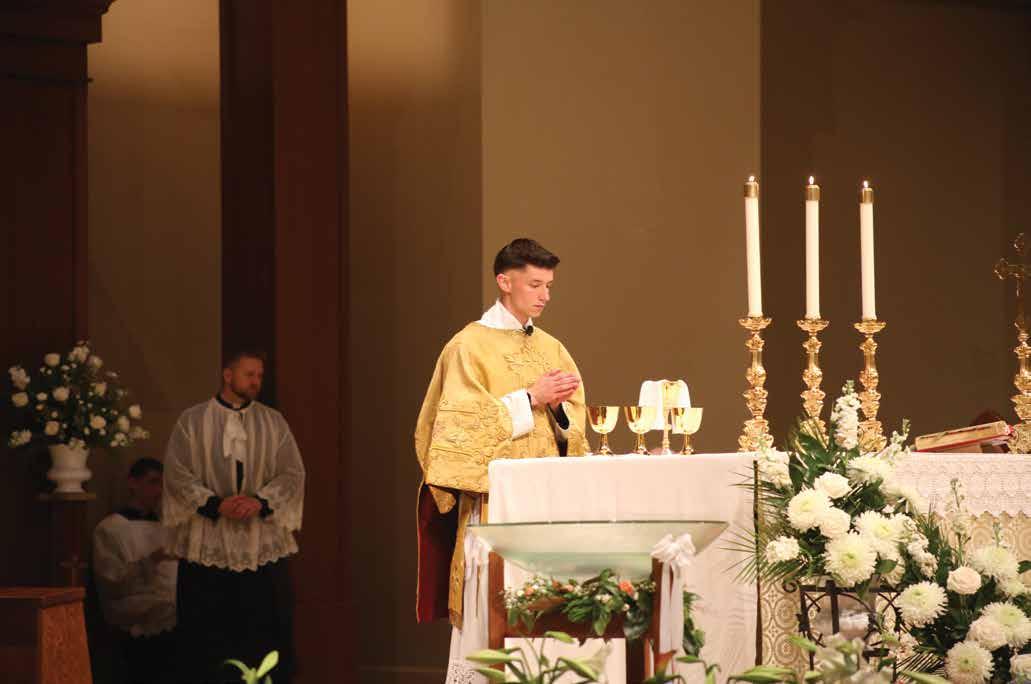








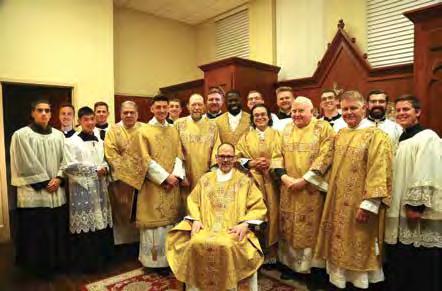



LISA M. GERACI lmgeraci@rcdoc.org
REIDSVILLE — Father Frank Seabo is celebrating his 25th anniversary as a priest in the Diocese of Charlotte. He recently took time for an interview with the Catholic News Herald to reflect on his vocation, what the Mass means to him, and what he likes about serving in a small parish:
Can you tell us a little about your upbringing?
Camden, N.J., is my home diocese. I have two brothers, Chip and Bob. My brother Bob is why I’m able to be here; he helps with my 91-year-old mother and cared for my dad. When I’m not at Holy Infant, I’m with my mother or brothers.
At my baptism the priest was going to baptize me “Francis,” but my father stopped him in the middle and said, “His name is Frank.” My father was a Methodist; he never converted, but it was his example that later inspired me to become a priest. He died around this time last year and I miss him terribly. Ma brought me up Catholic. My confirmation saint is Paul, and at the time I did not understand why I chose Paul because I was only 10. Now, though, it’s clear: Paul, like me, was a late vocation. I was ordained by Bishop William Curlin when I was 41. When and how did you get your calling to become a priest?
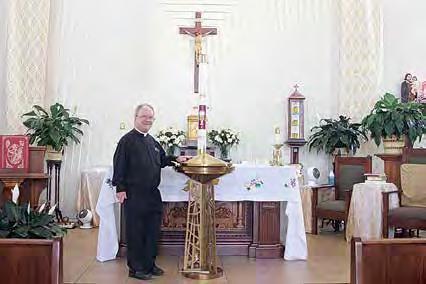
I started my discernment late. I was 37 and an active member of the Diocese of Raleigh. I was a Grand Knight in the Knights of Columbus, and I had a good job training police officers in criminal investigations using my company’s technology.
Just like Jesus knocked Paul to the ground and Paul said, “Who are you, Lord?” I had a personal encounter. I heard it in 1991. I was going to church at Sacred Heart in Raleigh, and Monsignor Gerald Lewis gave a homily about service. He said the word “service,” and it was like I was the only person in the whole church. I ended up spending over four years denying the call, telling myself I can’t be a priest. I didn’t go to Catholic school. I was never an altar server. But the feeling wouldn’t go away.
It was the strangest thing during discernment – a letter arrived from a dear friend with cerebral palsy, who struggles to speak or write. She wrote she dreamed I would be a wonderful priest. The second event was when my bowling buddy, 10 years my senior, always called me Frankie – a name nobody else used. Out of nowhere, he said, “Frankie, you know what? You would make a great priest.”
Then, a fourth-degree knight I knew, who was very honored and respected, was turning 70. I went up to him and said, “Happy birthday.” And he said, “Well, thank you.” And then he said, “But you know there’s something I always regretted.” He was very successful: wife, kids, grandkids, and he worked as a deputy. Very
clearly, he said to me, “I always wanted to be a priest, but never could.” How did you end up in the Diocese of Charlotte? Father Frank O’Rourke and Bishop William Curlin got me started in the Charlotte diocese. I spent a year with the Raleigh seminarians, but not making an application. I talked to Father O’Rourke, who was a good friend of mine through the Knights, and said, “I don’t think Camden is right for me, and I don’t think Raleigh is right for me.” Father O’Rourke said, “Come westward, man.” What do you like best about being a priest? Mass is number one for me. And Mass comes in different forms, which keeps things interesting. Yet every Mass I say, I say it like it’s my first Mass, I say it like it’s my only Mass, I say it like it’s my last Mass. I love it. And, then from the Mass comes my ministry, because I have the readings, I have the prayers of the day, and then I have the people. The Mass fuels me – I can’t get enough. My basic strengths outside the parish are visiting the sick, and inside the parish, teaching. I love to teach. I lead OCIA classes here and small retreats. I love sitting down with people, getting an idea of who they are and what they are about.
What are your favorite moments as a diocesan priest?
My most memorable things happen every single day. It has been 25 years, and I am not sure if there has been even a single day that was not unique. I look at people and I see Jesus. Seeing somebody smiling is enough to motivate me to keep going. How does Holy Infant compare over your years of ministry? I was first assigned to St. Lawrence Basilica and then St. Joseph in Bryson City, St. Margaret Mary Church in Swannanoa, St. Joan of Arc in Candler, then here. I’ve been in small parishes since the beginning. We are small, but we are very alive. Of course, you don’t always want a cookie-cutter parish, and this one is definitely unique. It was designed to look like a flower opening to the heavens. I am the longest-sitting pastor of Holy Infant since it started. This is actually the longest place I lived in my adult life. I’ve been here very happily for 12 years.
I’m not saying the world is perfect because this is not heaven, but I’m blessed here with a beautiful church family.
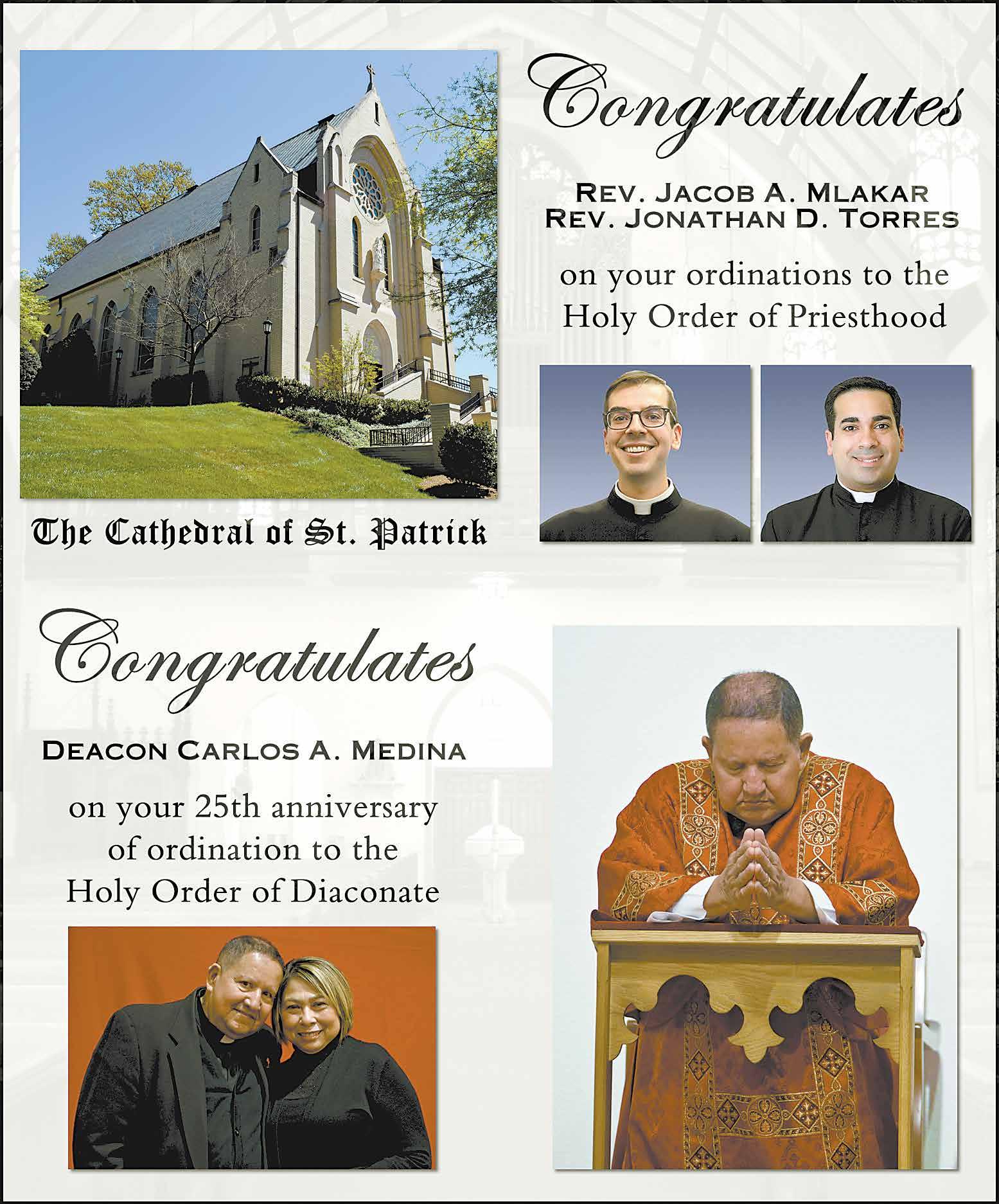

CHRISTINA LEE KNAUSS clknauss@rcdoc.org
HIGH POINT — Father Joseph Dinh likes to reflect on the fact that some people have nicknamed him “the smiling priest.”
The pastor of Christ the King Parish is known for usually having a smile on his face when he greets parishioners or goes about his daily duties.
As he celebrated the 25th anniversary of his ordination to the priesthood on June 3, he said that smile comes from a wellspring of deep joy he finds in serving God.
“For me, priesthood is more than happiness or fun – it’s the deep and profound joy I find in the presence of God,” he said. “I believe that joy is the sign of God’s presence in our life, and the Lord has filled me with peace and joy which brings me closer to Him and closer to others.”
His constant positive attitude developed after he went through some very challenging and sad experiences on his journey to the priesthood.
At age 11, he entered a minor seminary in his native Vietnam to pursue the vocation he’d felt since he was a young child. Entering seminary at such a young age is traditional in that nation, he said.
It was also not unusual for people in his family to discern religious vocations. His late father studied in a seminary for a few years.

PHOTO PROVIDED
1975 he could have left, but he did not want to leave my family,” Father Dinh said. “He knew if he stayed, he could be tortured to death, but he chose to stay, and he was put into prison after Saigon fell.”
One year later, his father died in prison at age 50.
That would devastate some people, but Father Dinh said his family’s experience has helped him find greater joy in serving God.
“For me to celebrate my silver jubilee is not an accomplishment – it’s an act of gratitude to God for all the blessings I have received from the Lord,” he said.
Father Dinh had been in the minor seminary for several years when the Communist regime in Vietnam shut it down, along with many other houses of worship and religious institutions. He was forced to leave and head home to his remaining family but had a major problem: he had no official identification or other documents.
“Without documents at that time, the Communist police could arrest me and put me in prison anytime, so there was only one solution for me to survive and continue to pursue my vocation,” he said. “That was to escape from Vietnam by boat.”
priesthood in the Diocese of Charlotte because friends had recommended the area. Then Bishop William Curlin accepted his application, and he completed his formation at St. Mary’s Seminary in Baltimore.
Because his father had died at the hands of the Vietnamese government, Father Dinh was able to bring the rest of his family to the United States in 1993. Most of them settled in Charlotte, while some relatives now live in Raleigh, South Carolina and Iowa.
His work as a diocesan priest has taken him to all three regions of the diocese – the Triad, Charlotte and the mountains.
After ordination, he first served as parochial vicar at Sacred Heart Parish in Salisbury and then St. Lawrence Basilica in Asheville. He later moved to Charlotte to serve at Holy Trinity Middle School and parochial vicar at St. Ann Parish before receiving his first assignment as pastor at St. Francis of Assisi Parish in Jefferson.
He also served as pastor at St. Joseph of the Hills Parish in Eden before becoming pastor in High Point in 2017. There he remains busy serving a diverse parish –offering Masses in Vietnamese, Spanish and English every Sunday.
Father Dinh was one of three of nine children who pursued a vocation. One of his sisters was a nun and a brother had entered a monastery before both were forced to abandon their vocations when the Communist government in Vietnam closed convents and monasteries.
The Vietnam War caused a great loss for Father Dinh and his family. He tells the story quietly.
“My father was a high officer who had worked for the Americans during the Vietnam War, and after the Fall of Saigon in
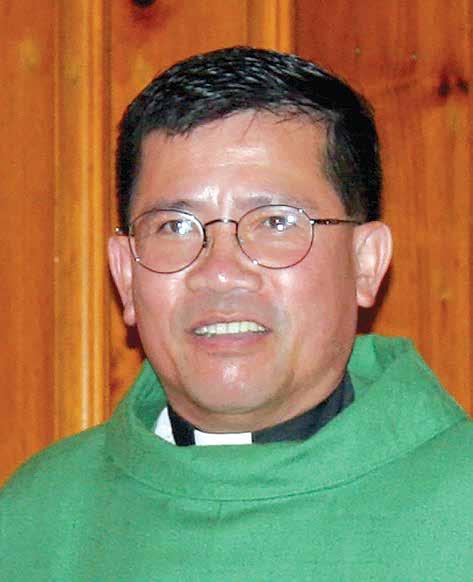
Christ the King Parish in High Point welcomed Bishop Peter Jugis, who offered Mass with Father Joseph Dinh, pastor, (pictured at left) as concelebrant in the newly renovated church to mark its 80th anniversary in 2021. Father Dinh is known as “the smiling priest” for his joyful attitude. Congratulations to a smiling priest!
He took that fateful boat trip in 1987 and made it to a refugee camp in Thailand, where his application to come to the United States eventually was accepted. After six months studying English in the Philippines, he spent a year working to help his family back in Vietnam and then entered seminary at Divine Word Seminary in Iowa.
After earning a bachelor’s degree in philosophy, he applied to study for the
Father Dinh said he takes the motto for his priesthood from Luke 17:10, which focuses on the attitude of a servant.
“I can see that my priesthood is a vehicle, a way to serve God and to serve others with humility, joy and commitment,” he said. “I did face challenges and difficulties on the way, but I believe God gave me the courage and joy to come through, and I remain open to the joy of the Lord.”
SACERDOTAL SILVER JUBILEE
BLESSINGS ON YOUR ANNIVERSARY FR. JOSEPH DINH Fr. Joe Dinh,
Honoring your 25 years of joyful service to God and His people
Christ the King Catholic Church High Point, NC 25 years of joyful commitment to the vineyard of the Lord
CHÚC MỪNG NGÂN KHÁNH LINH MỤC Cha Giuse Đinh Xuân Long
Vietnamese Community in High Point, NC The Dinh’s Family
CHRISTINA LEE KNAUSS clknauss@rcdoc.org
BREVARD — Father Shawn O’Neal has many wonderful memories as he looks back on 25 years of priesthood in the Diocese of Charlotte, yet what he treasures the most are the relationships he has built with people in the parishes he served.

He was ordained June 3, 2000, at St. Matthew Church in Charlotte by Bishop William Curlin. He served as parochial vicar at Sacred Heart Parish in Salisbury, then pastor at St. Joseph Parish in Bryson City, before becoming pastor at Sacred Heart Parish in Brevard in 2014.
While traveling in Belgium and Germany on an anniversary pilgrimage that included several days at the shrine of St. Juliana of Liege, he called in to offer some perspectives on his silver jubilee:
When did you first think you might want to become a priest?
My vocation really came into my mind during my college years as I was graduating from Appalachian State University and then later went to UNC-Charlotte to work on a master’s in education. I’m very grateful to Campus Ministry at both of those places, because it gave me a place to be able to discern, and I was encouraged to give it some serious thought. Both the campus ministers and my peers in college took seriously the idea of having a vocation in life and following the call of God. And they were real blessings because they helped me approach the idea of vocation with a degree of maturity, and not be afraid to follow God’s call when it came.
What is one of the biggest lessons you have learned in 25 years as a priest?
I have learned to put my relationship with God and my relationship with folks in the church side by side, and to call the people I serve friends. That helps to avoid the distance of treating everybody like clients. Priests need to be available because folks sometimes need help, and I want to be available in that way, to walk side by side with them. I think about my friends who are parents, and I know they are not going to say no to their kids when they need something, and I’m not going to say no to the flock.
Serving a parish in the mountains, what was the aftermath of Tropical Storm Helene like for you?
I’m glad I could assist with sacramental needs at the same time that many others were generous with the skills that they had. I was able to cooperate in providing care for folks in body, in mind and in spirit, and I’m grateful I could help with that.
Is there one specific event in your priesthood that stands out in your mind?
There’s no specific event. What stands out are the relationships I have been able to build and keep with people I have served. For instance, there are people who I first met when I gave them their first Holy Communion, and I’ve kept in touch with them over the years and still stay in touch with them now that they are adults. That is very special.
Do you have advice for men who may be considering a vocation to the priesthood?
Don’t be afraid to talk about it. Don’t be afraid to listen to the calling. Just make sure to develop good relationships with both your peers and with older people who can help you with those kinds of questions. I say that because discernment can be a real struggle, and everything doesn’t become instantly clear. So it helps to take the long walk with the help of others.
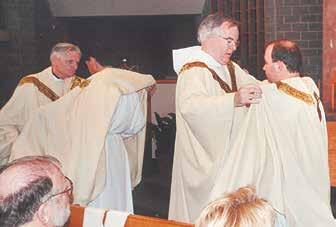
I remember the help I got from those campus ministers as well as the diocesan vocation director and my pastor, Father Frank O’Rourke.
Do you have a favorite saint, devotion or prayer?
It’s very difficult to pick one favorite saint… I was taught about so many while I was growing up, and learned about more of them from Benedictines I knew during formation and men and women I’ve met from other religious orders. I’ve really gained a broad appreciation for all the different saints we have in the Church. One devotion that stands out for me is the devotion to Our Lady of Good Counsel, which I was introduced to through the Augustinian tradition. on their ordination to the Sacred Order of the Diaconate.


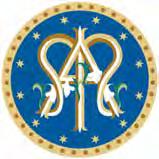

LISA M. GERACI lmgeraci@rcdoc.org
HIGH POINT — Father Baiju Paul Puthussery is celebrating his 25th anniversary as an Oblate of St. Francis de Sales priest. After years spent as a school administrator, he is now living out his priestly ministry as parochial vicar of Immaculate Heart of Mary Parish.
Father Baiju, as he likes to be called, has had some short stints as a diocesan priest, but for the most part, his ministry has been dedicated to education – first as a teacher, then as a principal. Shifting to parish life has been rewarding.
“I did more anointing in the last two years than ever. I didn’t get the opportunity while I was a principal, so I’m happy to do that now,” said Father Baiju, who has been at Immaculate Heart of Mary since 2022.
“It’s nice being on the campus at the school. That brings me total happiness because of my background. It brings me a lot of joy celebrating Mass and seeing all the student activities.”
When he was not teaching, he was learning – earning four master’s degrees from all over the globe in education, sociology, educational management and psychology. Plus, he speaks four languages: English, Malayalam, Spanish and Hindi.
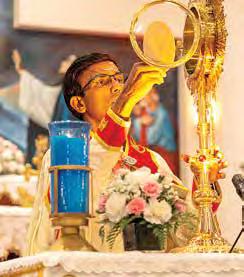
Father Baiju was born in Kerala, India, and baptized as a Syro-Malabar Catholic. India is the most populated country on the globe, with nearly 1.5 billion people, yet only 1.6% or 23 million are Catholic. The tropical state of Kerala, a little larger than Maryland, contains the most Indian Catholics, around 4 million. These Catholics are Syro-Malabar, one of the 23 Eastern Catholic churches. While in communion with the pope, they follow the East Syriac liturgical tradition, which blends
Indian customs with Catholic heritage.
The Sisters of Charity of St. Vincent de Paul, who have been active in education and healthcare in High Point since 2000, are also from Kerala. They quickly discovered Father Baiju’s origins and informed St. Mary’s SyroMalabar Catholic Church in Charlotte.
“The pastor from St. Mary came and visited me and asked, ‘Will you be available when there is a need for confessions or Masses when I’m away?’ I said, ‘Yes, definitely.’ It helps me to stay in touch with the Mass, and then when I go home it’ll be easier because I’m still in touch with my language,” he said.
So, sometimes, Father Baiju, one of the few priests in the diocese able to celebrate in both rites, will dress in his elegant gold SyroMalabar vestments and preside over a Mass at St. Mary’s.
Father Baiju attended Catholic schools all his life, along with his two brothers and four sisters. He felt called to a priestly vocation after watching his uncle, who is a retired diocesan priest, and the other clergy at his school. Although he had never left his home state, he knew he wanted to travel abroad and started exploring avenues within the wider Roman Catholic Church.
“A priest contacted me who was my uncle’s friend. He was looking for candidates for the Oblates of St. Francis de Sales, so I met him, even though I wasn’t sure what all
Congratulations and heart-felt prayers for on the occasion of his Transitional Diaconate Ordination.
DEACON
John Cuppett

Your Saint Leo the Great Catholic Church Family

CHARLOTTE — The Daughters of the Virgin Mother recently marked 10 years of presence in the Diocese of Charlotte.
On May 13, 2015, with the approval of then Bishop Peter Jugis, Sister Mary Raphael started an apostolate in the diocese that aimed to serve the priesthood just as Mary served Jesus.
“Through our baptism and a life of grace, we seek to know what Our Lady knew as daughter of God, the Father,” she said.
Formed in 2015, the Daughters of the Virgin Mother tend to practical and spiritual needs of men preparing for the priesthood, as well as those already ordained. In 2023 it was recognized as a Private Association of the Christian Faithful, one step in the Church’s process of becoming a fully recognized religious community.
Members primarily serve at St. Joseph College Seminary but also work in parishes.
“I suppose these last 10 years could reflect the Annunciation and the life that was given to be nurtured and to bear fruit,” Sister Mary Raphael wrote on their anniversary. “Thank you to eight brave women who came. On my tough days, you are my inspiration, because now you lead me, too. I see your example. I see your generosity, and it calls me higher up and further in. Thank you to the priests of our diocese who have been our fathers, who believed in this endeavor and who have helped form and spiritually guide us. It’s one thing to support a community of 10 years. It’s a very different thing to believe in them from year one.
“My prayer is that in this next decade, we’re going to live out the Mystery of the Visitation. Look at the beautiful things the Lord is doing in His sacred grace.”
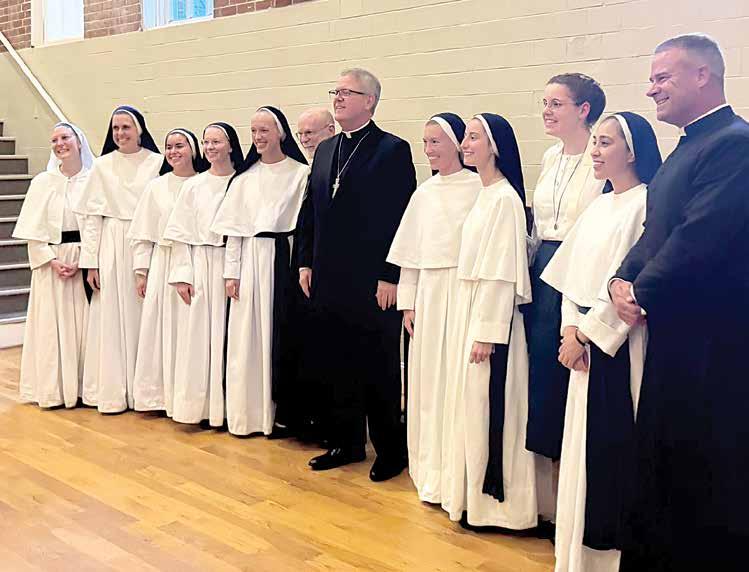
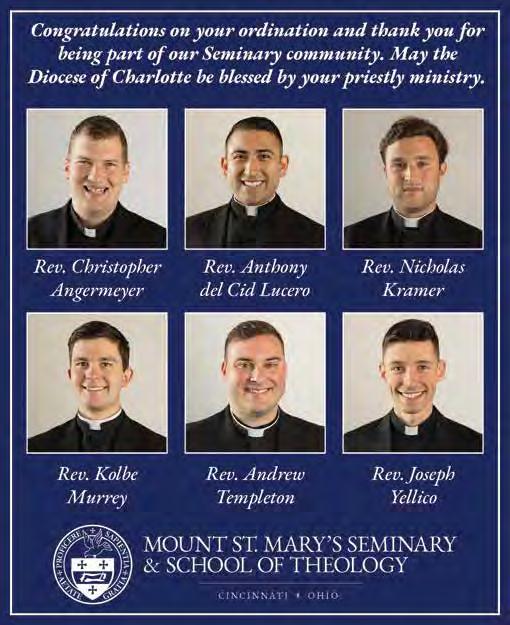


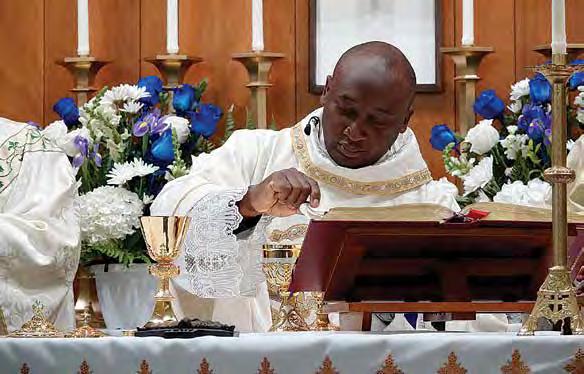

Celebrating a decade in the priesthood: ‘God is good’
WINSTON-SALEM — Father Melchesideck Yumo marked his 10th anniversary of ordination April 27 with a celebration at St. Benedict the Moor Church. After Mass, people from his parish, friends from his former parish of St. Mark in Huntersville, and friends and clergy from his native Cameroon gathered to celebrate Father Yumo’s anniversary and also his birthday. As he said in his homily… and was written on the cake in Spanish: “God is good all the time; all the time, God is good.”
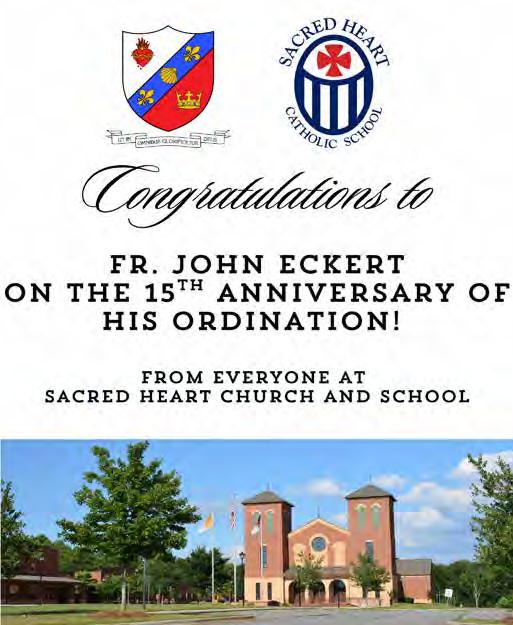

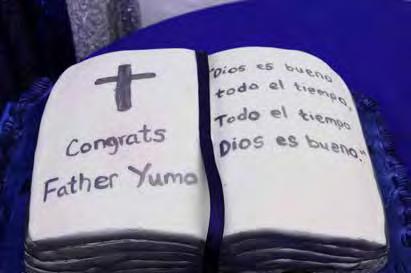

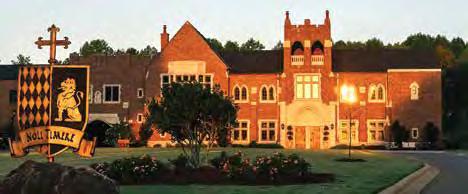

PHOTOS PROVIDED
CLEMMONS — Father Tyozenda Peter Maza celebrated his 10th anniversary of priesthood at Holy Family Parish, where he is the parochial vicar. He was ordained on April 9, 2015, in the Diocese of Buea, Cameroon. He served as campus minister at High Point University in 2023 before being appointed to Holy Family Parish in 2024.
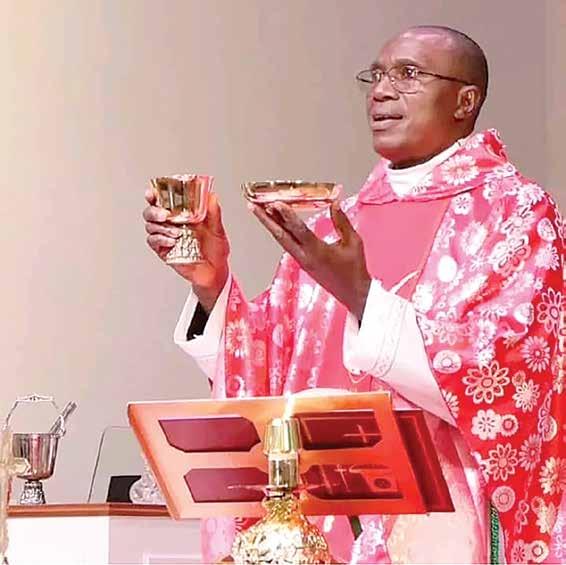
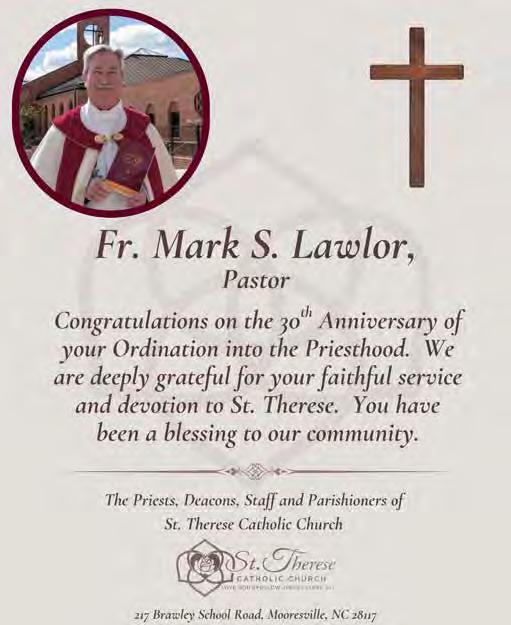
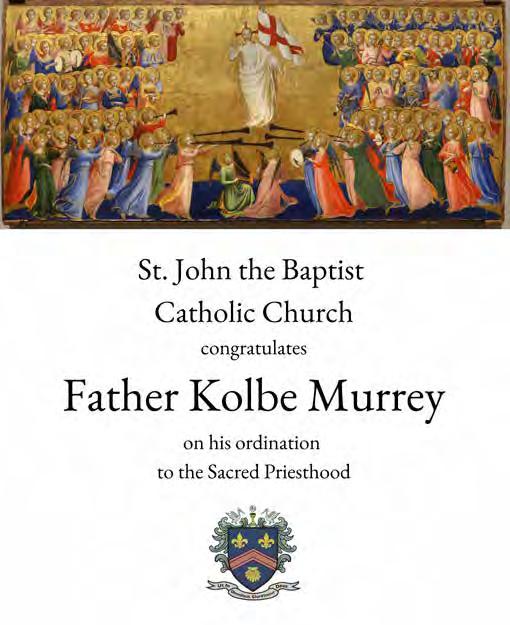
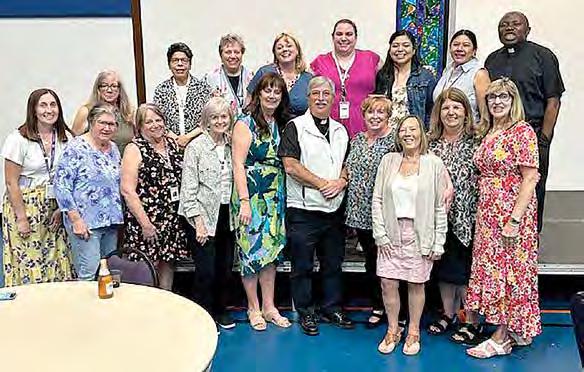


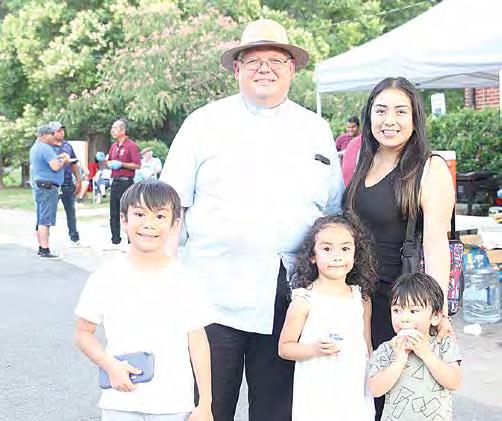

MOORESVILLE — Father Mark Lawlor didn’t plan his anniversary party, but he did have the speech already written and ready to go in his back pocket. That’s because he had been waiting for this opportunity for the past five years. He was ordained on June 3, 1995, but like so many of his brother priests in the diocese, he couldn’t celebrate his milestone 25th anniversary with his parish family because of the pandemic. With his usual optimism, that made the get-together for the 30th anniversary of his priesthood twice the fun. Father Lawlor loves potlucks and enjoyed one with 200 of his closest friends from St. Therese. This is his eighth year serving as pastor, and he has been enjoying every bit of his ministry, loving Mooresville and his parish family.
PHOTOS PROVIDED

MONROE — While people tend to focus on the landmark anniversaries, parishioners across the diocese often take the time to mark the smaller but no less important milestones of the clergy who inspire and lead them. At Our Lady of Lourdes Parish in Monroe, parishioners held a “Sweet 16” picnic-style party for their pastor, Father Benjamin Roberts. On June 6, parishioners brought blankets and lawn chairs and enjoyed hamburgers and hot dogs to honor the happy occasion.

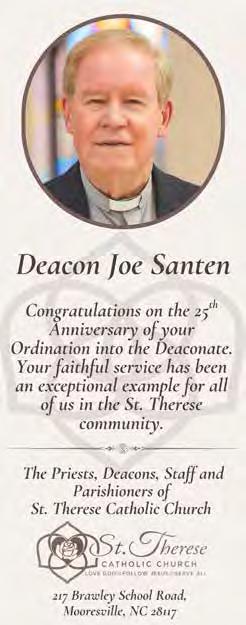




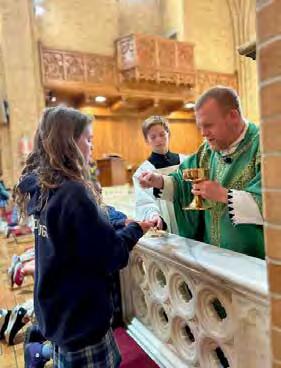
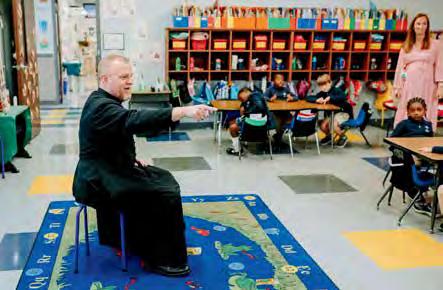
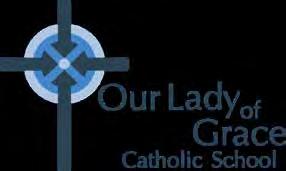










Please pray for the repose of the souls of these clergy and religious who have died since June 2024:
n Deacon Carl Warner Hubbell Sr. passed away April 9, 2025, aged 91. Ordained in 1991, he led a life characterized by service, devotion and love, contributing significantly to his community and the two churches where he served for decades: St. William in Murphy and Immaculate Heart of Mary Mission in Hayesville.
n Father John J. (Jack) Kelly, OSFS, 80, passed away Dec. 3, 2024. He was professed with the Oblates of St. Francis de Sales for 61 years and a priest for 53 years. The former pastor of Immaculate Heart of Mary Parish in High Point encouraged people to embrace Salesian spirituality and “Live Jesus!”
n Monsignor Anthony J. Marcaccio, 61, passed away July 19, 2024, following complications from a rare cancer. He served in priestly ministry for 33 years, with more than two decades of that time as the beloved pastor of St. Pius X Parish in Greensboro, where he led church renovations and fostered a strong parish community. He was known for his leadership, sense of humor, and dedication to stewardship.
n Mercy Sister Jeanne Margaret McNally, a widely respected educator, psychologist, nurse and canon lawyer, passed away July 6, 2024. A Sister of Mercy for 75 years, she served in numerous ministries, including teaching at Belmont Abbey College and providing psychological services and spiritual direction.
n Mercy Sister Bernadette McNamara, a Sister of Mercy for 73 years, passed away Dec.
16, 2024. She served in various roles, including educator, pastoral minister and administrator. She was the CEO and president of Catherine’s House, a transitional home for women and children experiencing homelessness.
n Mercy Sister Ray Maria McNamara, 76, passed away Dec. 22, 2024. She was a gifted ministry leader, theologian, hospital administrator, former principal of St. Patrick School in Charlotte, as well as mission advancement and formation leader for the Sisters of Mercy community in Belmont.
n Deacon Robert T. Murphy passed away May 16, 2025, aged 84. Ordained in 2006, he was a dedicated deacon who served St. Mark Parish, particularly Hispanic Ministry as well as general parish and outreach ministries, with unwavering faith and commitment.
n Mercy Sister Mary Andrew Ray, a respected educator, passed away Feb. 8, 2025. Known for her commitment to academic excellence and her deep faith, she touched countless lives teaching at various Catholic schools in North Carolina and serving in leadership roles with the Sisters of Mercy.
n Monsignor Joseph Showfety, a founding father of the Diocese of Charlotte, passed away March 24, 2025, in High Point. He was 98.
n Mercy Sister Mary Robert Williams passed away Dec. 26, 2024, at the age of 92. A beloved Sister, educator, pastoral minister and spiritual leader, she dedicated her life to serving others, embodying compassion and kindness throughout seven decades of ministry.

— Catholic News Herald
Congratulations to our beloved seminarians on your recent diaconal and priestly ordinations! We are overjoyed to have played an integral role in your formation as Charlotte’s deacons and priests.
We celebrate with you and look forward to experiencing His strength, wisdom, and inspiration in your faithful and pastoral care.
MAY GOD BLESS YOU AND YOUR MINISTRY TO THE CHARLOTTE DIOCESE!
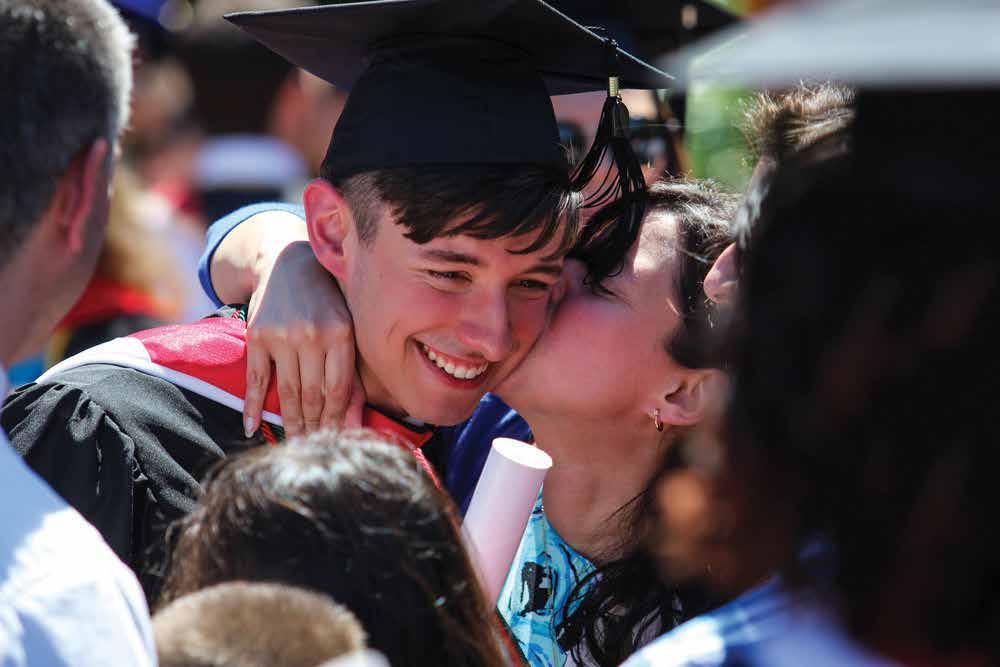
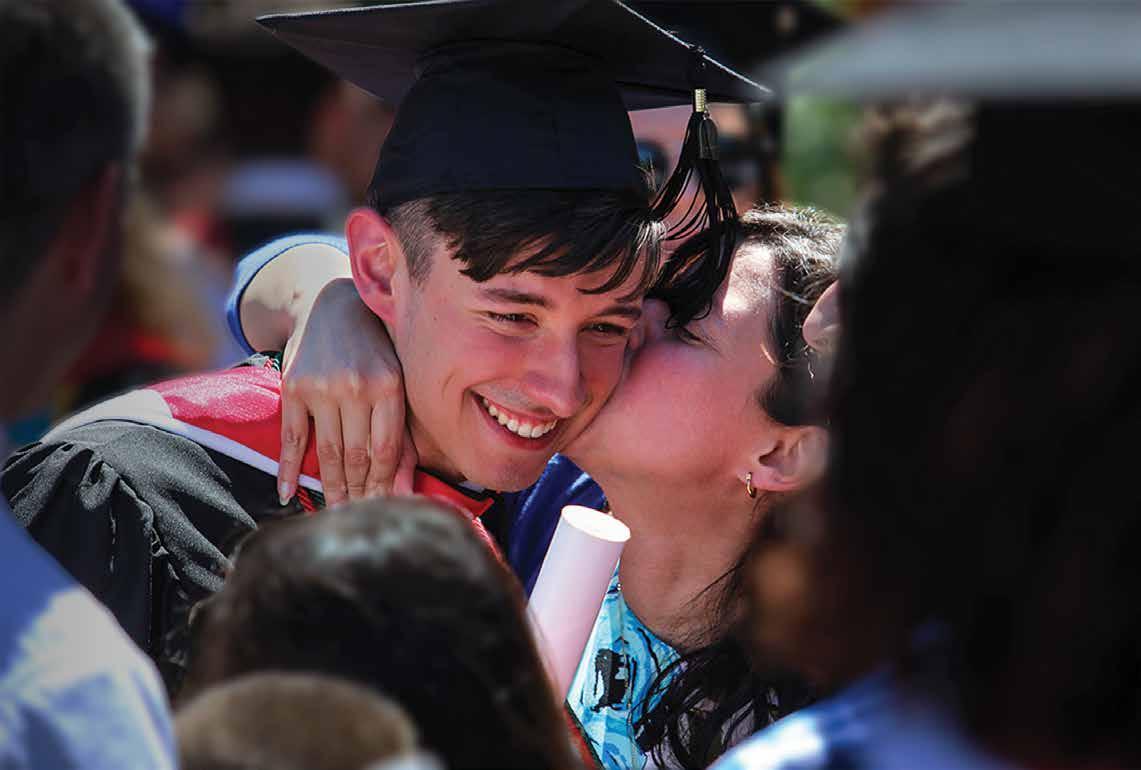
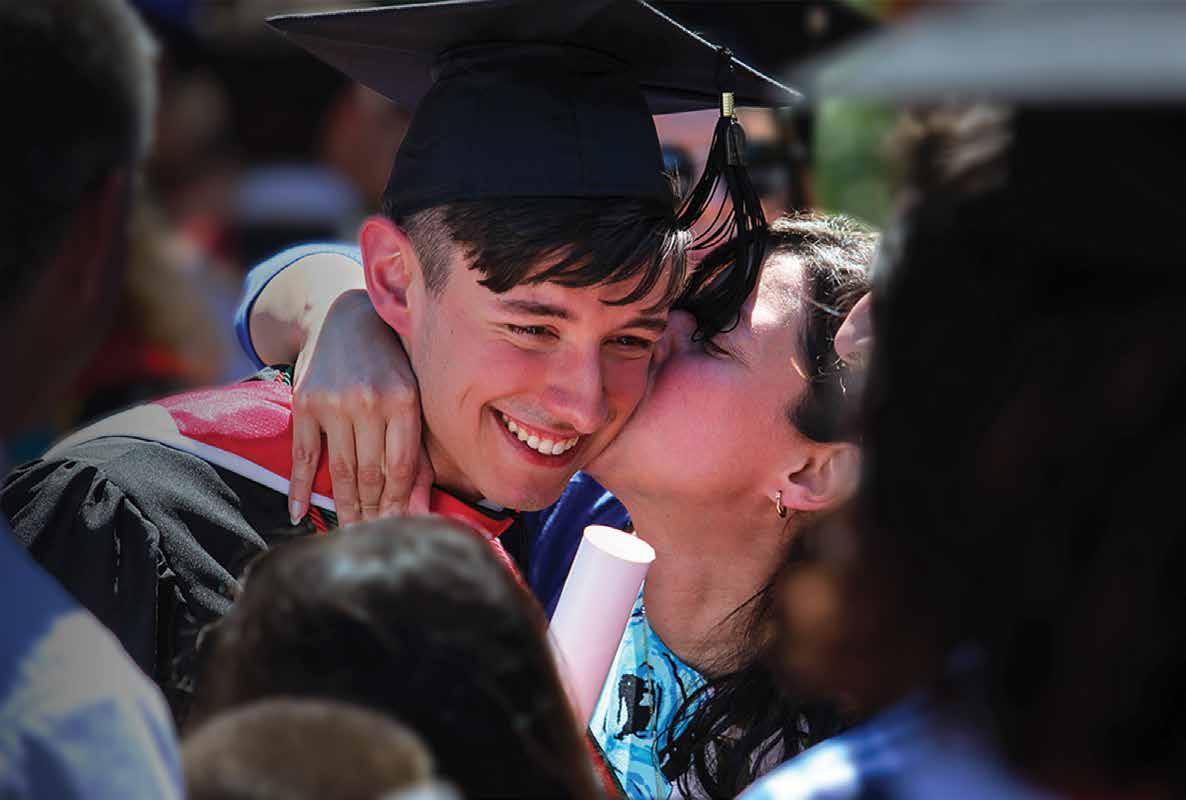
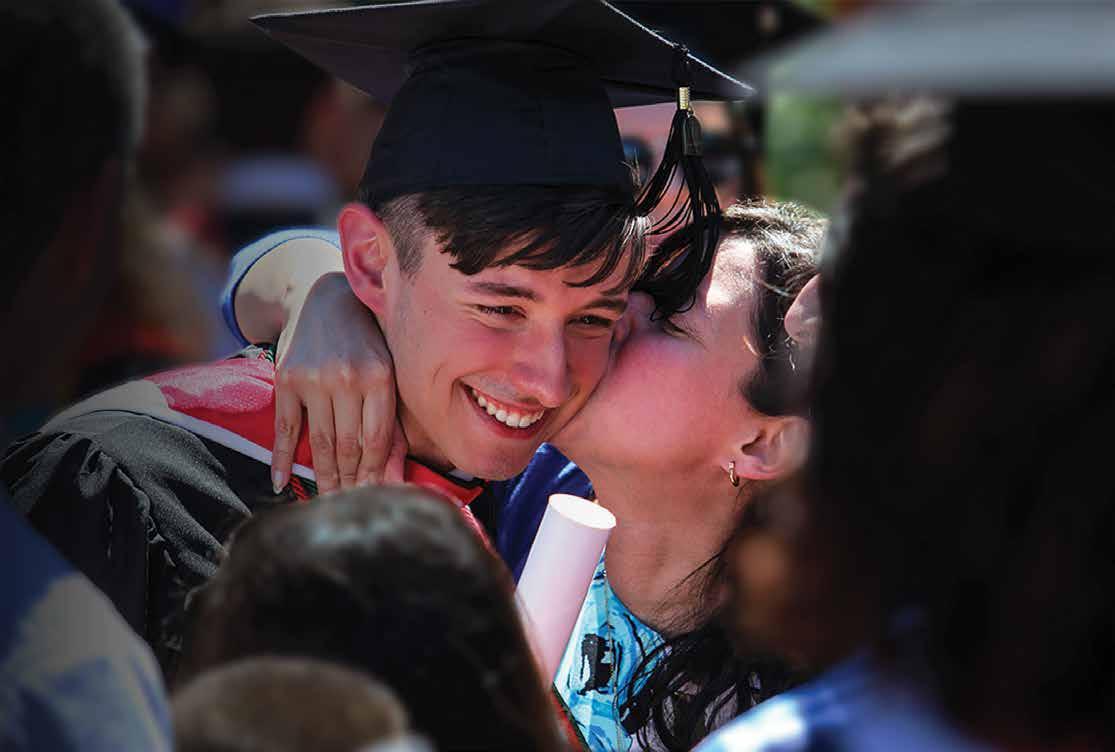
Our seminarians’ education is possible thanks to the generosity of parishioners who give to the annual Diocesan Support Appeal, through Seminarian Education second collections in November and on Easter Sunday, distributions from seminarian endowments held in the diocesan foundation, and those who contribute gifts to the Seminarian Education Campaign.
The Foundation of the Roman Catholic Diocese of Charlotte also has 34 endowments designated for seminarian education, totaling over $25 million:
n Monsignor Thomas Burke Seminarian Endowment Fund
n Beatrice A. Chase Endowment Fund
n Teresa Loh Jui Choon and Alexander Sim Seminarian Education Endowment Fund
n Conklin Endowment Fund
n Loraine Cox and C. Richard Cox Seminarian Education Endowment Fund
n Doris and Walter Dietrich Endowment Fund
n Di Pietro Family Endowment Fund
n Mr. A. Steven and Dr. Donna S. Ellington Endowment Fund
n Fabrey Endowment Fund
n FFHL Vocation and Seminarian Support Endowment Fund
n James and Elizabeth Hedgecock Seminarian Endowment Fund
n Dick Kelly Endowment Fund
n Knights of Columbus Council #770 Seminarian Support Endowment Fund
n Seminarian Michael G. Kitson Memorial Endowment Fund
n Lee Endowment Fund
n Don and Teresa Meanor Endowment Fund
n John and Marianne Polickoski Endowment Fund
n Priests Support Endowment Fund
n William E. Rabil, Sr. and Rosalie Daye Rabil Family Endowment Fund
n Reverend Timothy S. Reid Endowment Fund
n Eugene and Carmen Rossitch Endowment Fund
n Edward C. and Joan F. Ruff Seminarian Endowment Fund
n Matthew Scheible Endowment Fund
n Dr. Marvin L. Schrum and Paula B. Schrum Education Endowment Fund
n Seminarian Assistance Endowment Fund
n Seminarian Education Endowment Fund
n Abdou J. and Edna S. Showfety Seminarian Education Endowment Fund
n Stephen D. Showfety Endowment Fund
n Judith and Michael Simac Endowment Fund
n St. Lawrence Council (1695) RSVP Endowment Fund
n St. Lucien Catholic Church Seminarian Scholarship Endowment Fund
n Father Wilbur Thomas Memorial Endowment Fund
n Valentine Family Seminarian Education Endowment Fund
n Vocations Endowment Fund
Each year, people also have the opportunity to celebrate the faithful service of our retired diocesan priests, as well as show gratitude to the priests currently serving in the diocese, by contributing to the diocese’s Priests’ Retirement and Benefits second collection.
— Catholic News
Herald
FOR INFORMATION ABOUT establishing an endowment for seminarian education or priests’ retirement, contact Gina Rhodes at 704-370-3364 or gmrhodes@rcdoc.org.
FROM PAGE 25B
an Oblate was at the time,” Father Baiju said. He joined the OSFS in July 1990. During a year of postulancy, he found the order to be very down-to-earth and humble. St. Francis of de Sales always said, “Be who you are and be it well,” and that was exactly what he aspired to do. He enjoyed the “Live Jesus” motto and the charism dedicated to simplicity, love, patience and joy.
For his novitiate, he traveled on a plane for the first time to Namibia, Africa.
“I was only 19. It was a culture shock. It was the first time I was out of my state and out of my country, my first time flying, and the first time experiencing a different culture. The language, the food, everything was different,” he said.
The remnants of apartheid were still lingering in Namibia. The segregation and huge discrepancy between the very rich and severely impoverished had similarities to the caste system in India.
Afterward, Father Baiju went to Bangalore, India, and was ordained an Oblate priest in 2000. He served as a parochial vicar in Kerala while furthering his education. He then moved to the United States to pursue a master’s in education at DeSales University in Center Valley, Pennsylvania.
“The first year was difficult. It was very
cold compared to the Kerala tropics, and even though I spoke English fluently, the American way of talking took time to get used to,” he said.
Upon his graduation, he became a sixthgrade teacher and then a high school teacher at Salesianum School, an all-boys school in Wilmington, Del. In the summer months while he was in America, he traveled the country, informing Catholic congregations about the mission of the Oblates of St. Francis de Sales.
“I traveled to over 100 different places like Nebraska, Kentucky and California,” said Father Baiju. “It was a different experience everywhere I went. They were not very exciting places, but at the same time I could see the country far and wide – lots of cornfields.”
In 2009, the congregation sent Father Baiju to start De Sales Academy in Bangalore, India, as principal. He opened the school in 2011 with only 38 students. One of his proudest accomplishments was growing the school to 1,400 students by its eighth year.
It was then he received a phone call from his former dean of students and friend, Oblate Father Peter Leonard of IHM, asking him if he wanted to become a pastoral priest here in North Carolina
Father Baiju quickly said yes and, so far, he loves it.
“I’m happy here in North Carolina,” said Father Baiju. “I can deal with a lot of older people, the sick, funerals and weddings. I’m on campus with a school that also brings a lot of joy.”
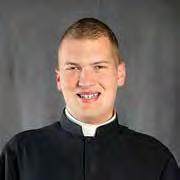

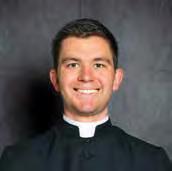
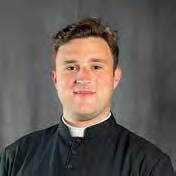

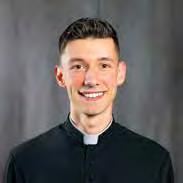
“If some of you hear the call to follow Christ more closely, to dedicate your entire heart to Him, like the Apostles John and Paul...
...because you have nothing to fear when the prize that you await is God Himself, for Whom, sometimes without ever knowing it, all young people are searching.” be generous, do not be afraid, - Saint John Paul II

Father Christopher Gober Director of Vocations (704) 370-3353
1123 South Church Street Charlotte, NC 28203-4003
vocationsmail@rcdoc.org

